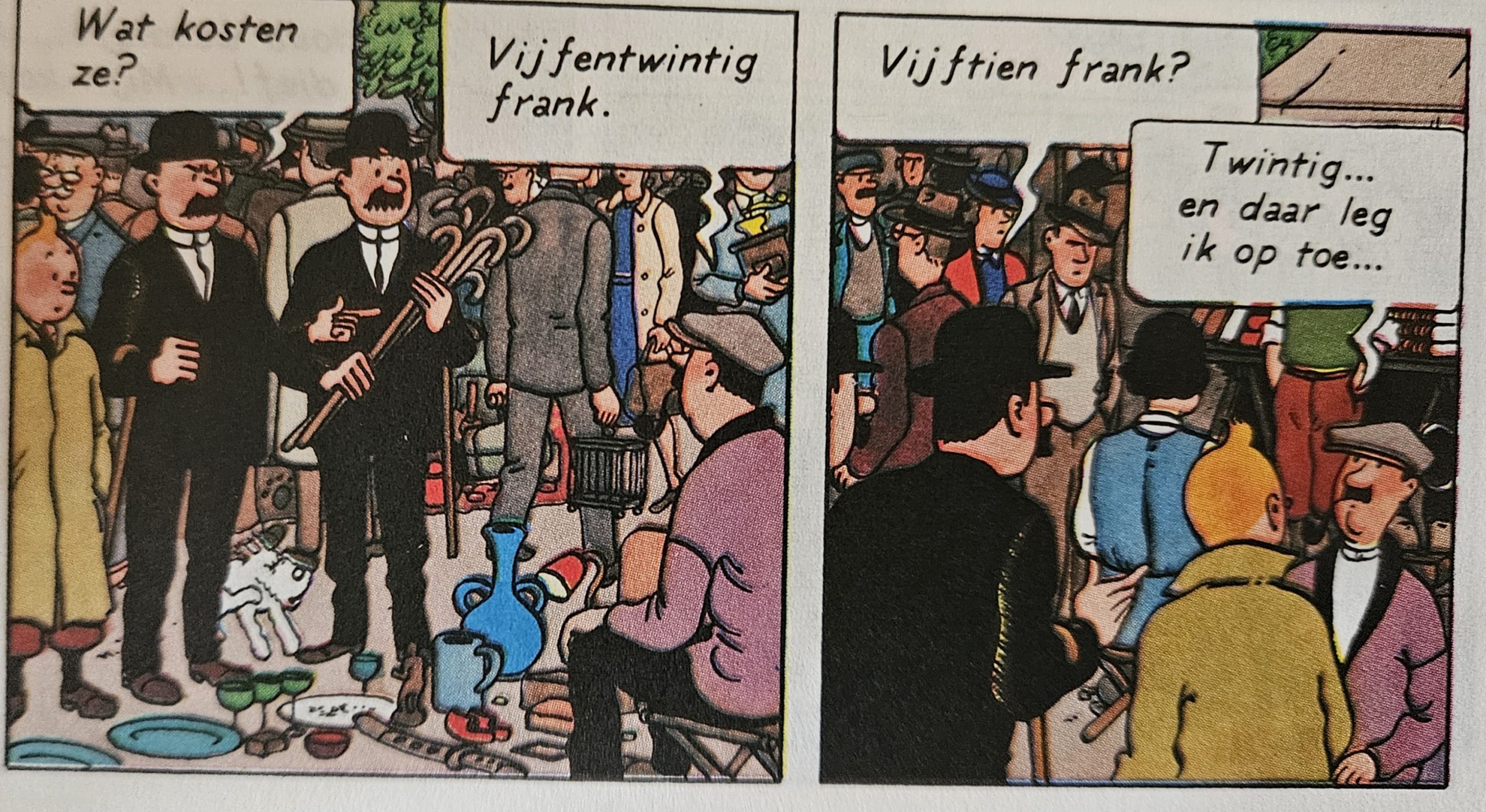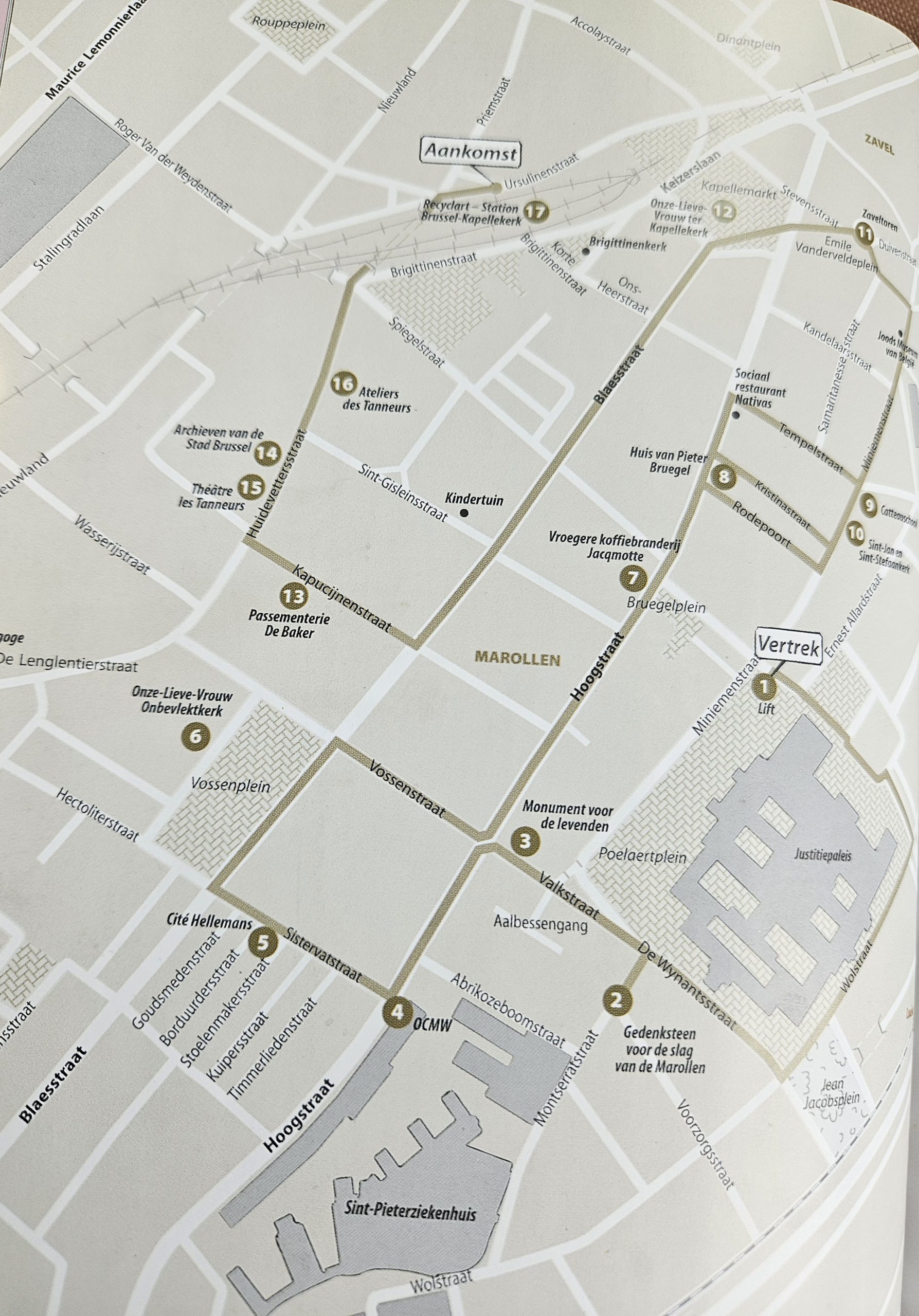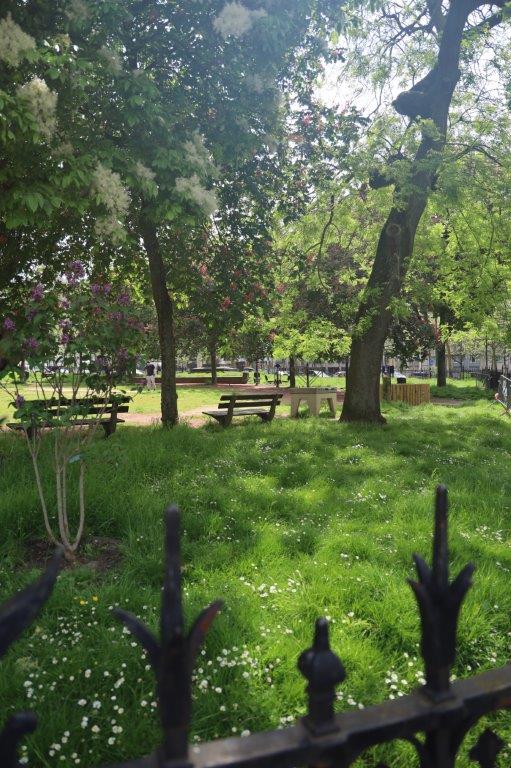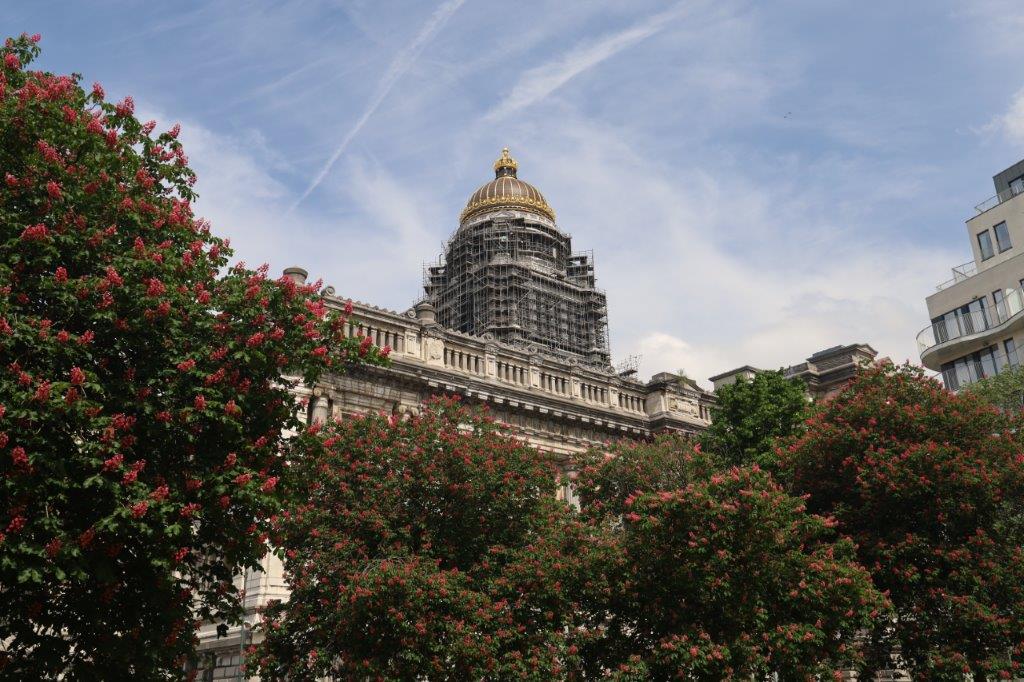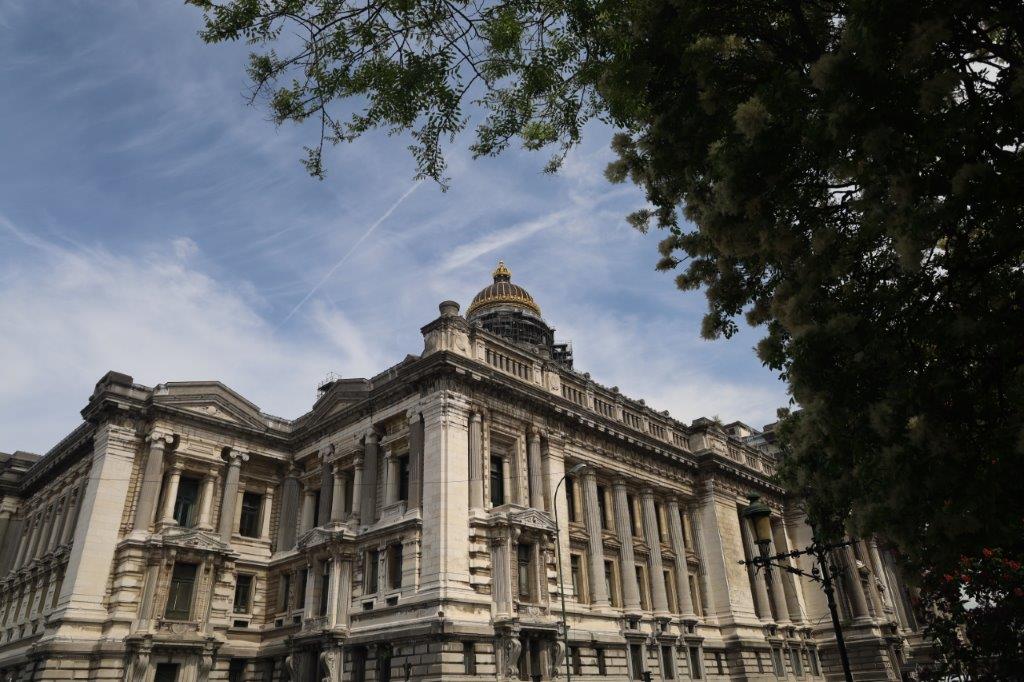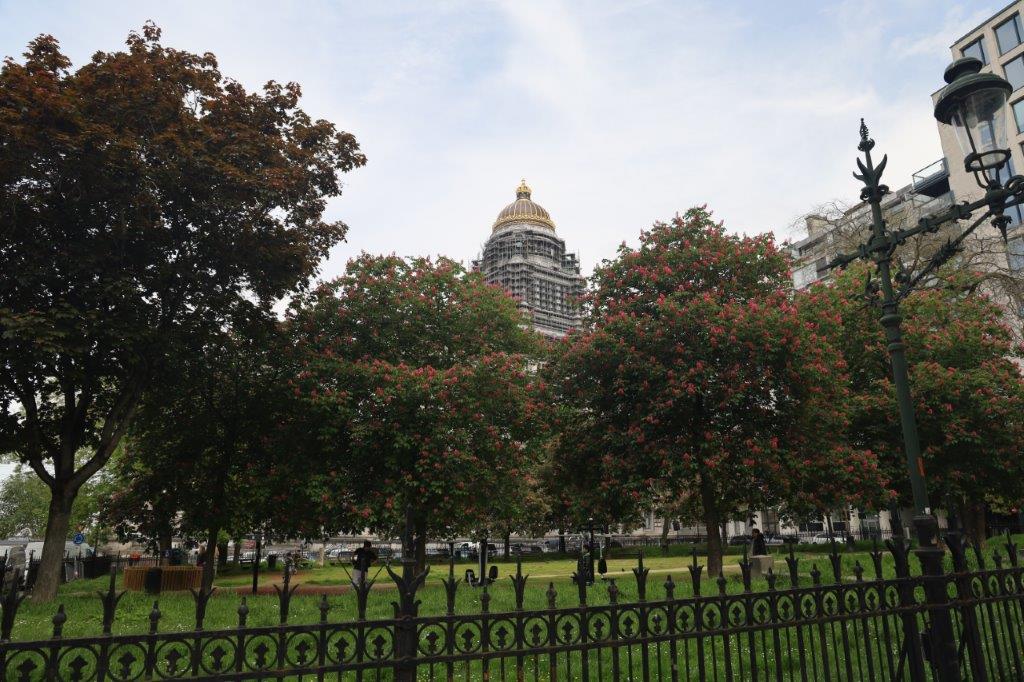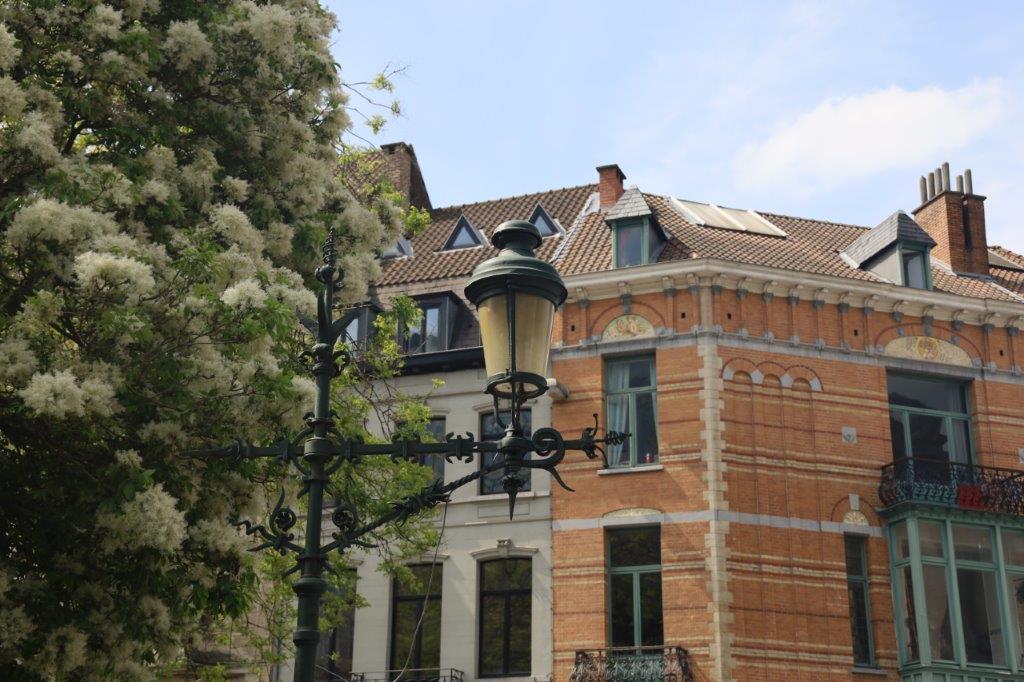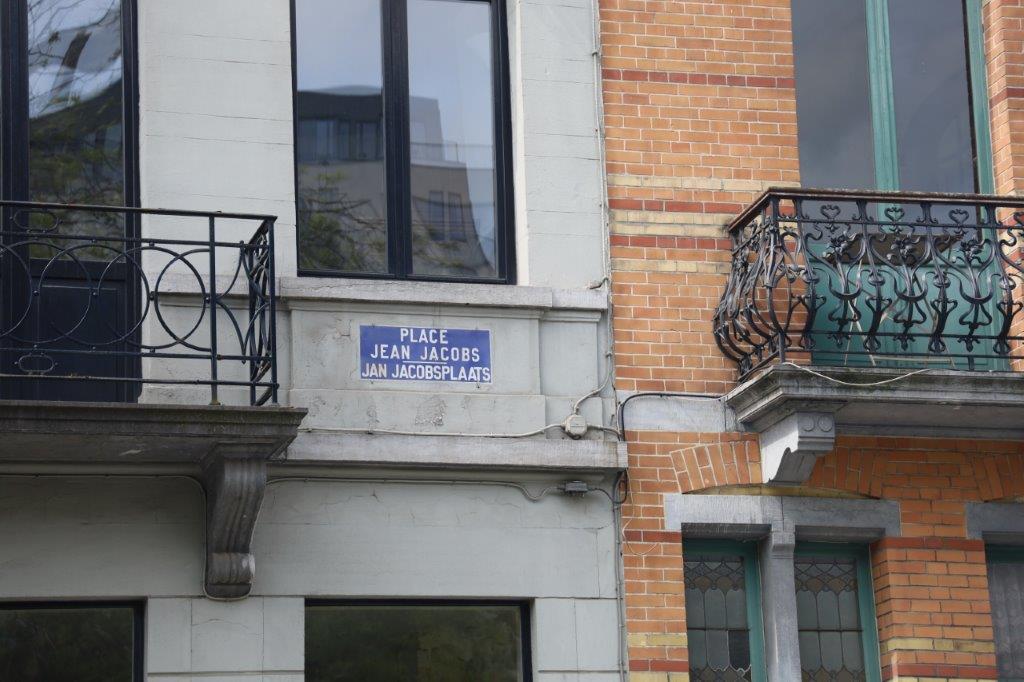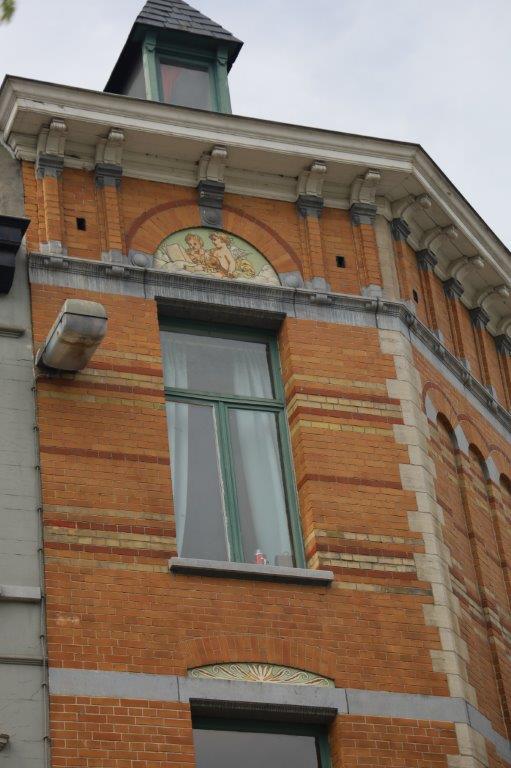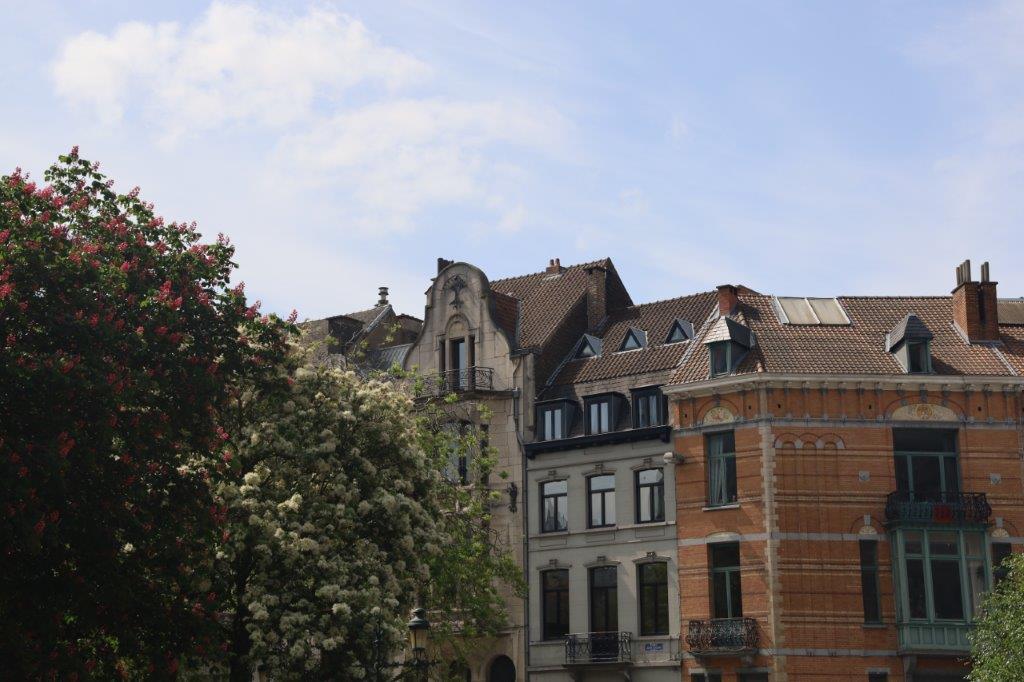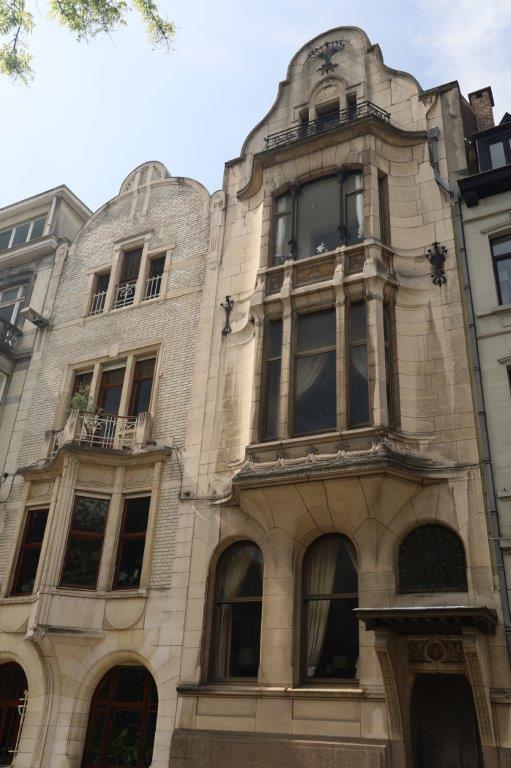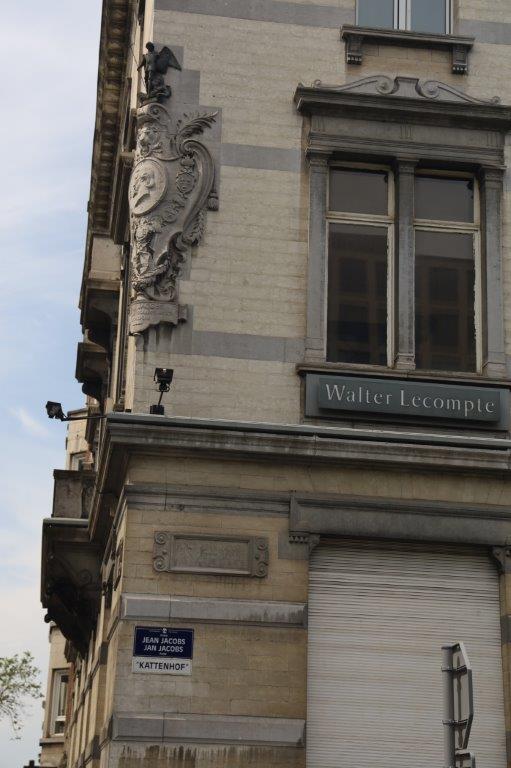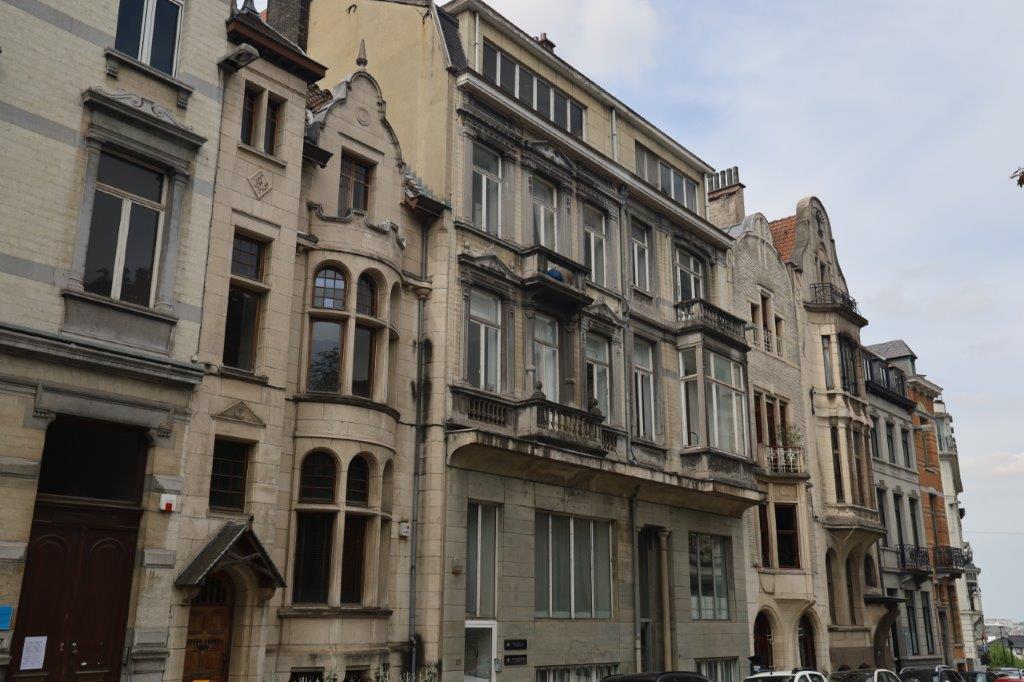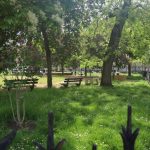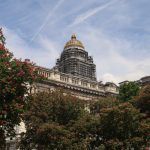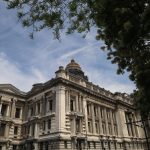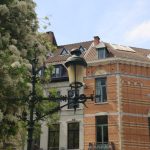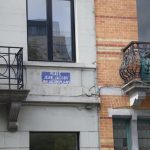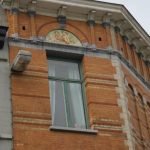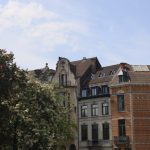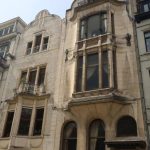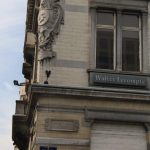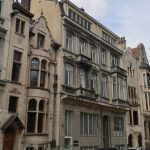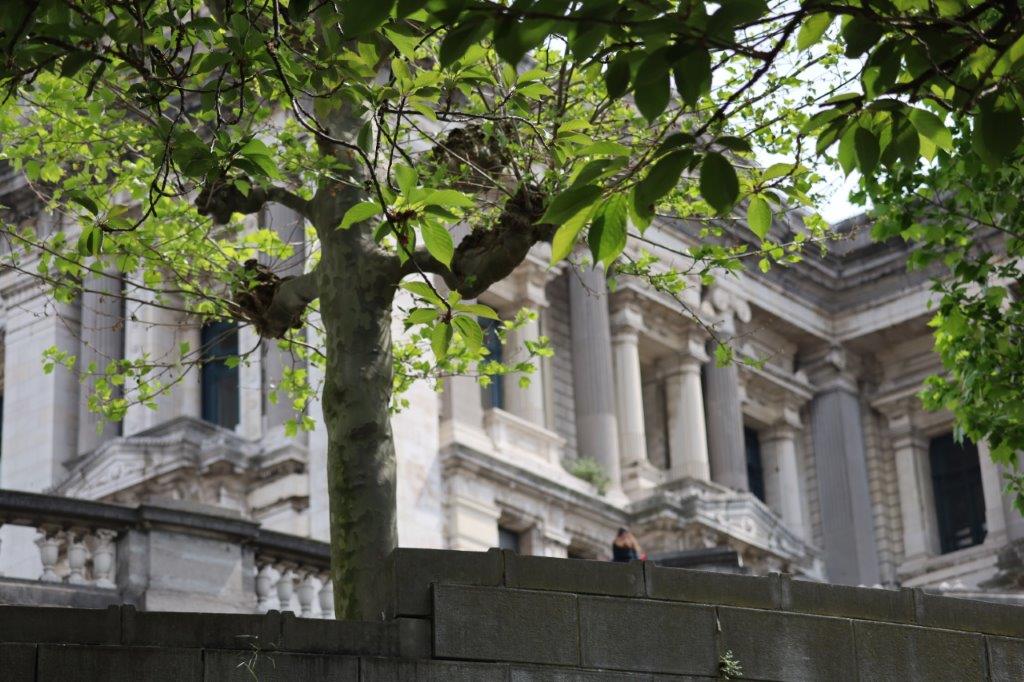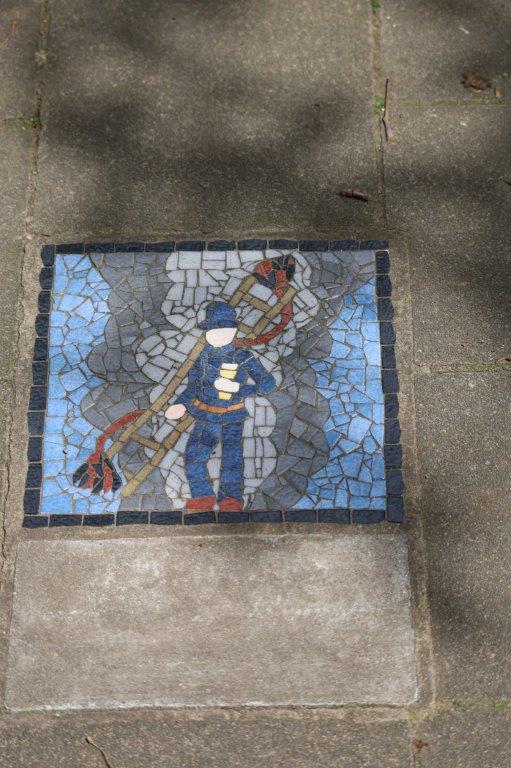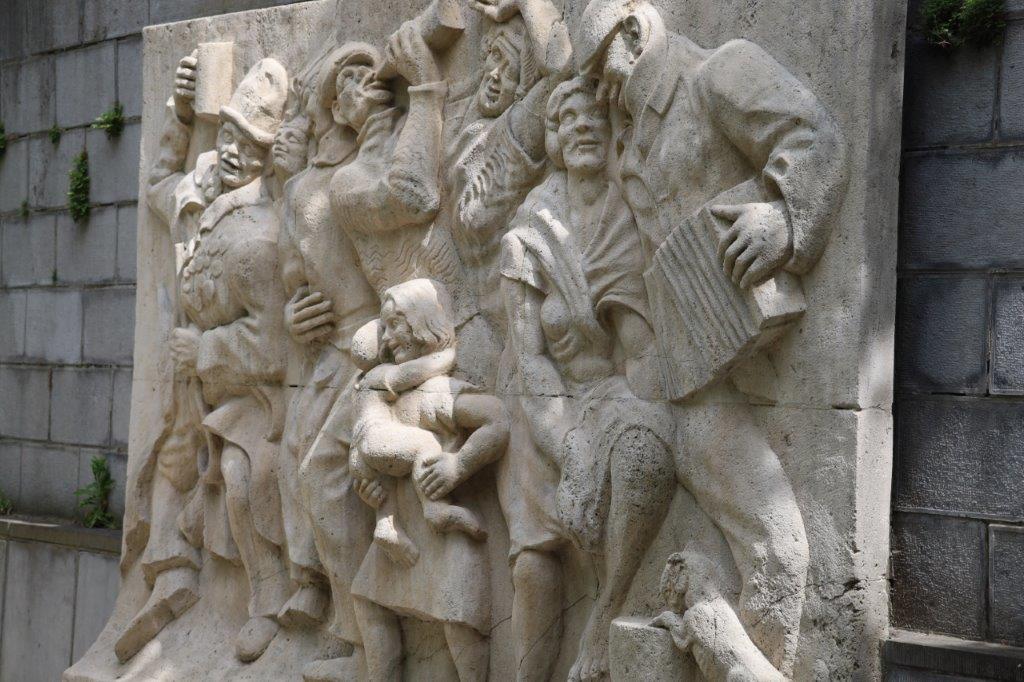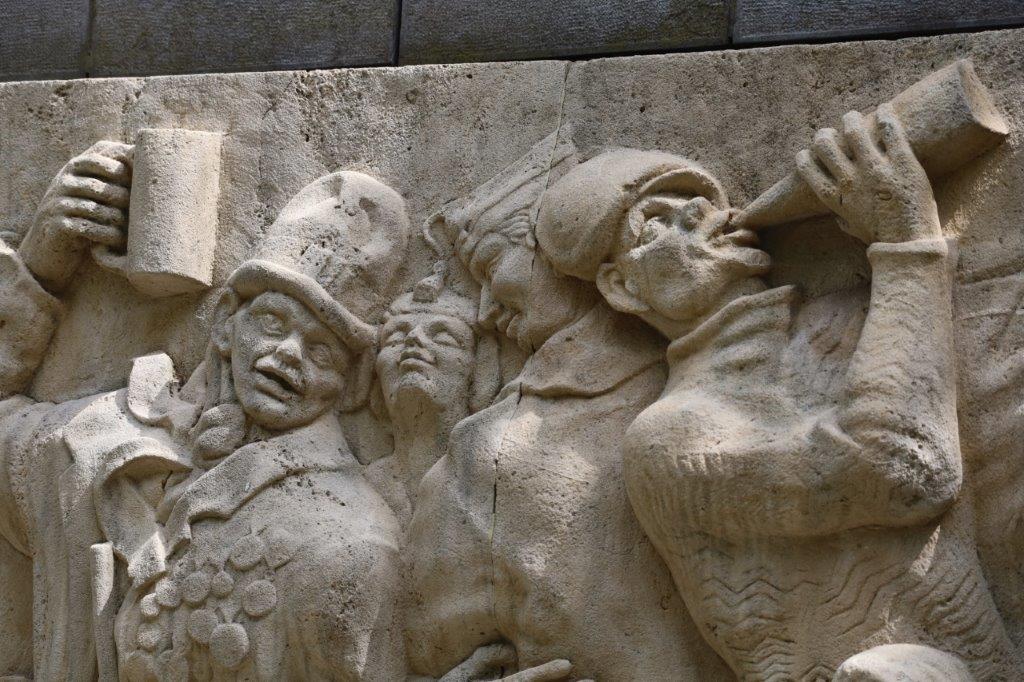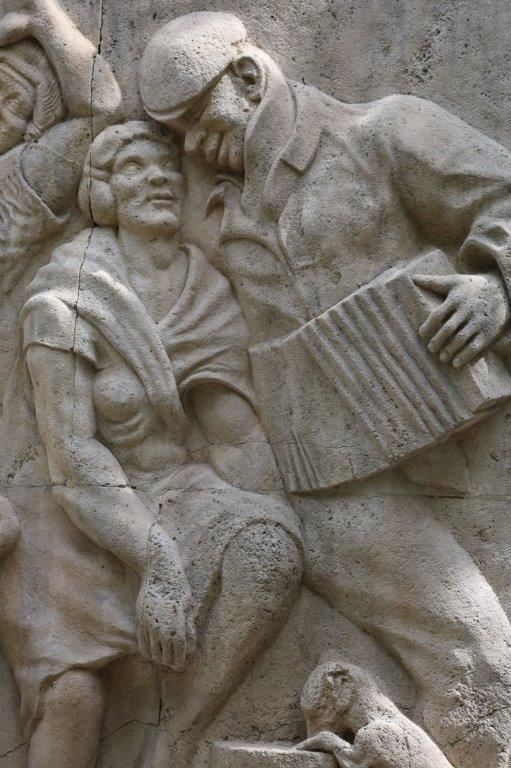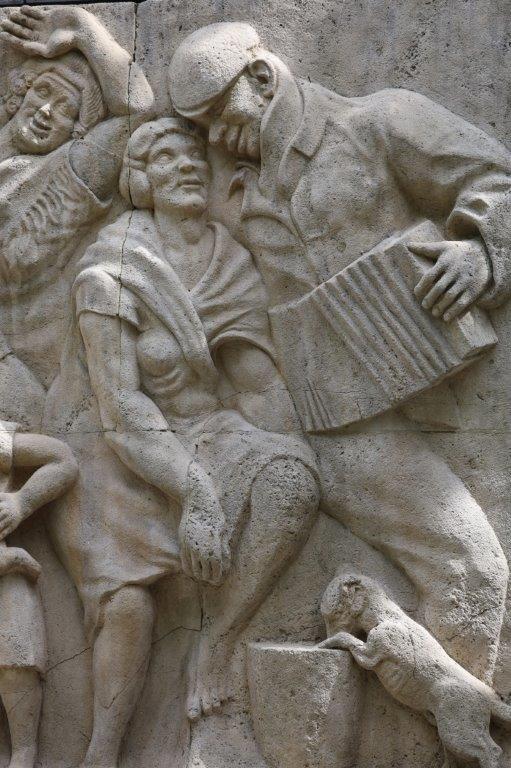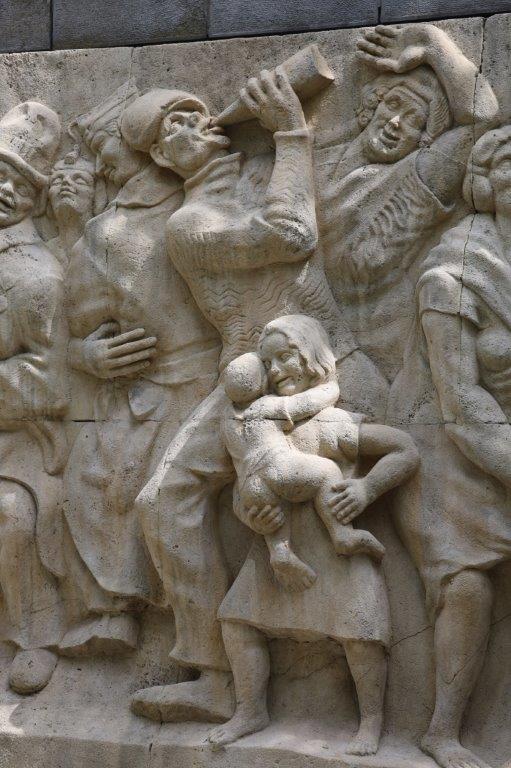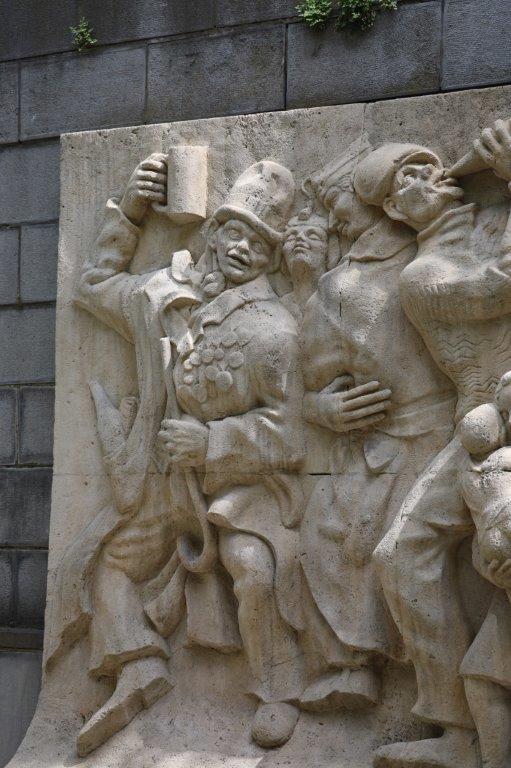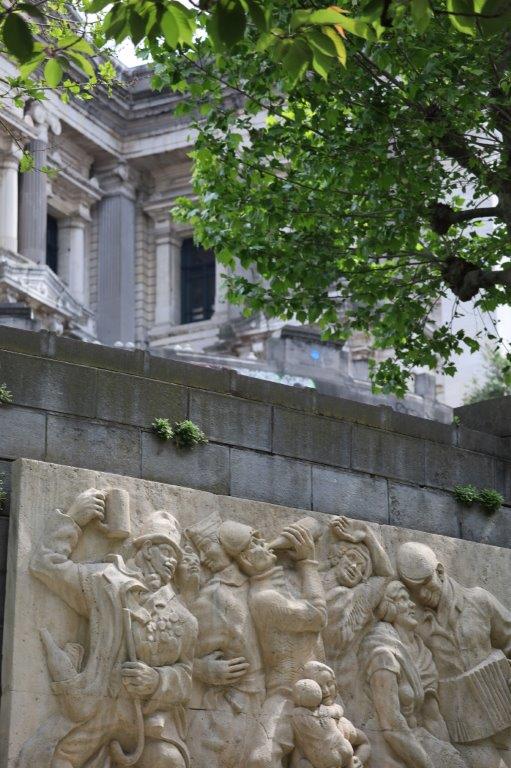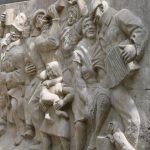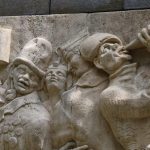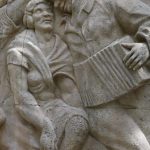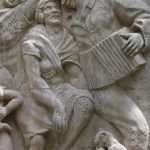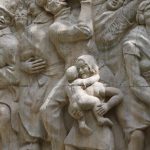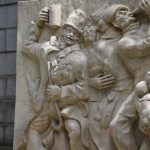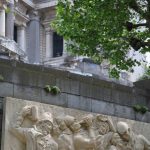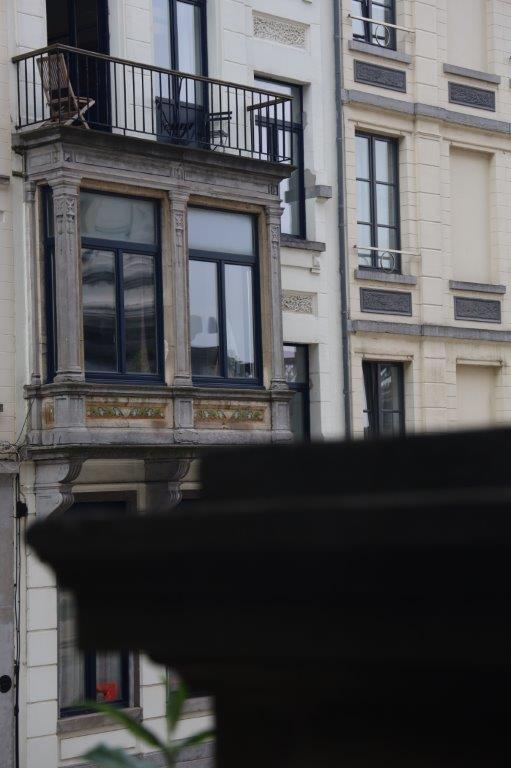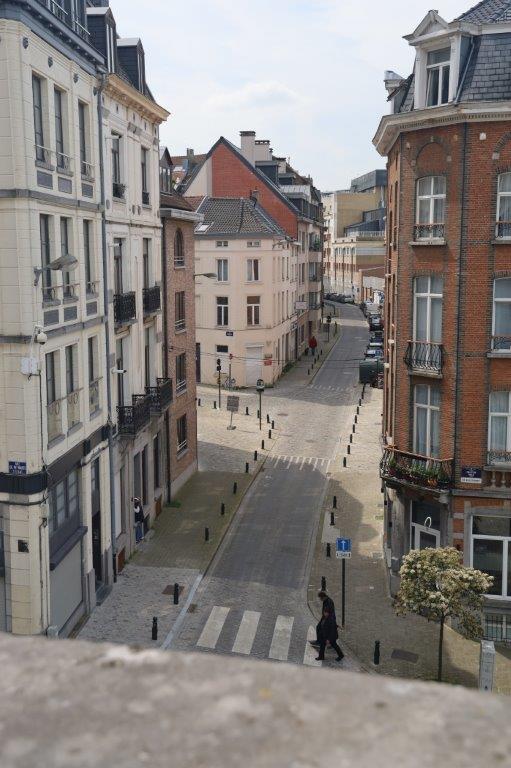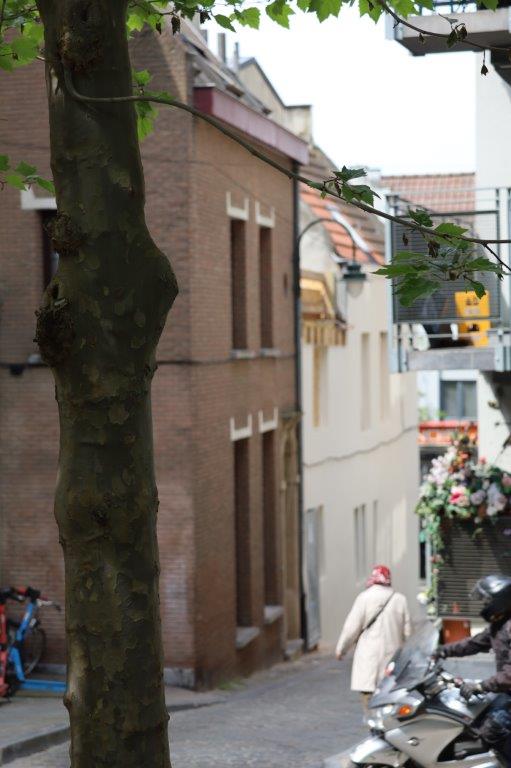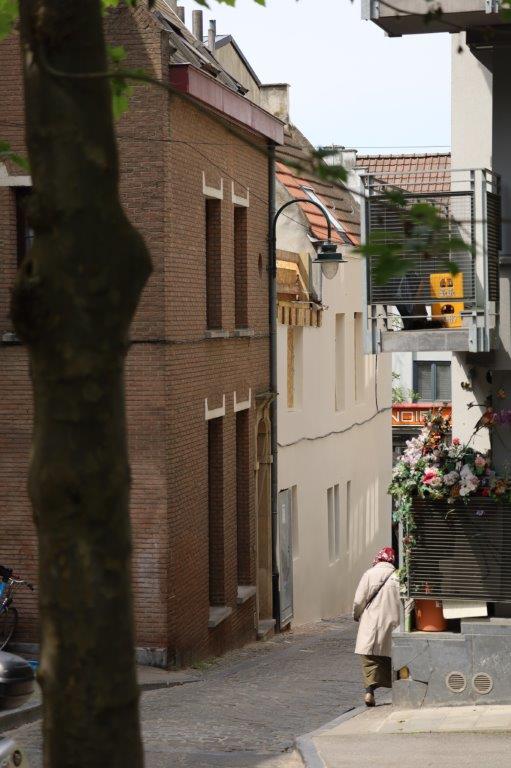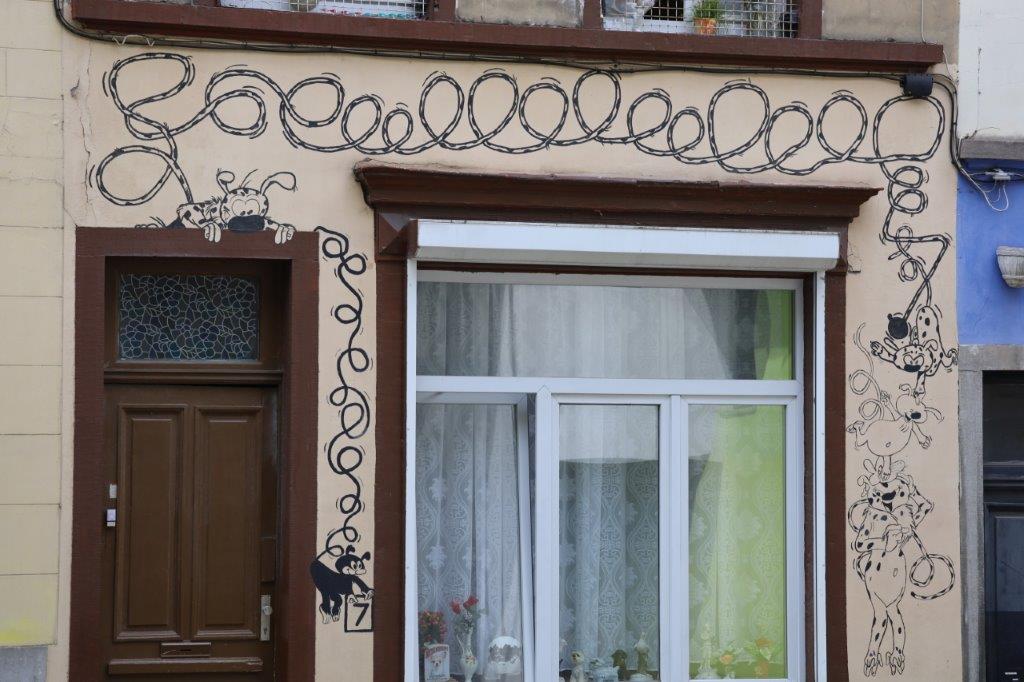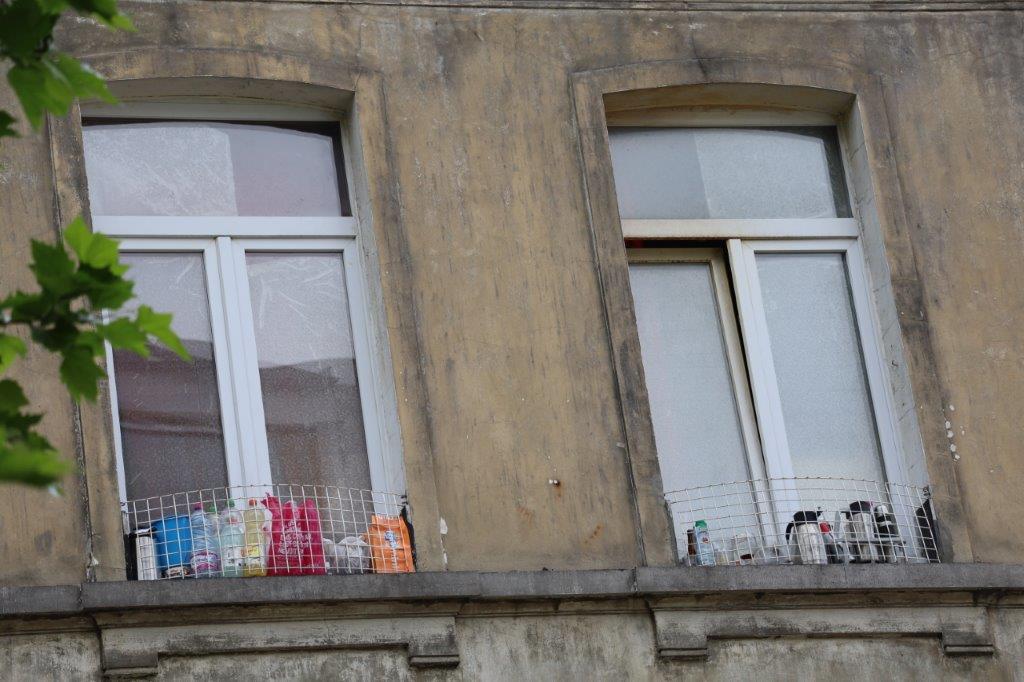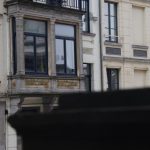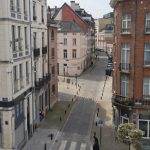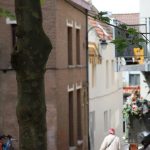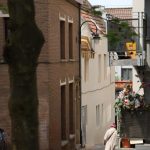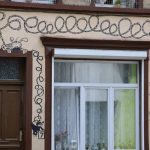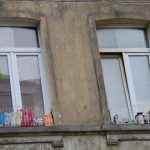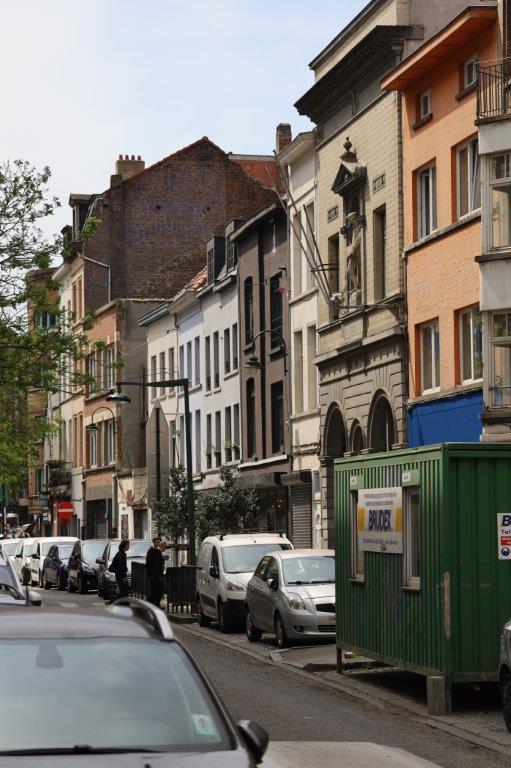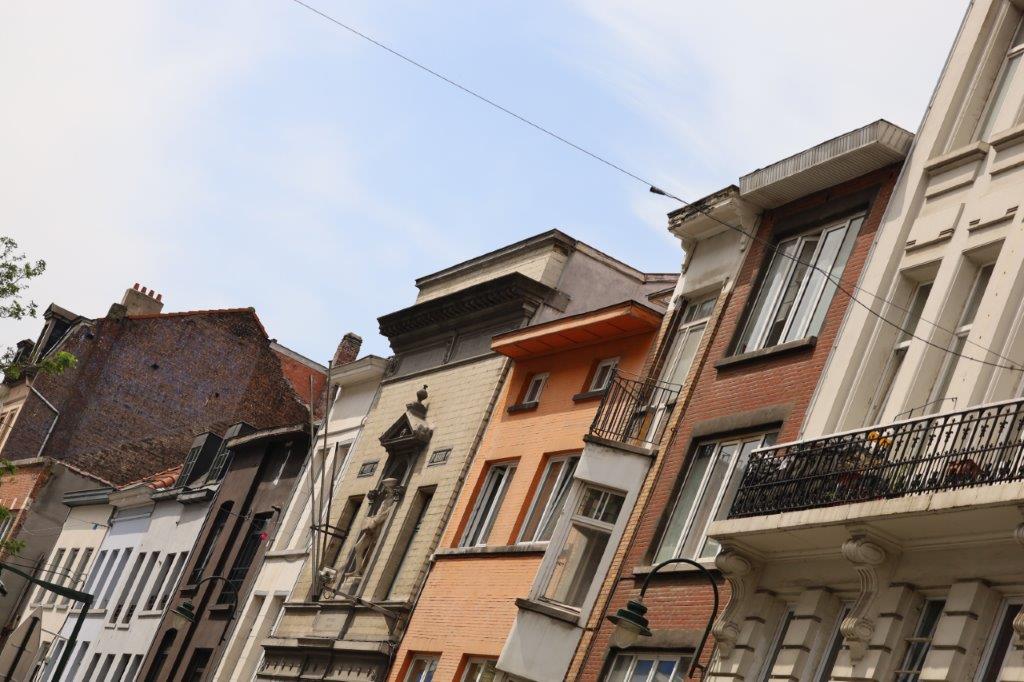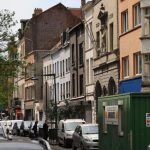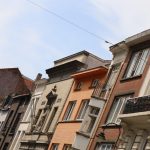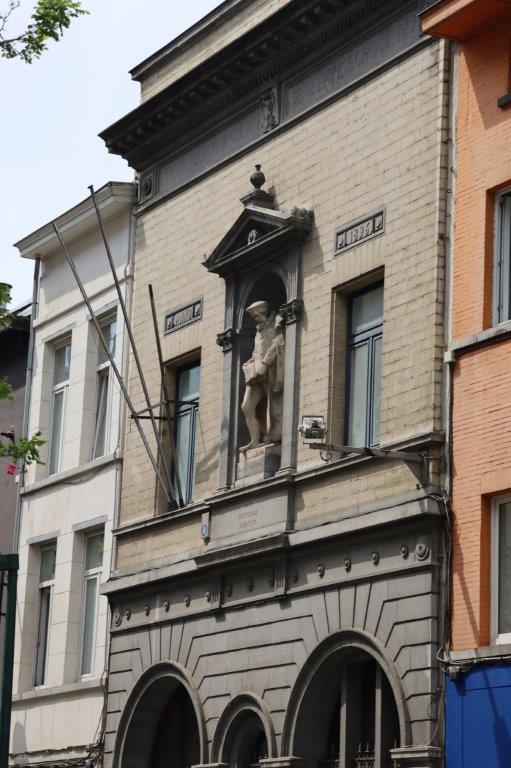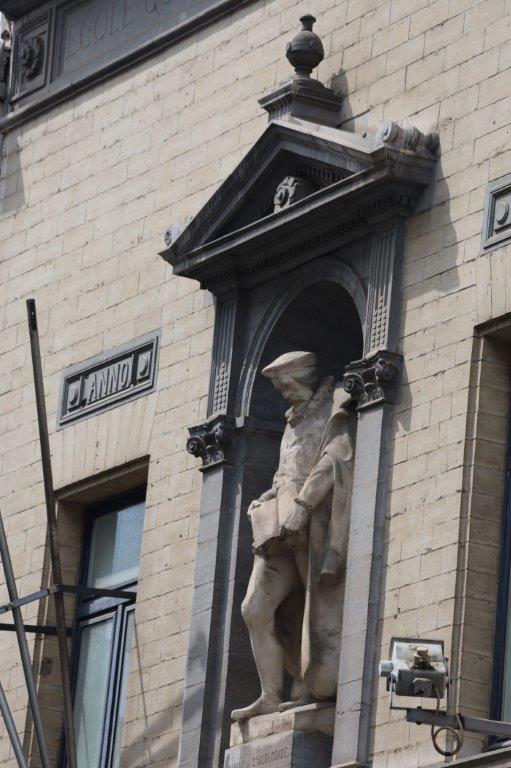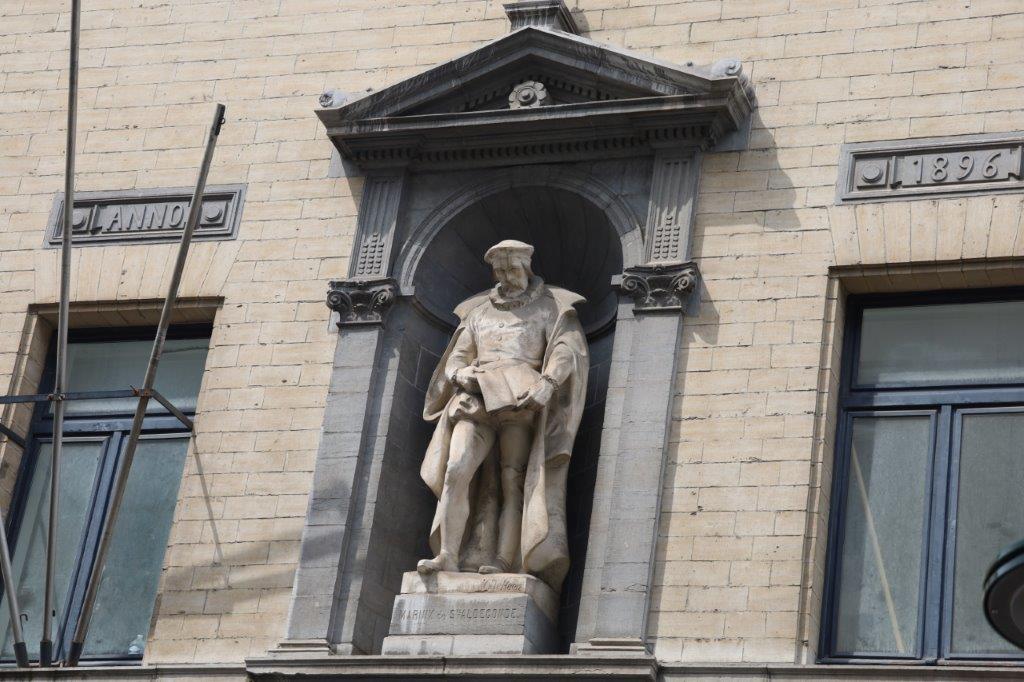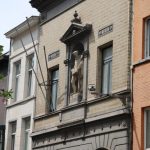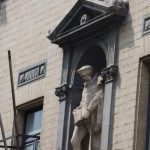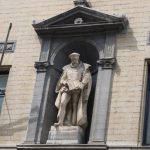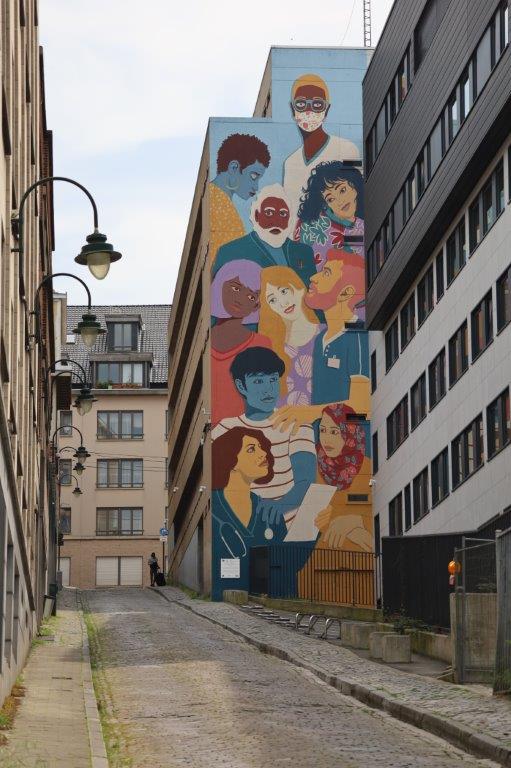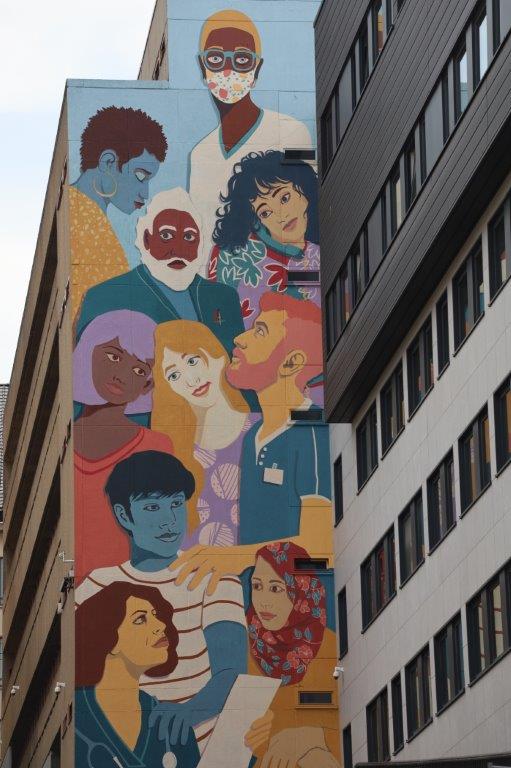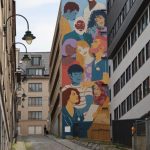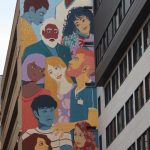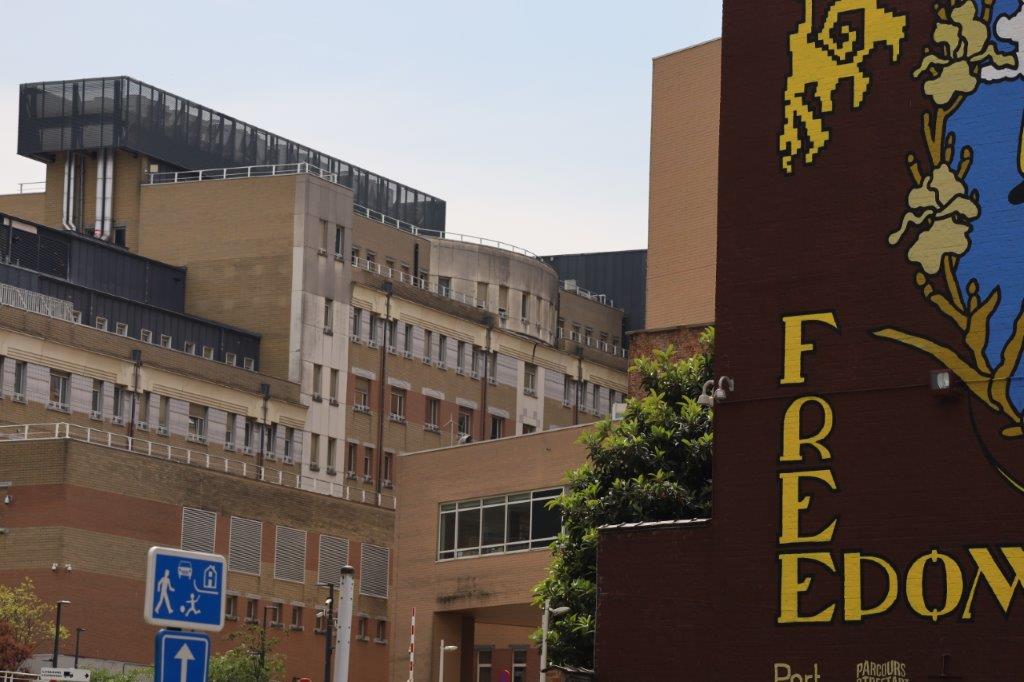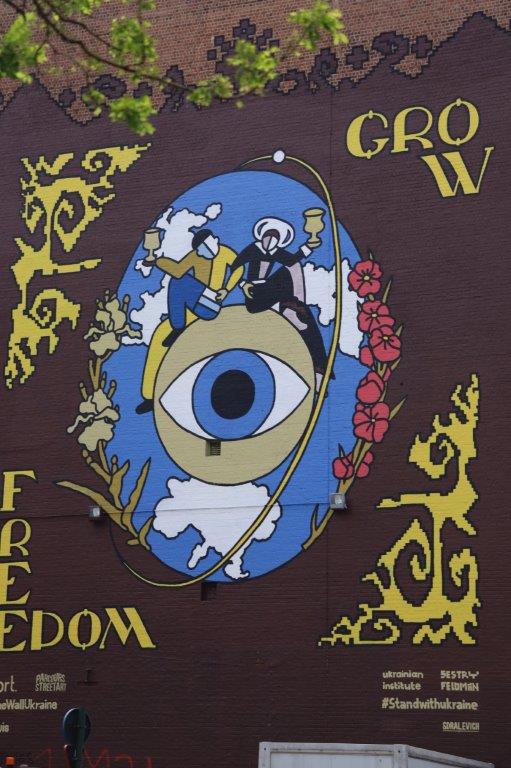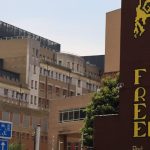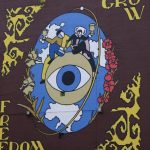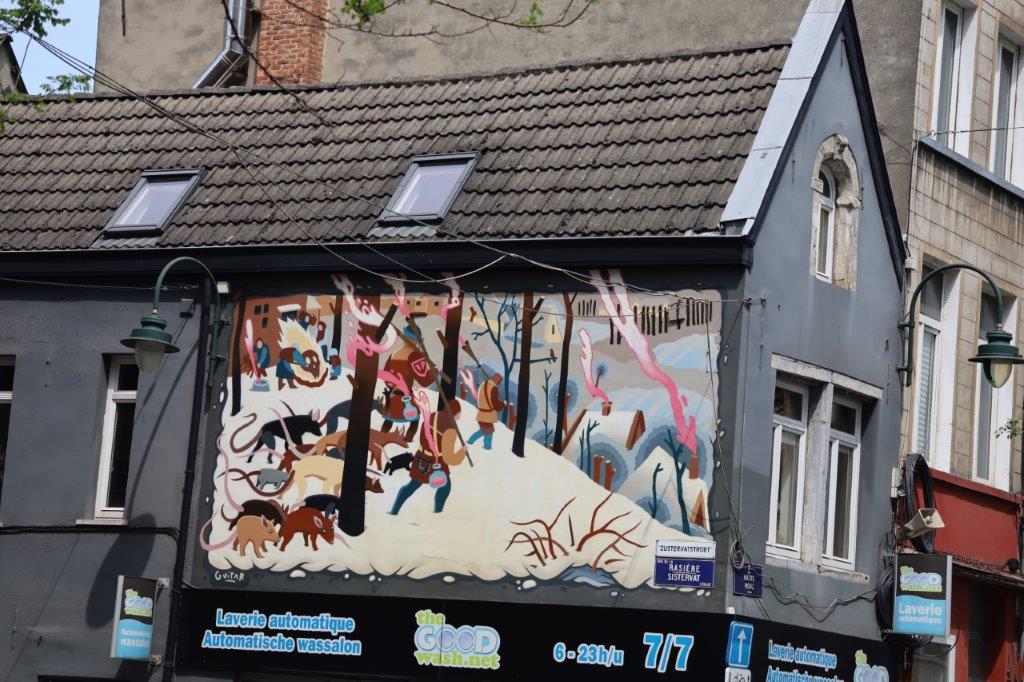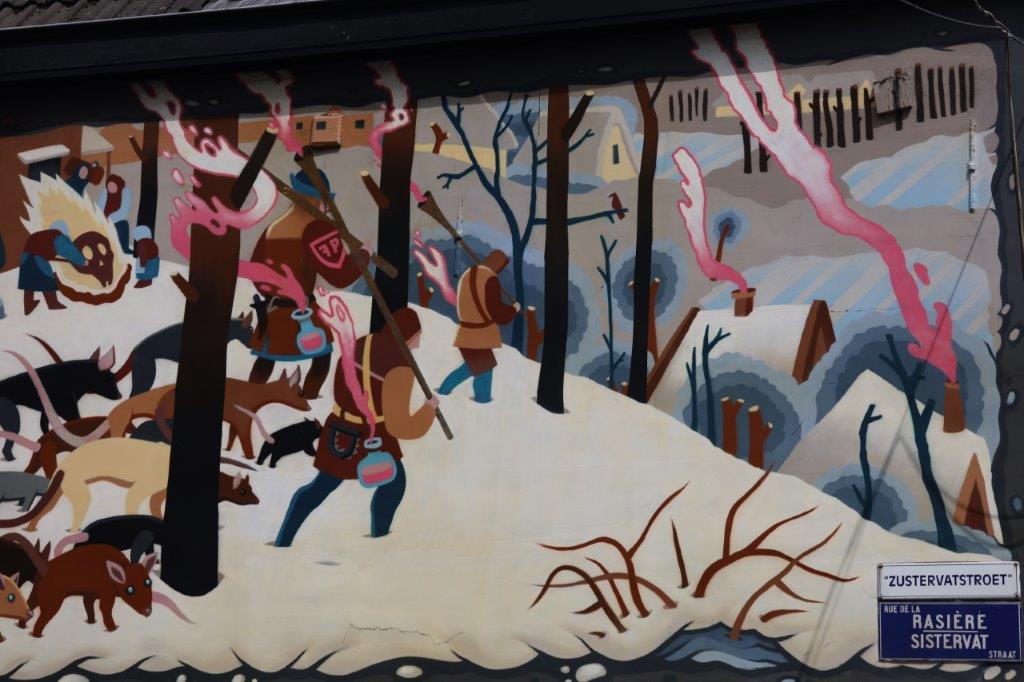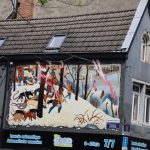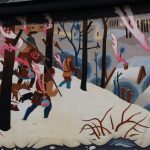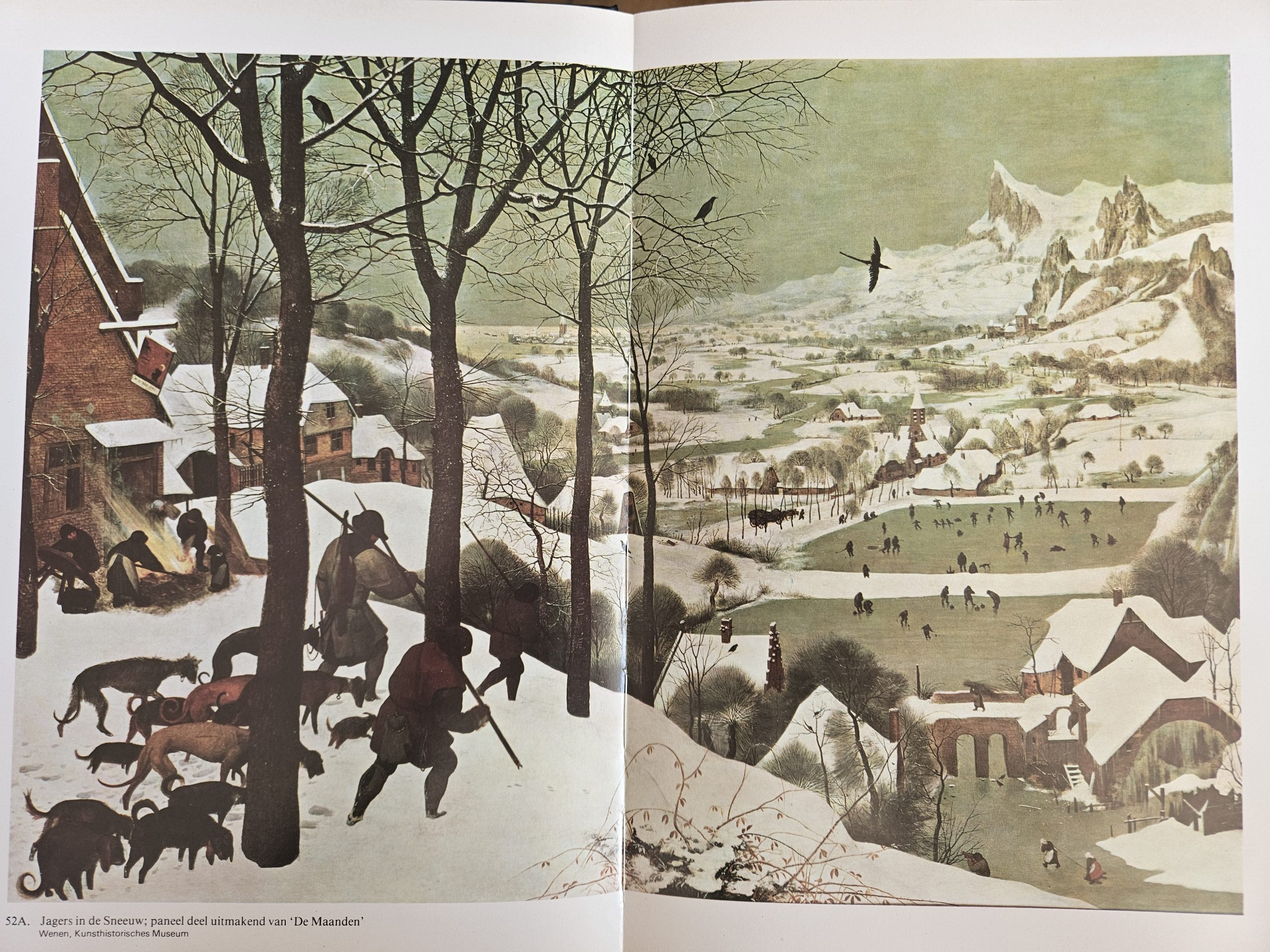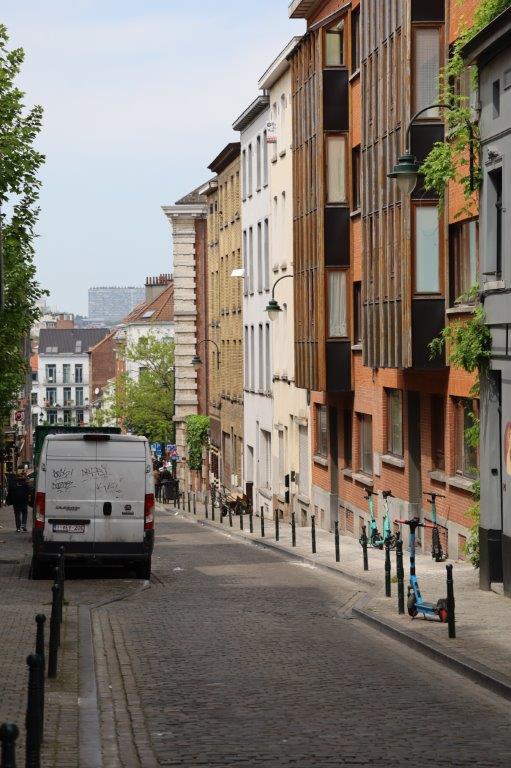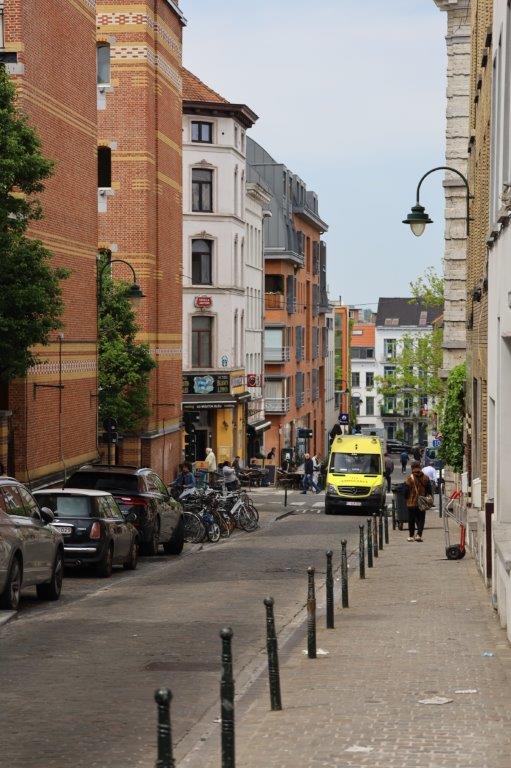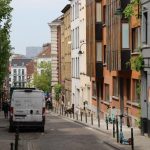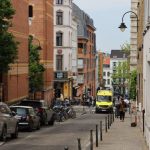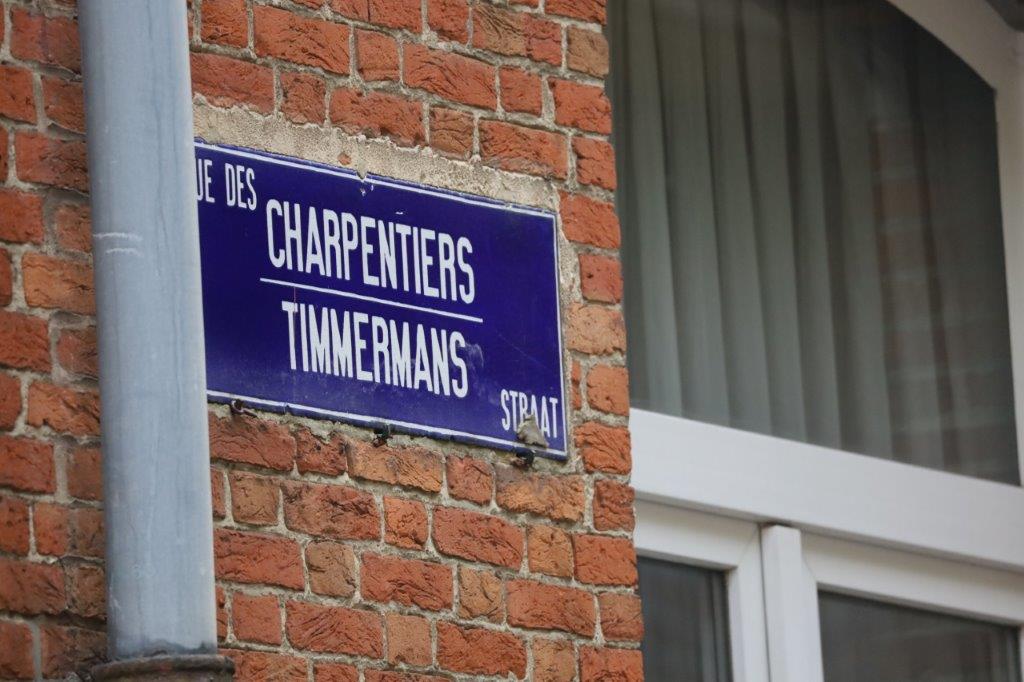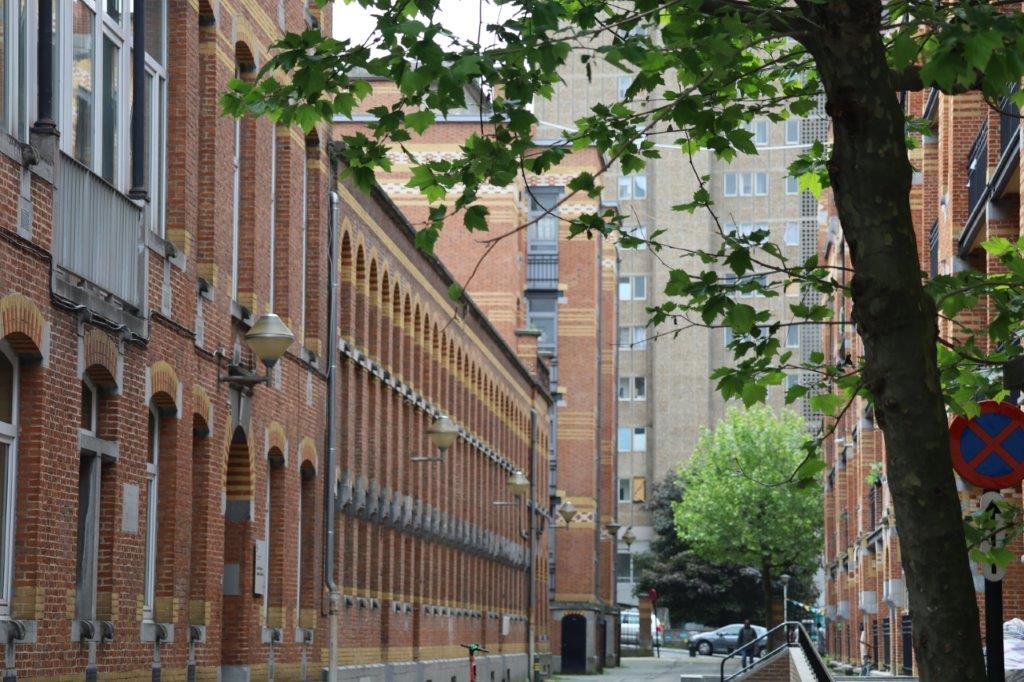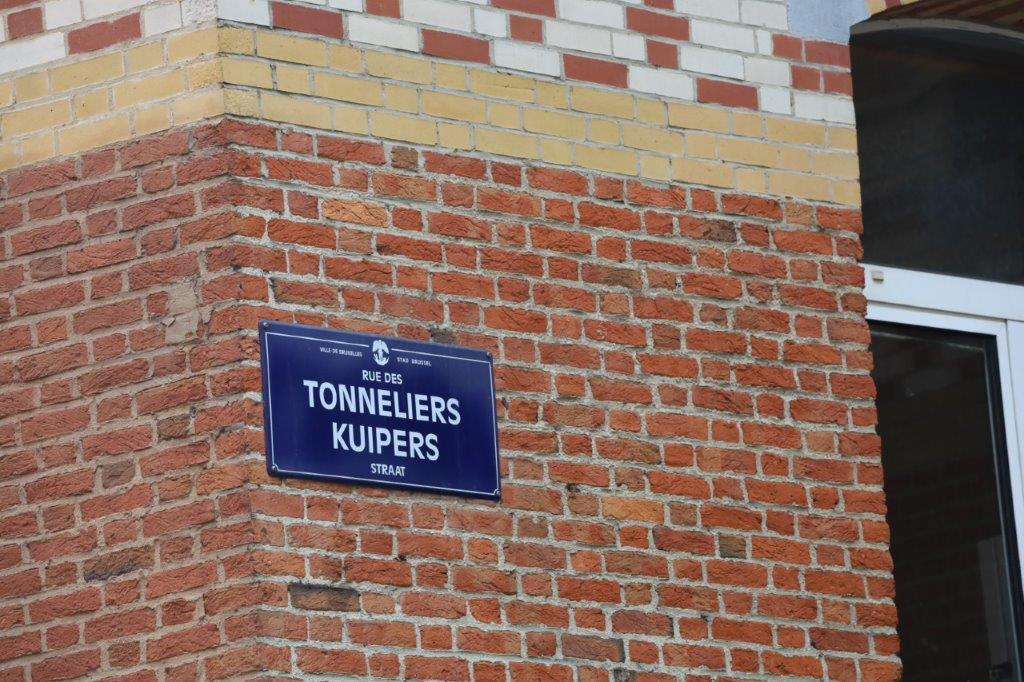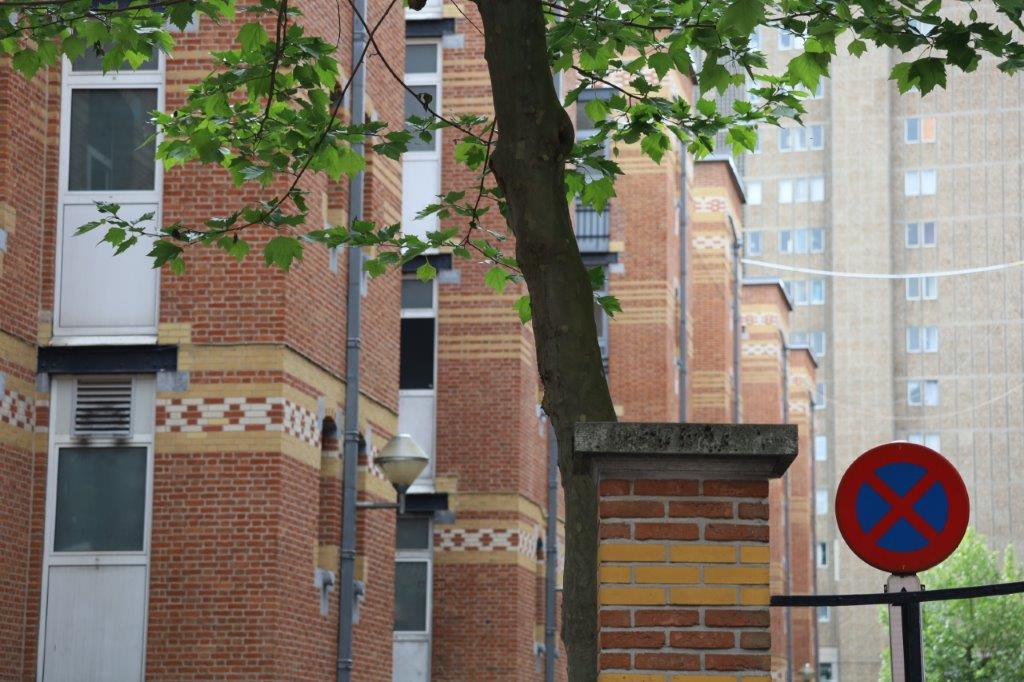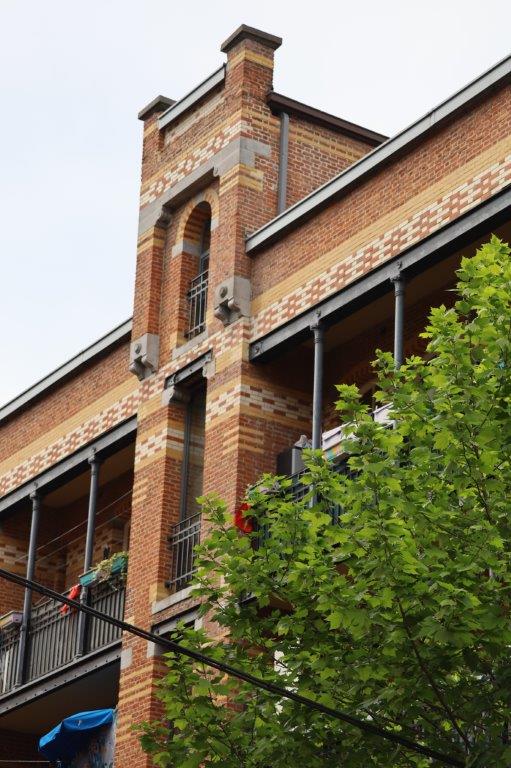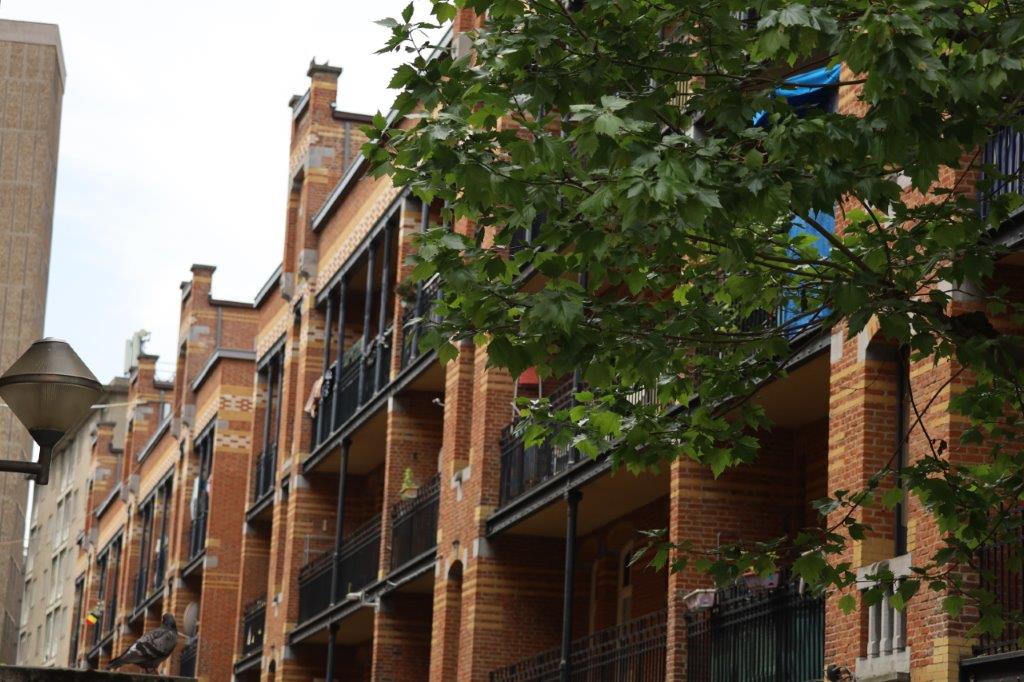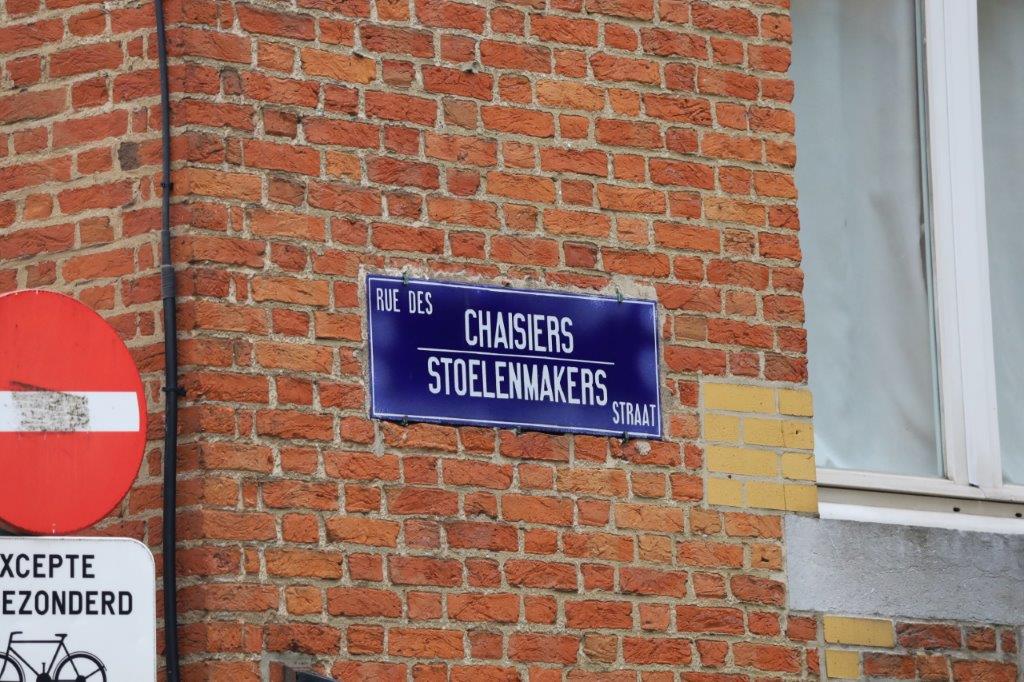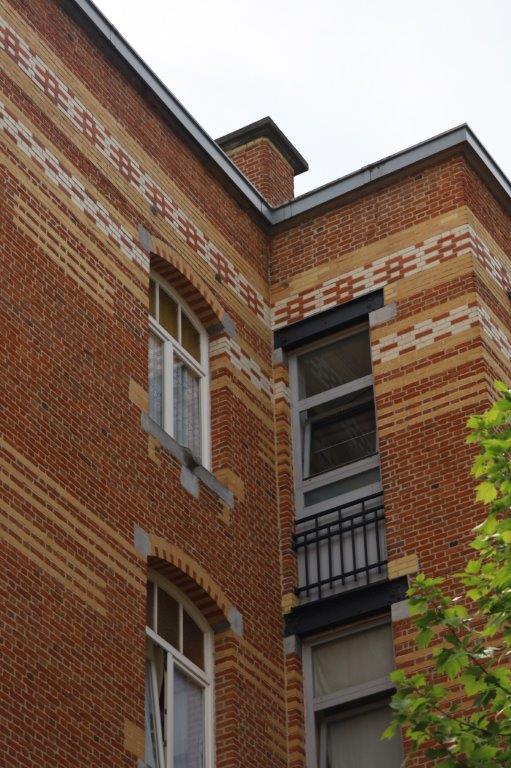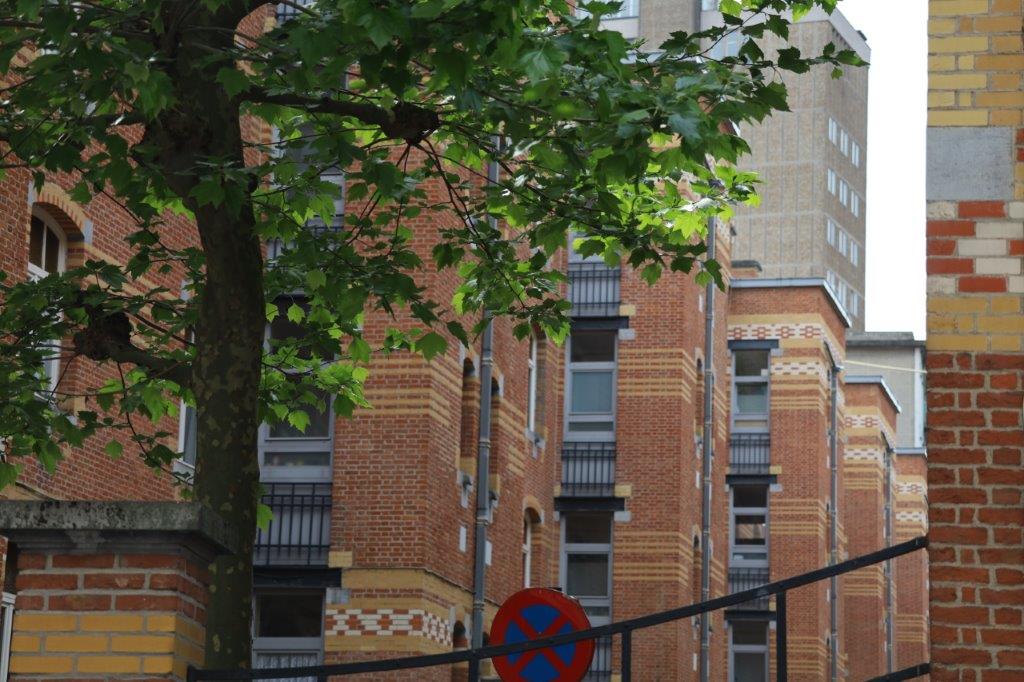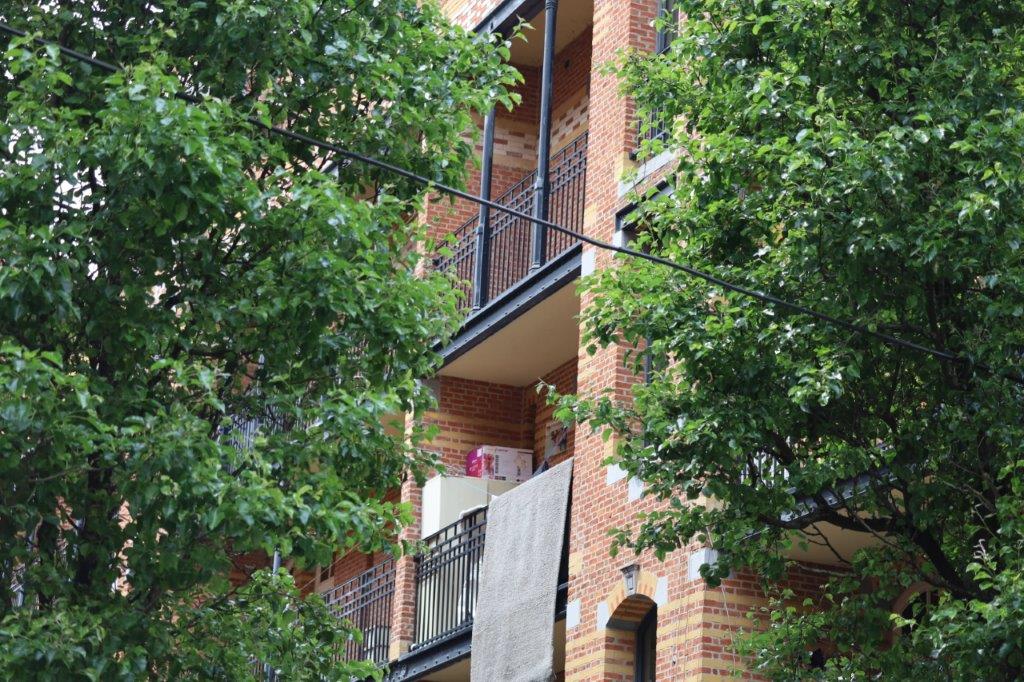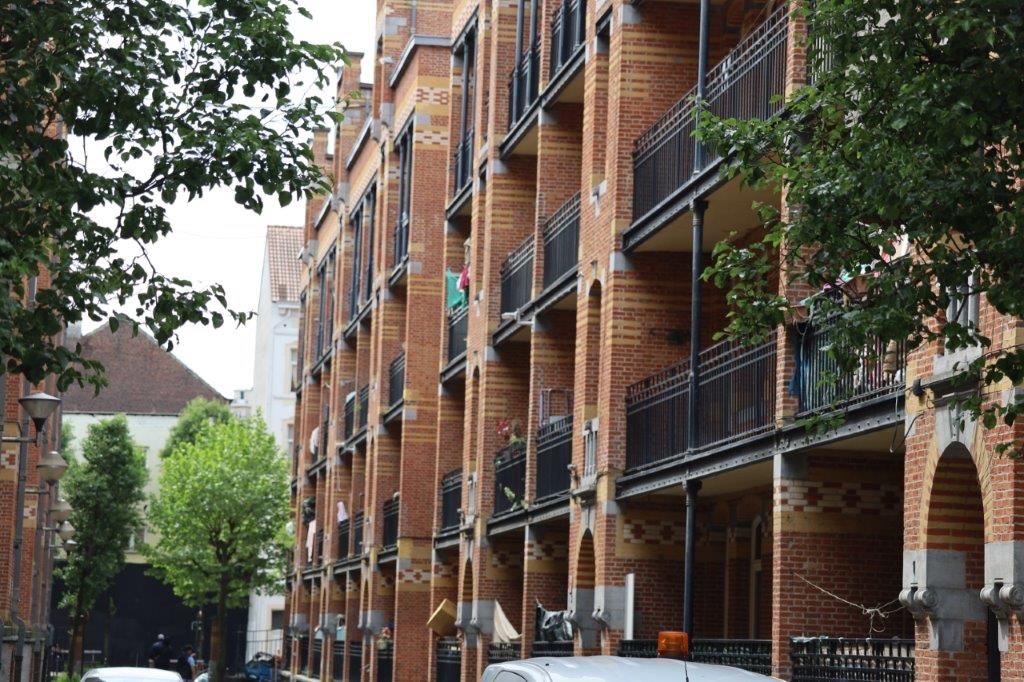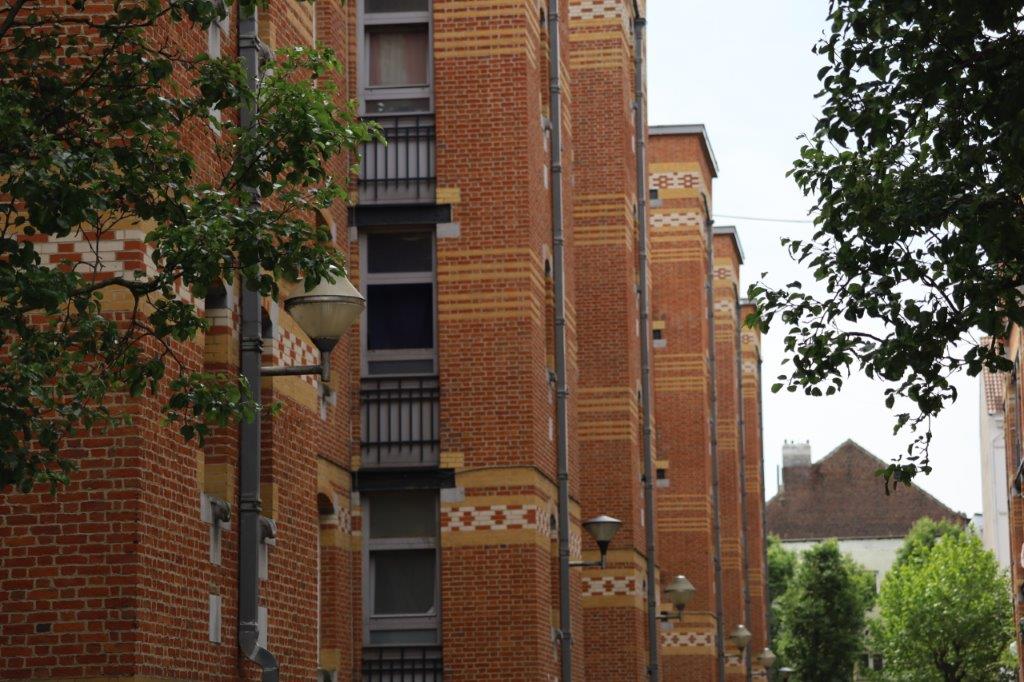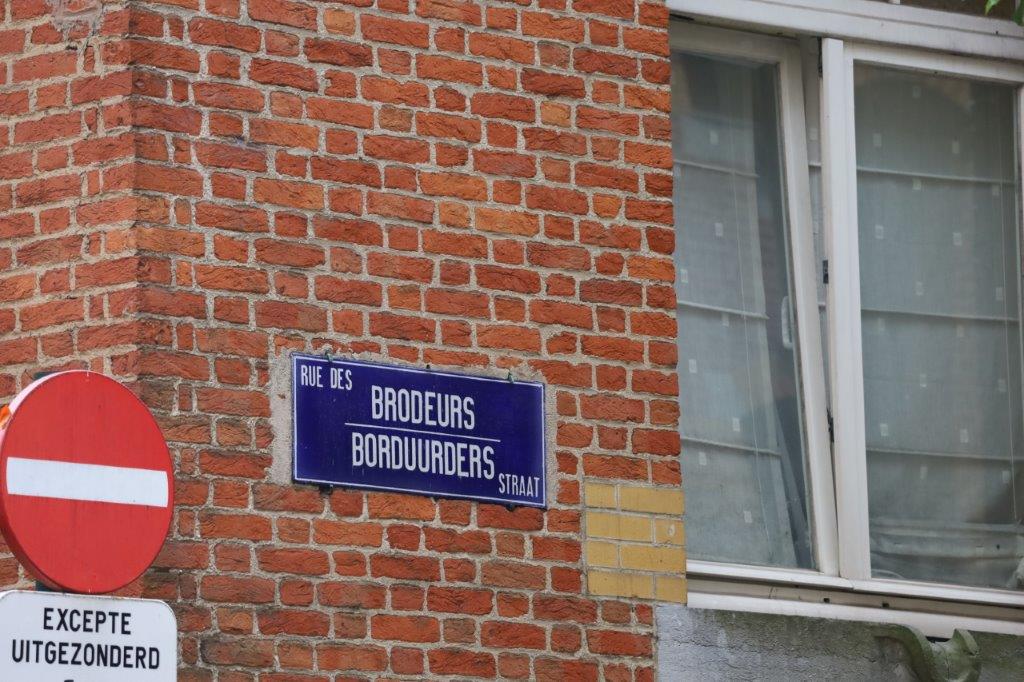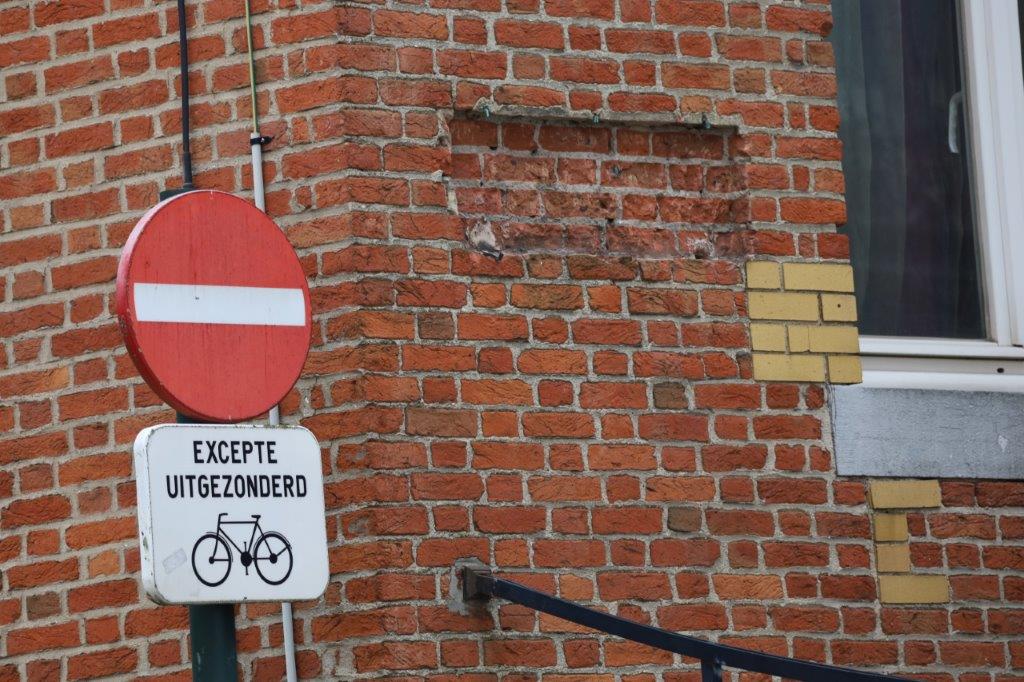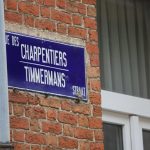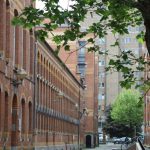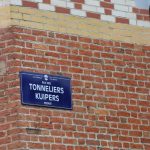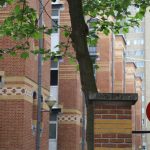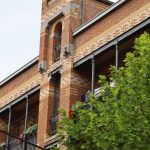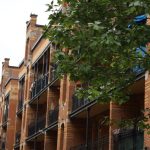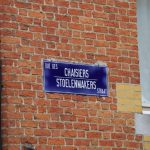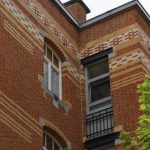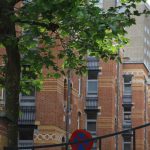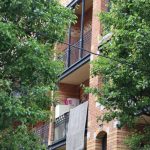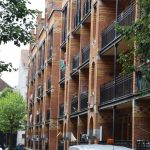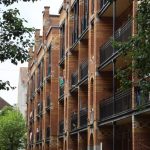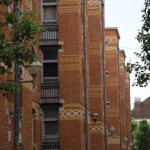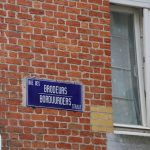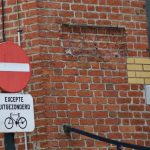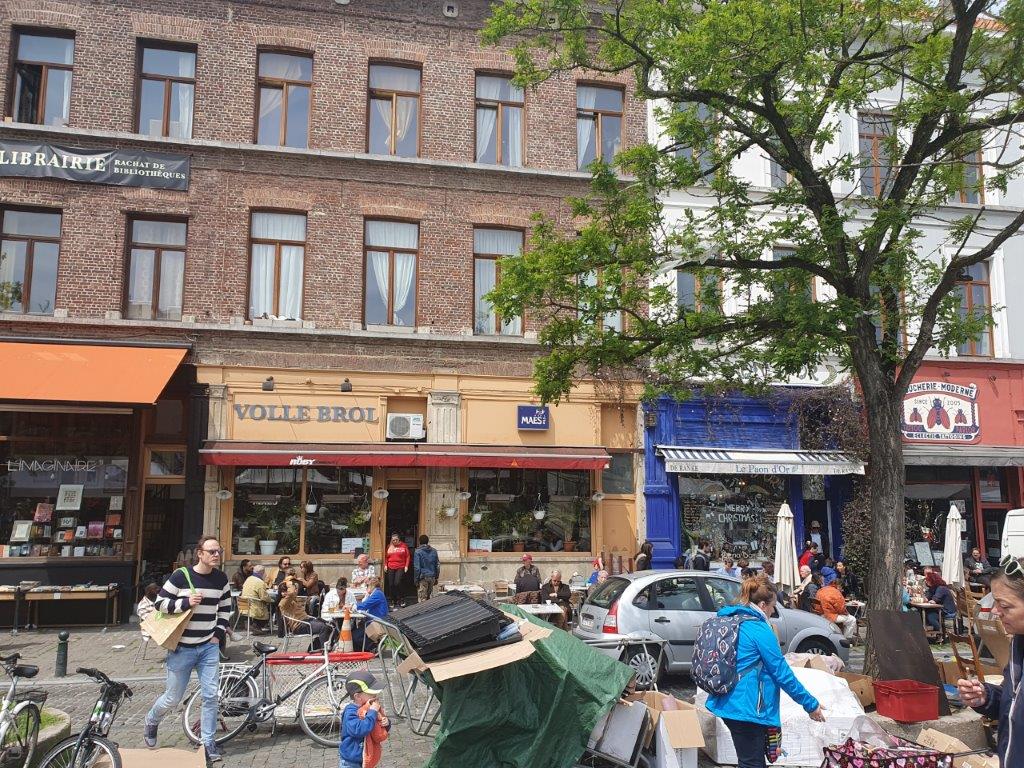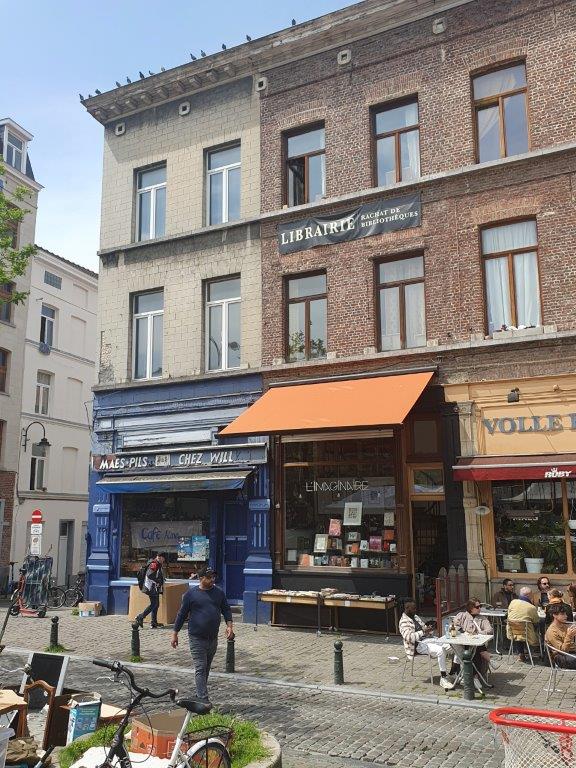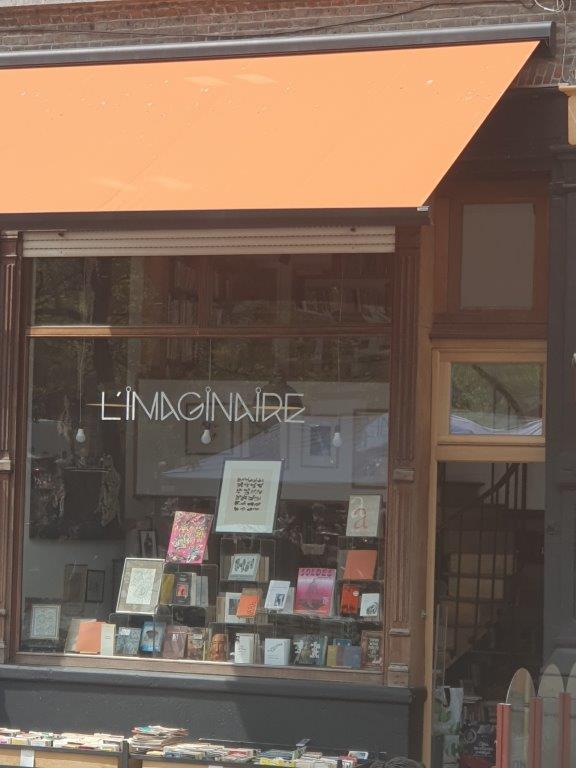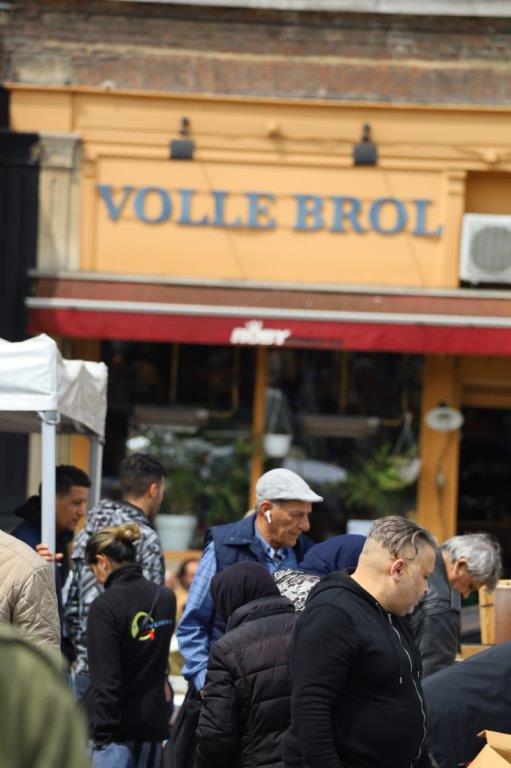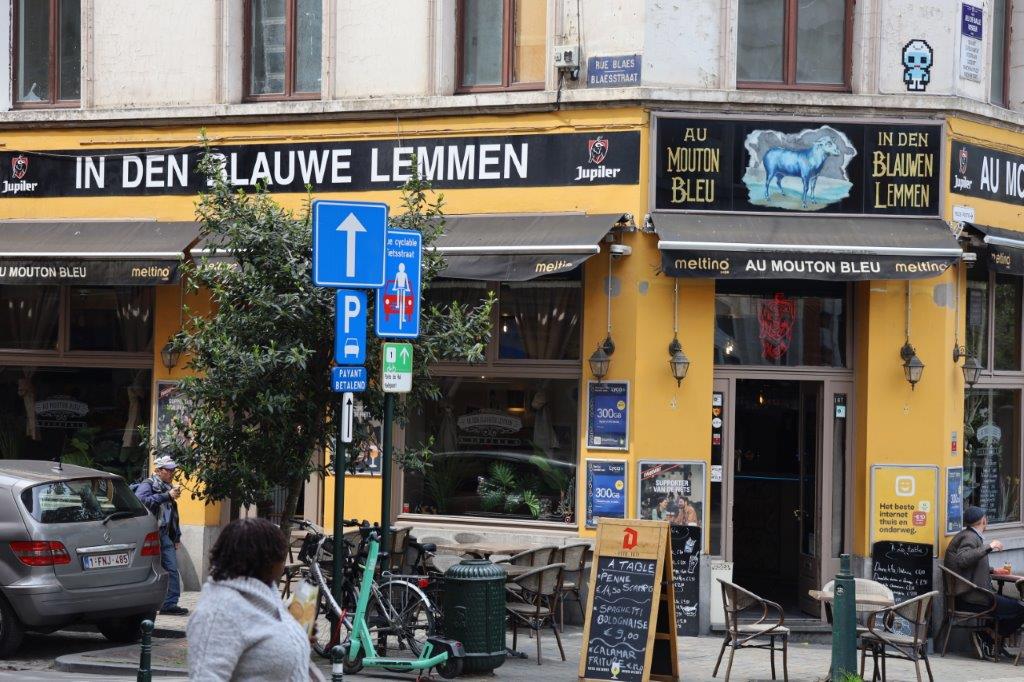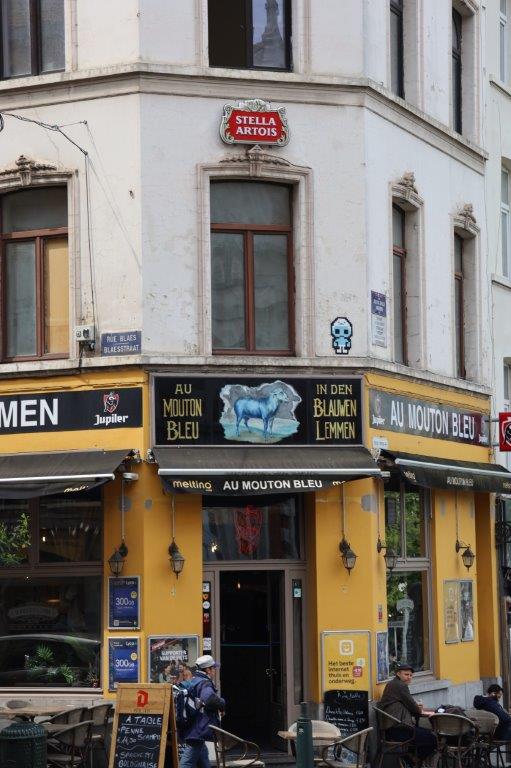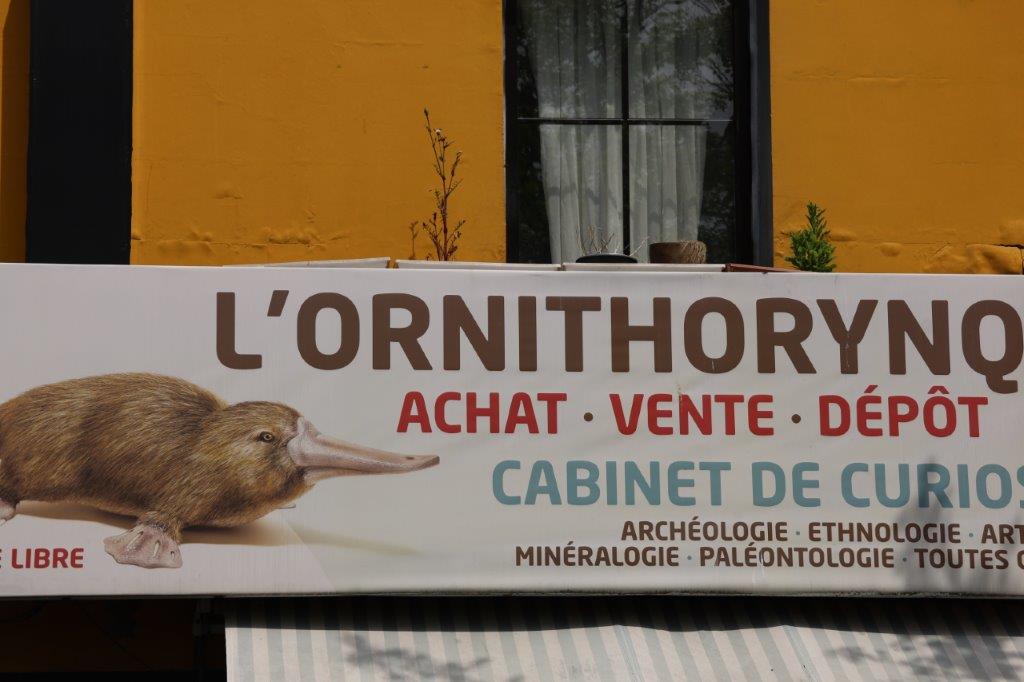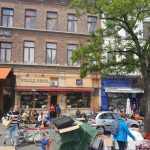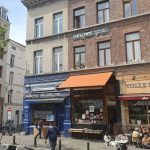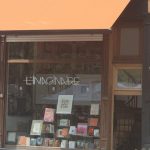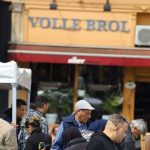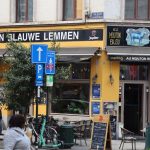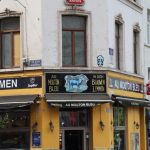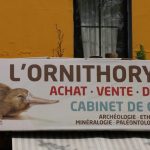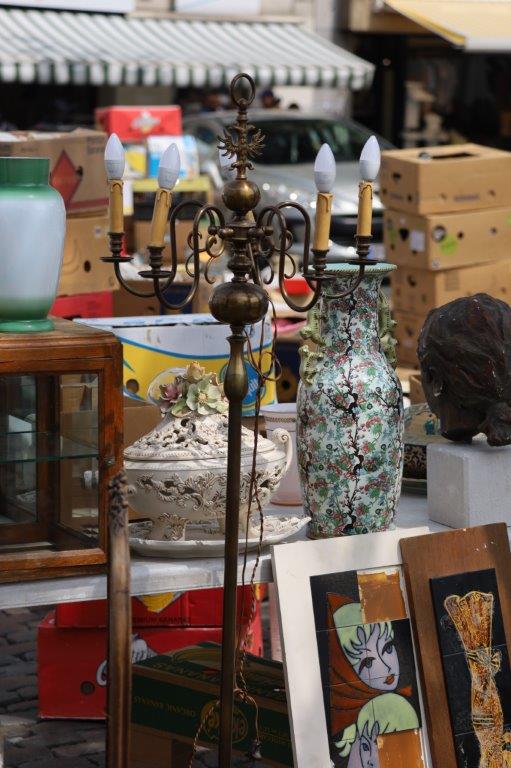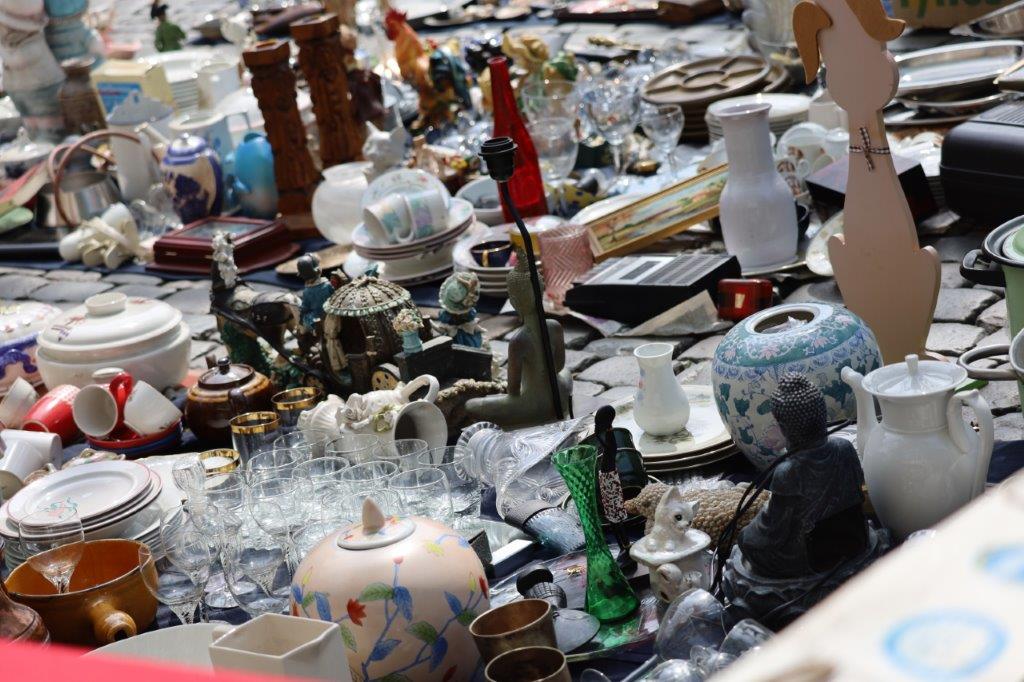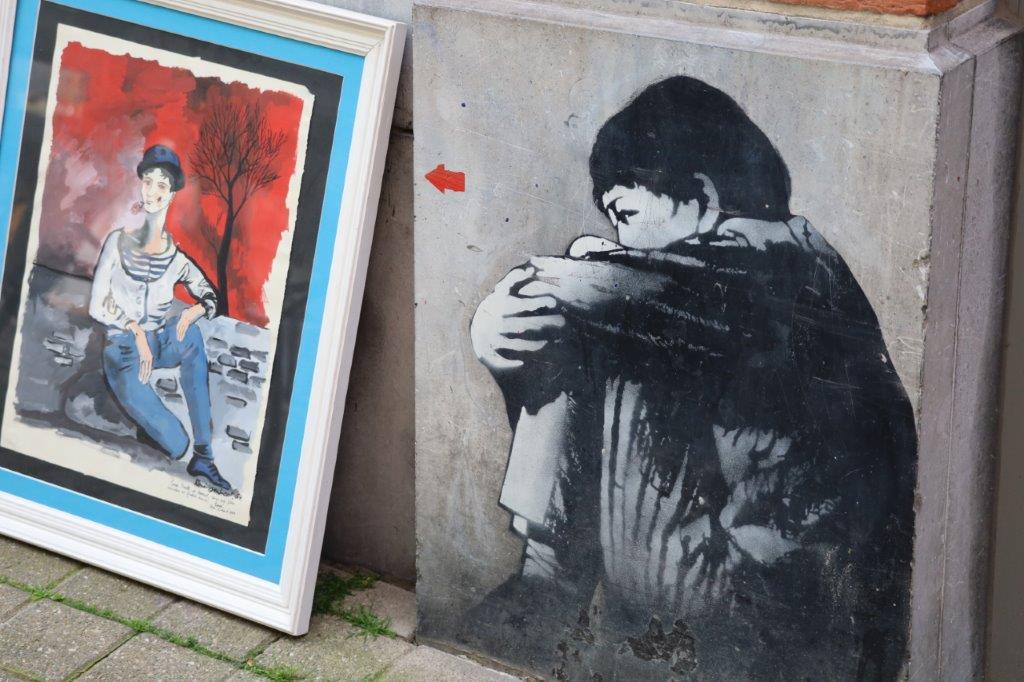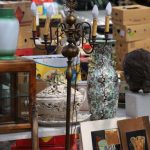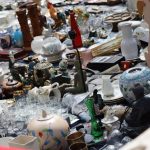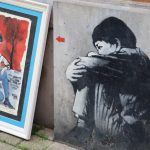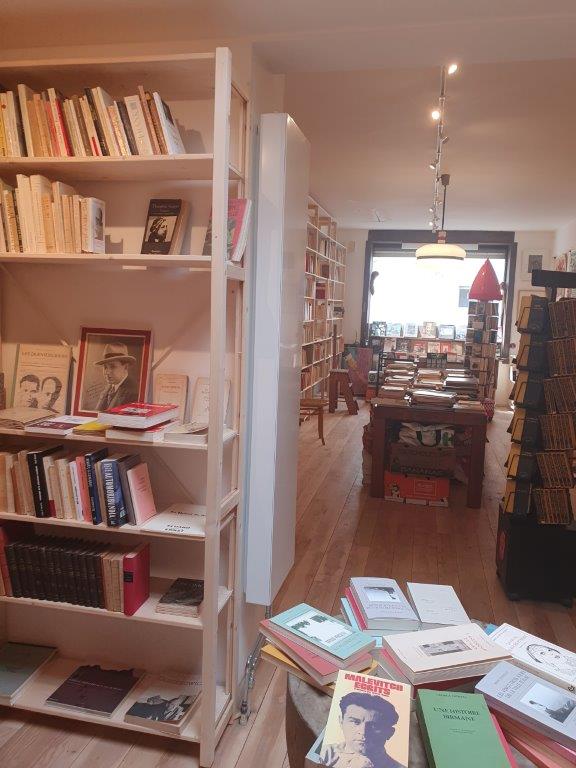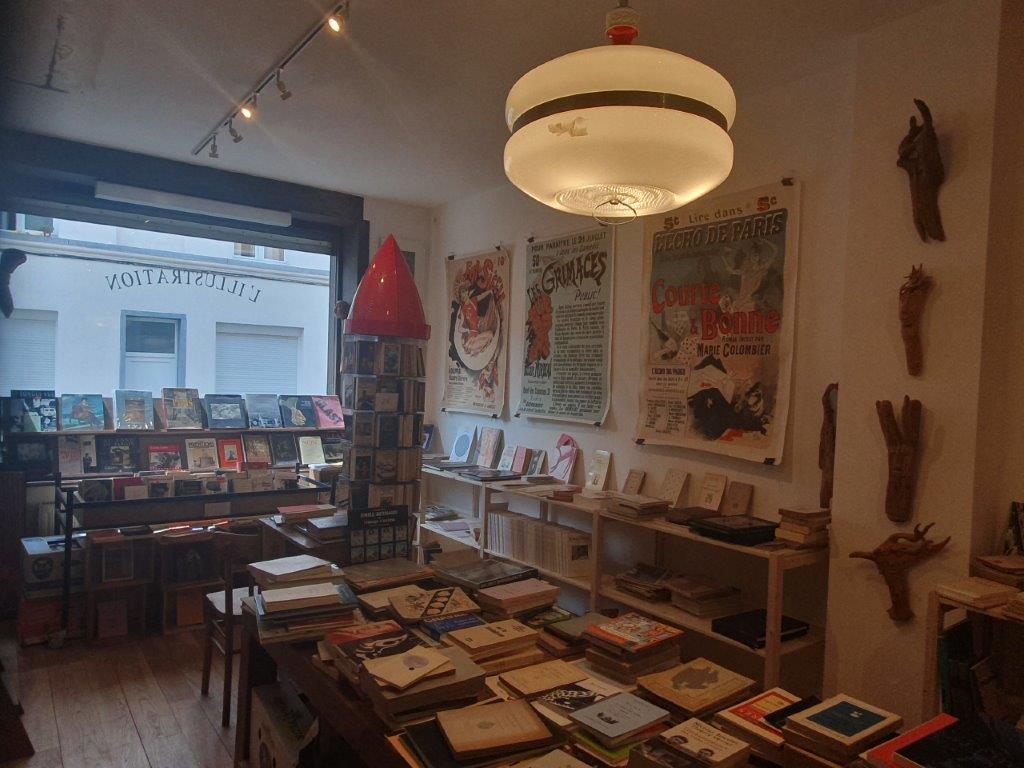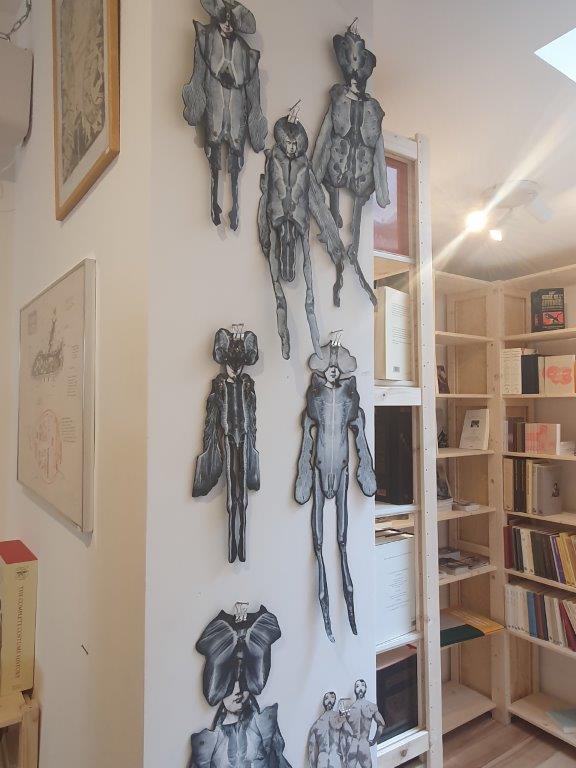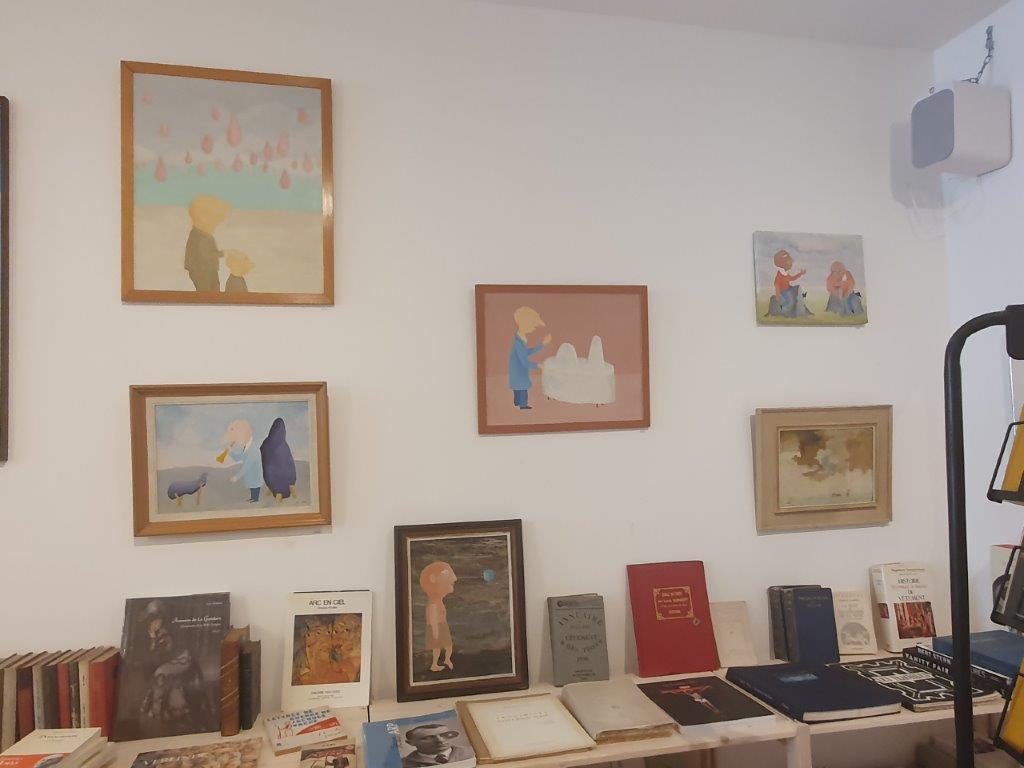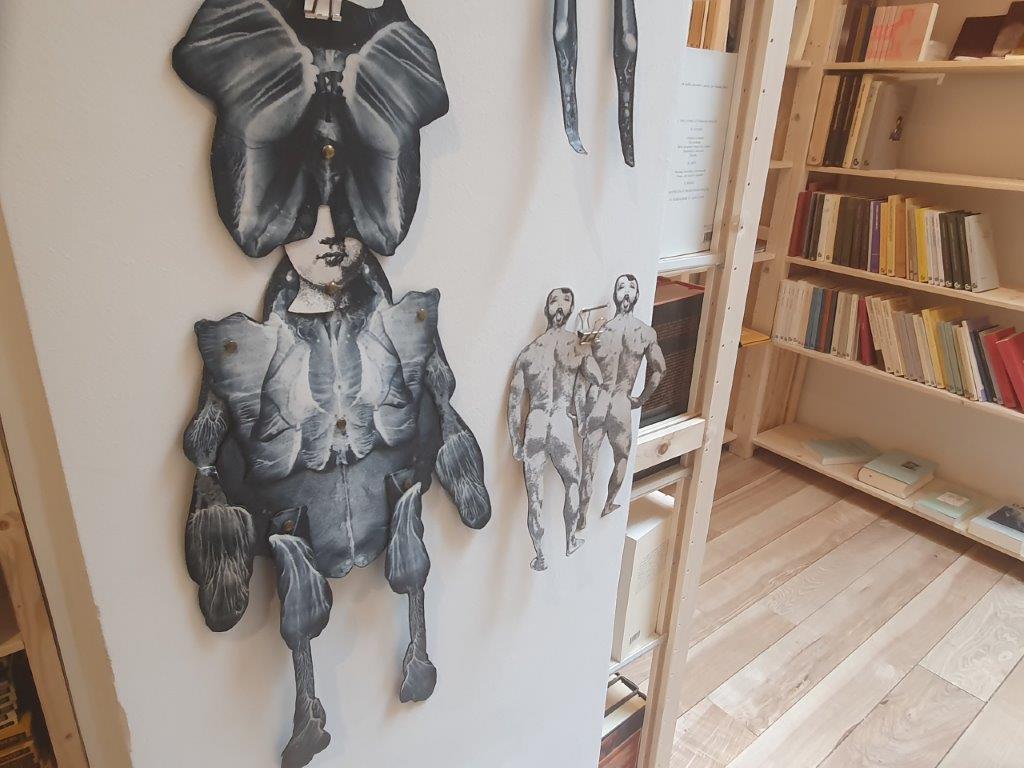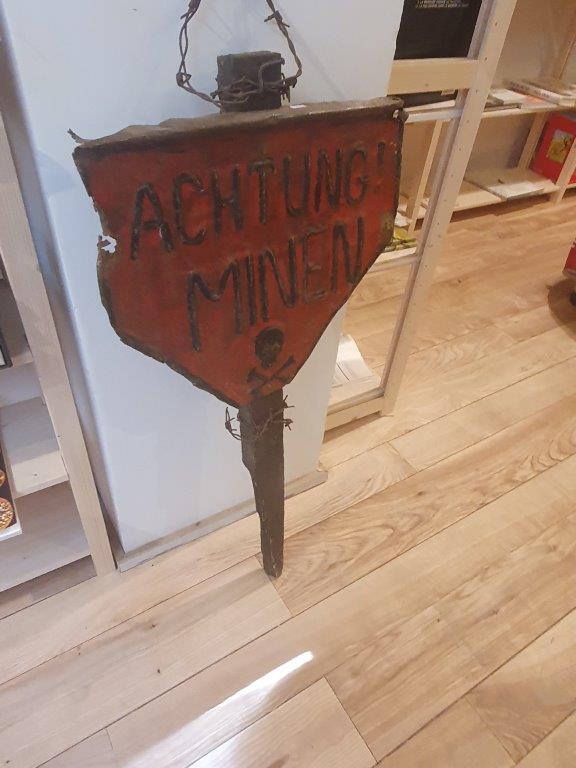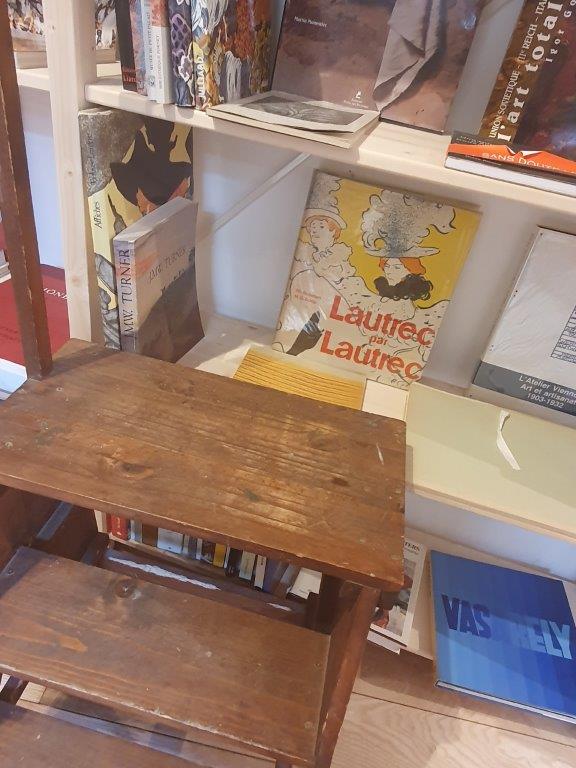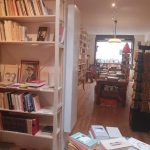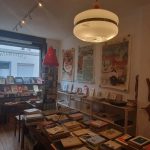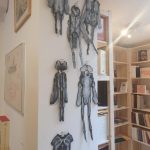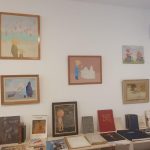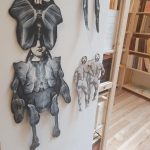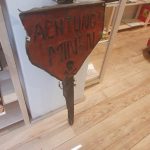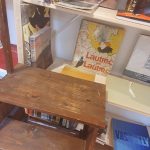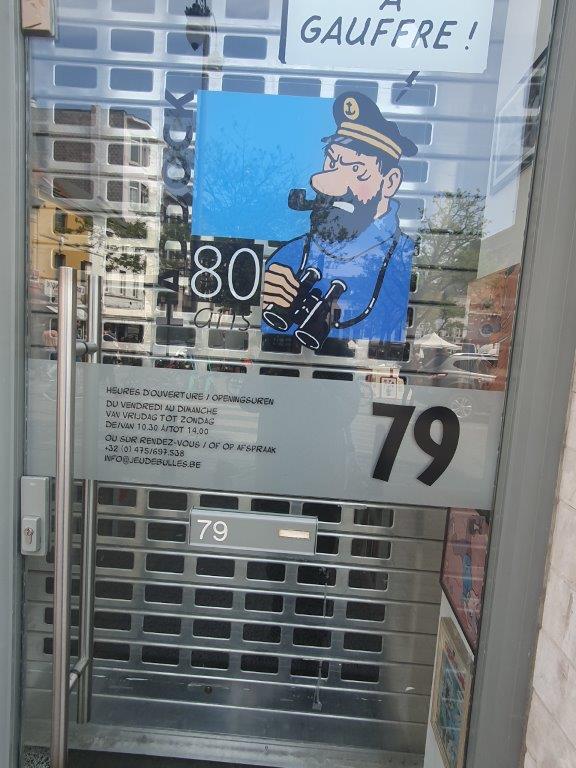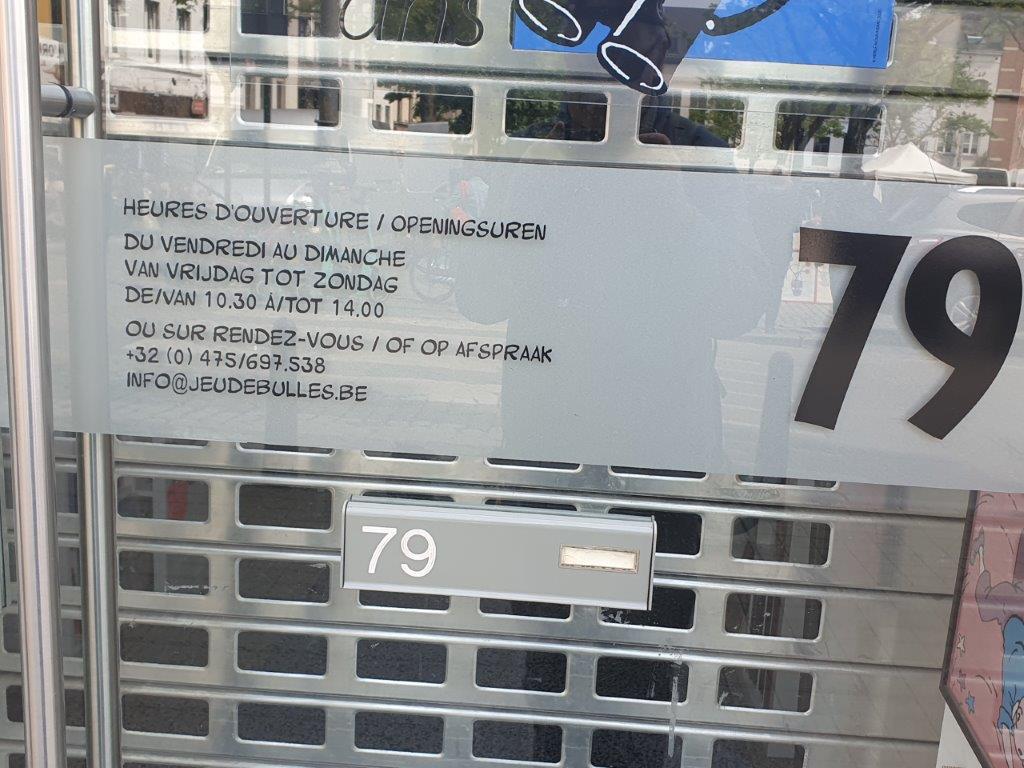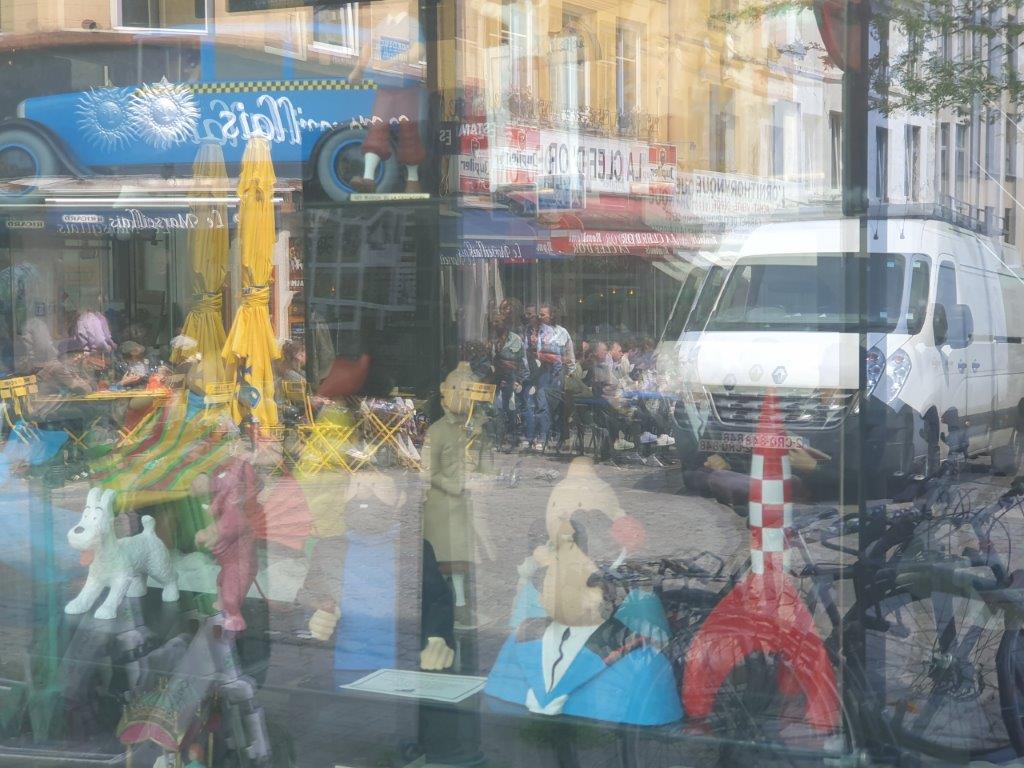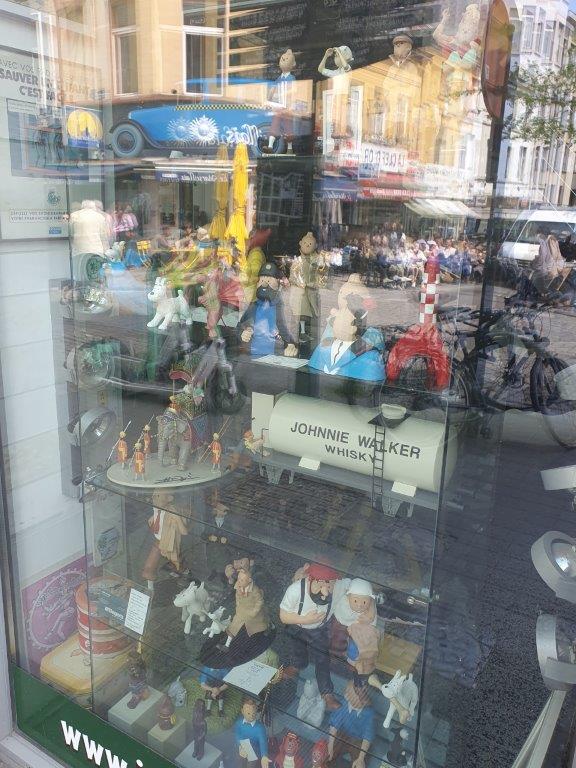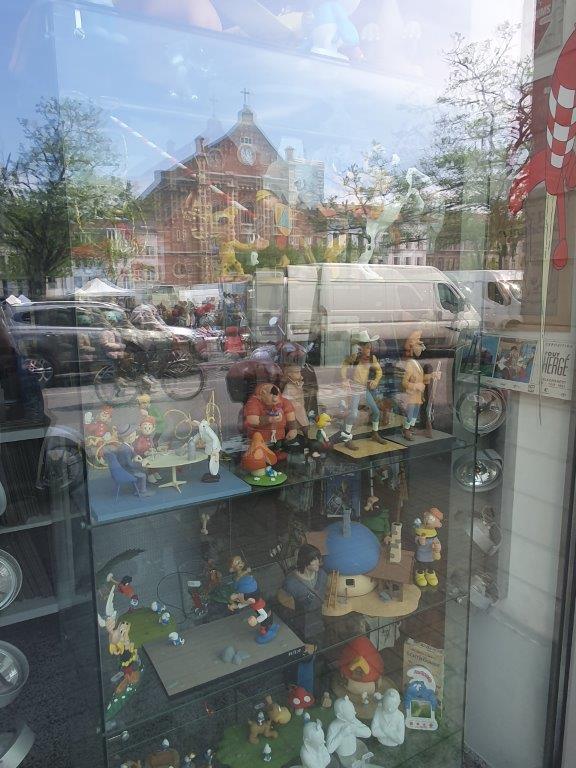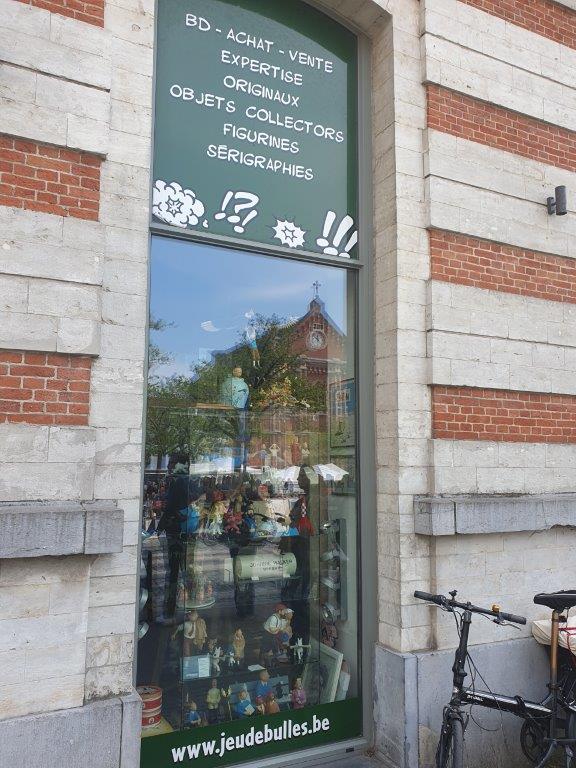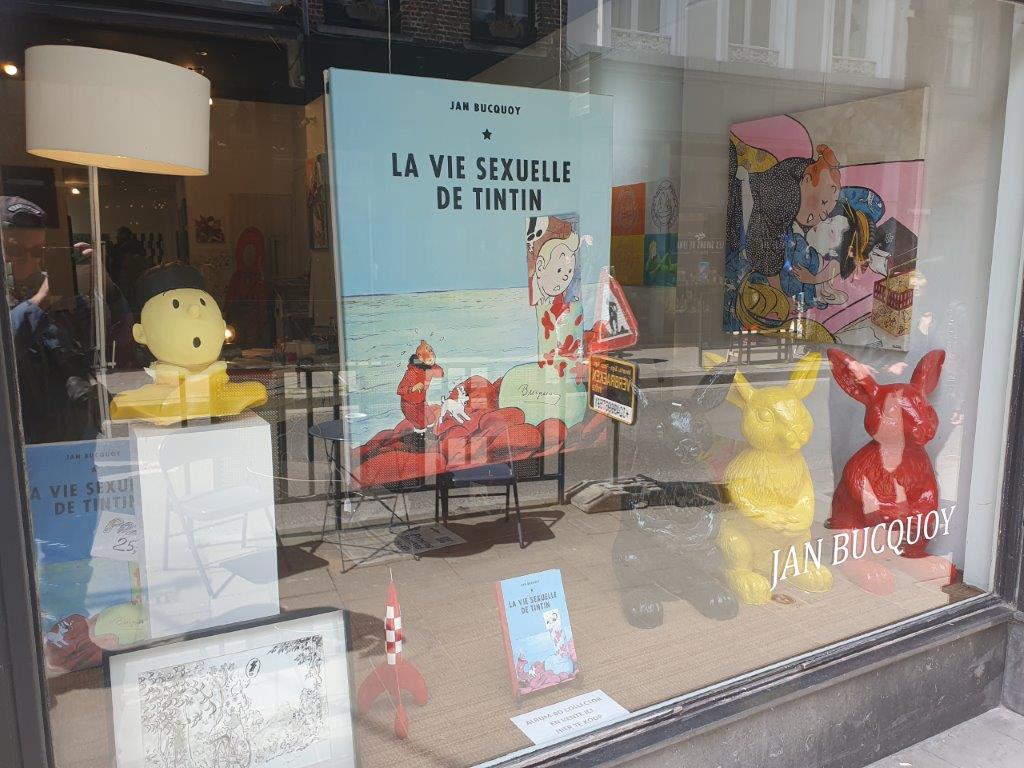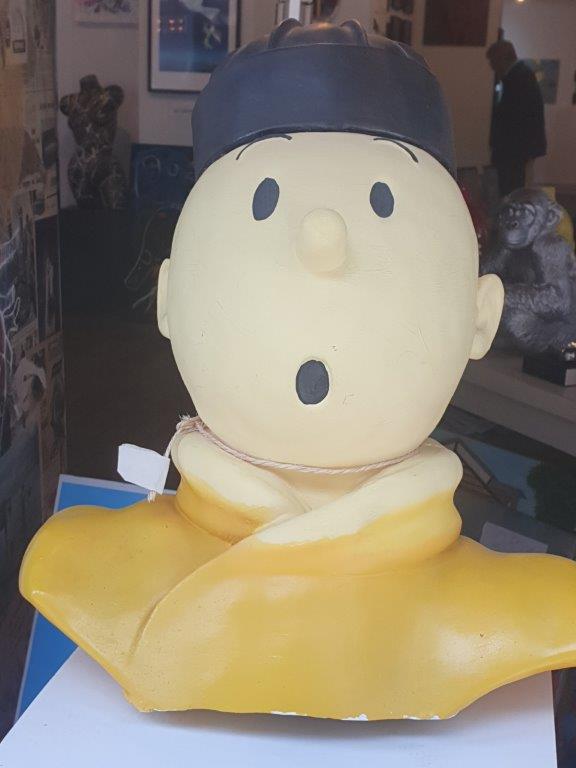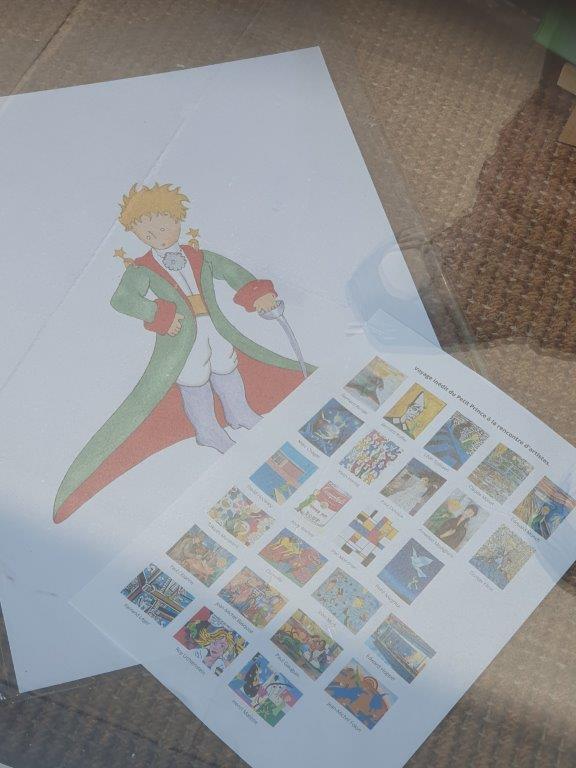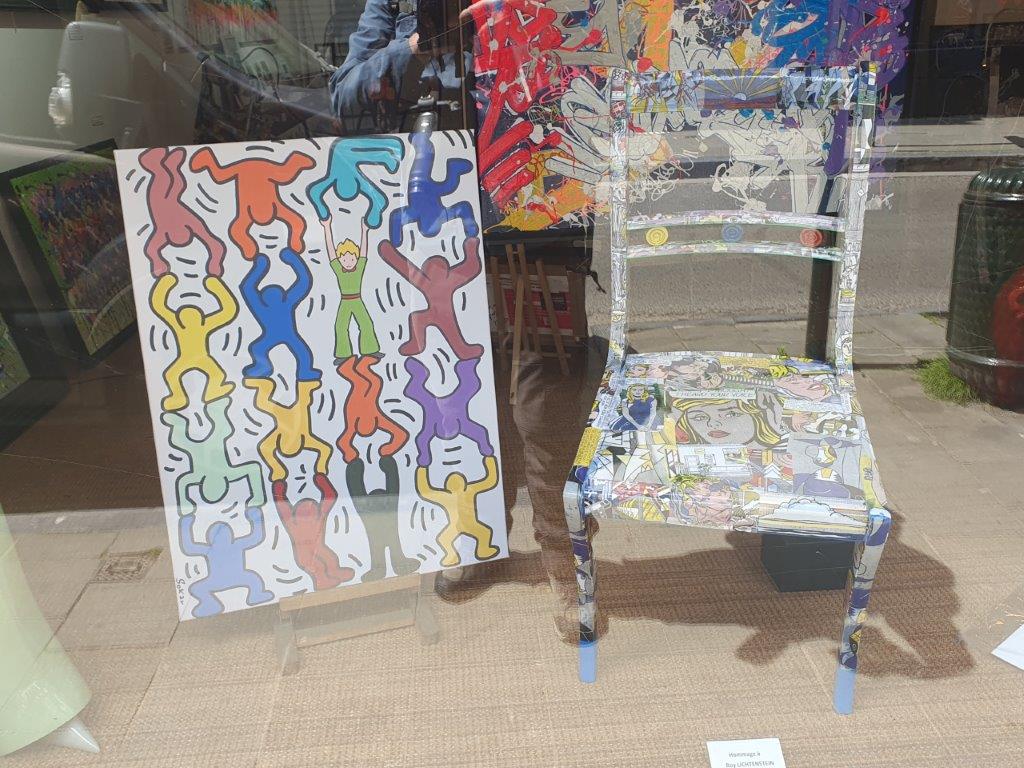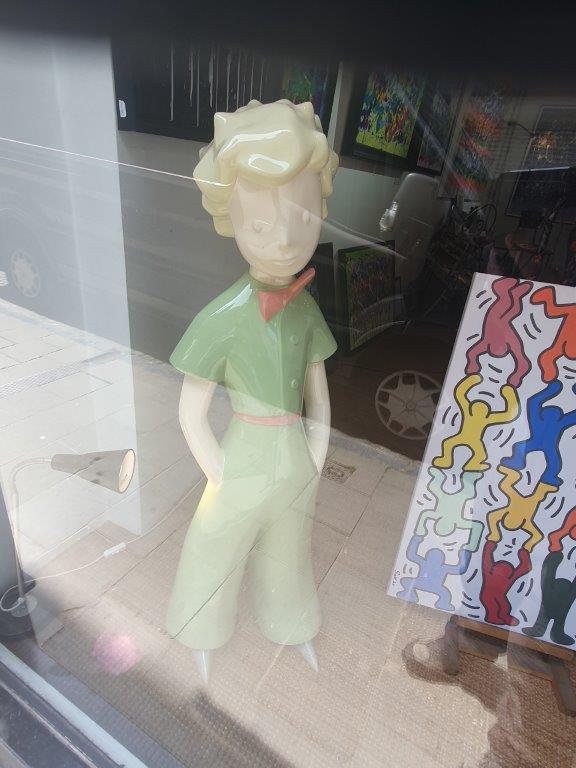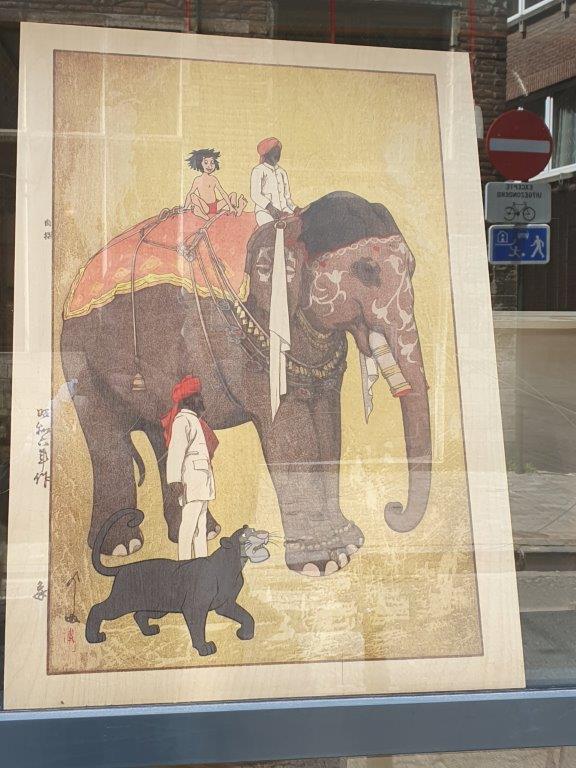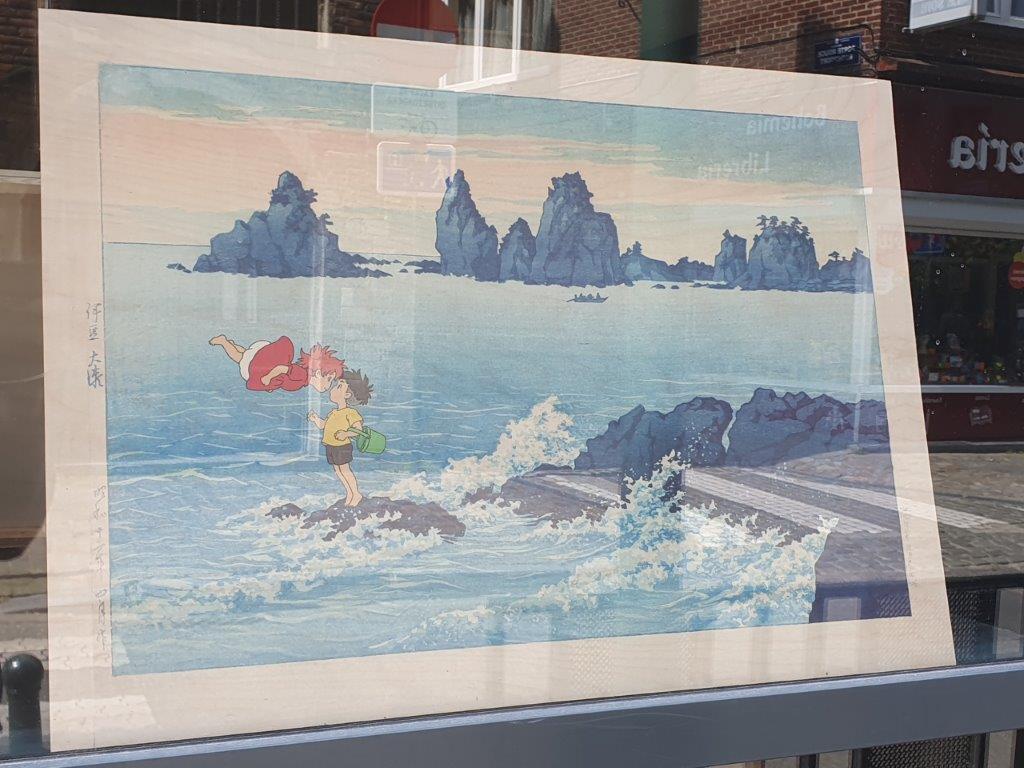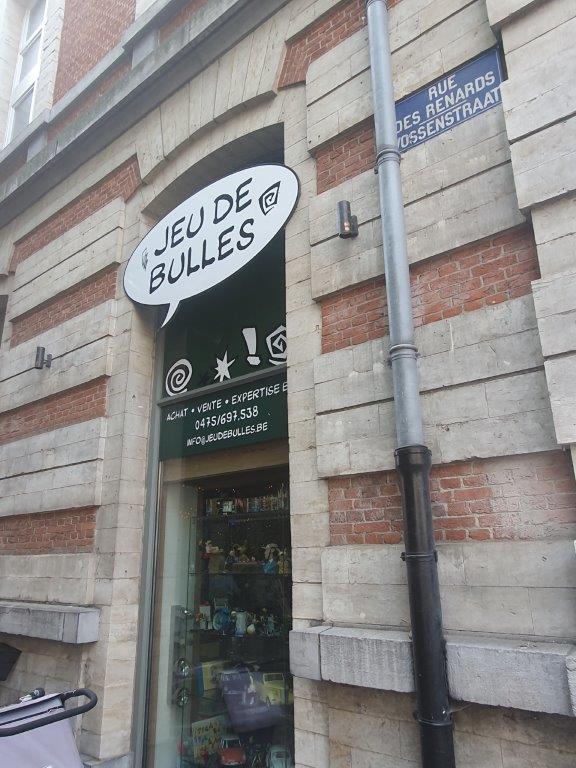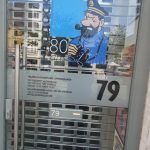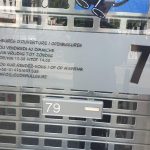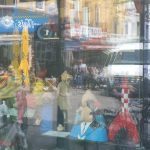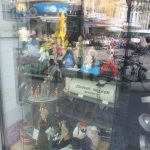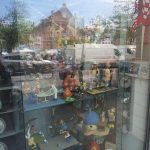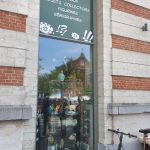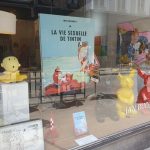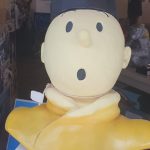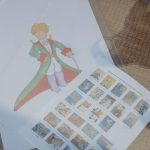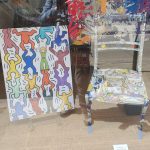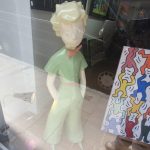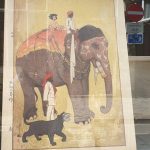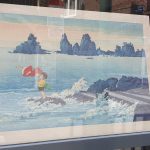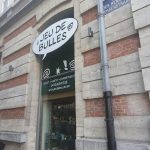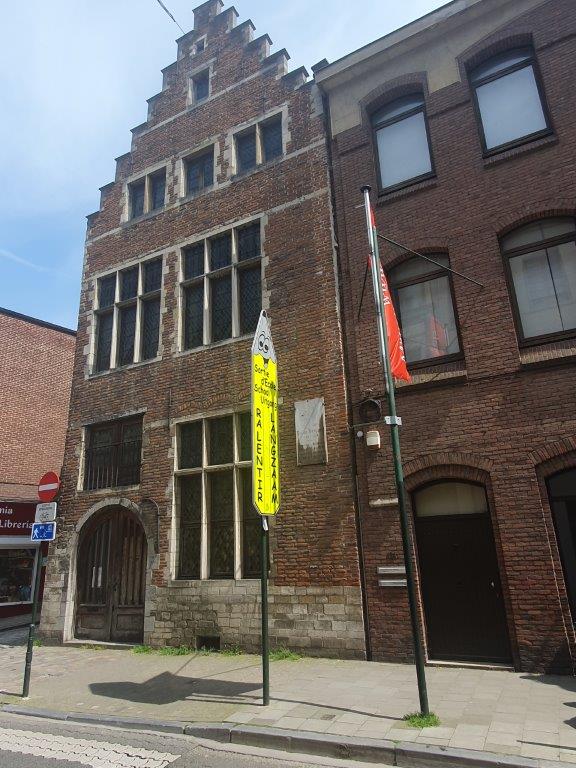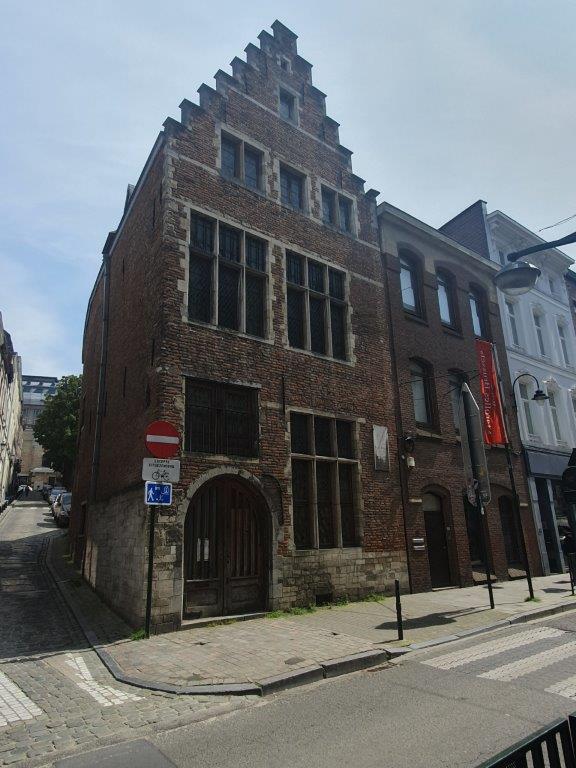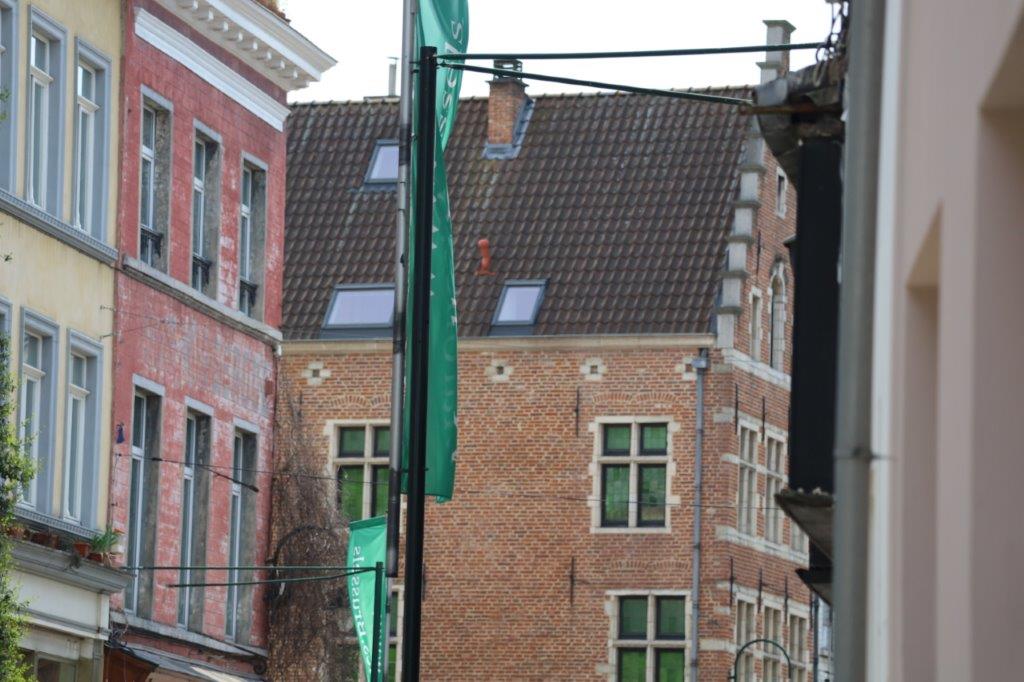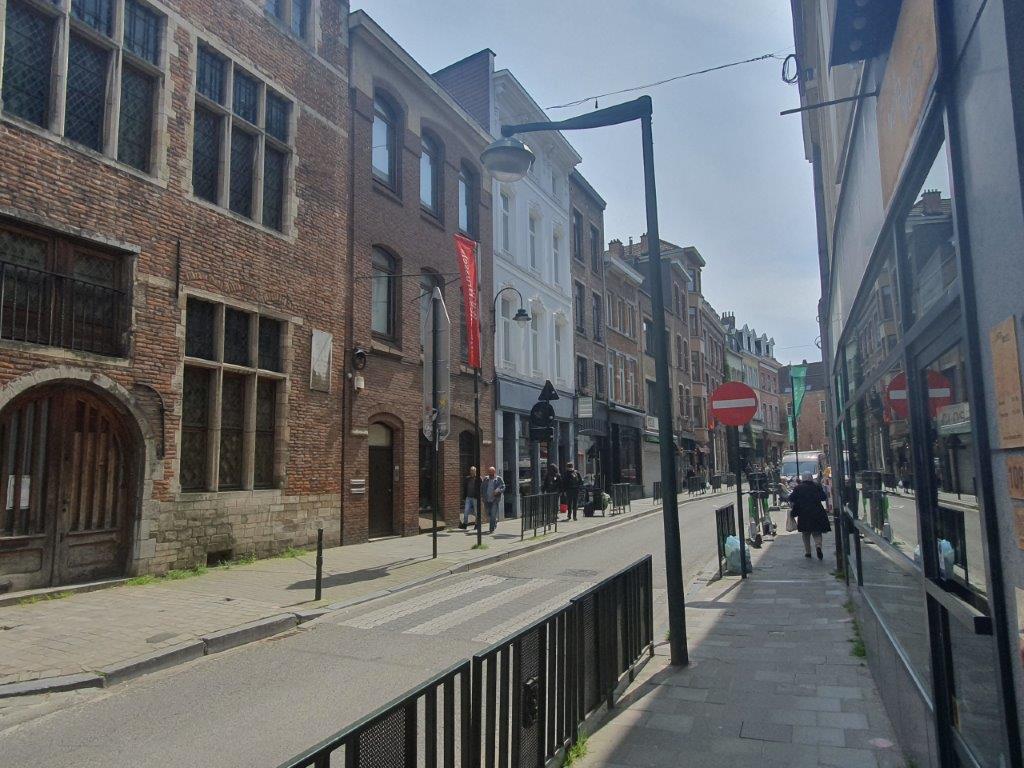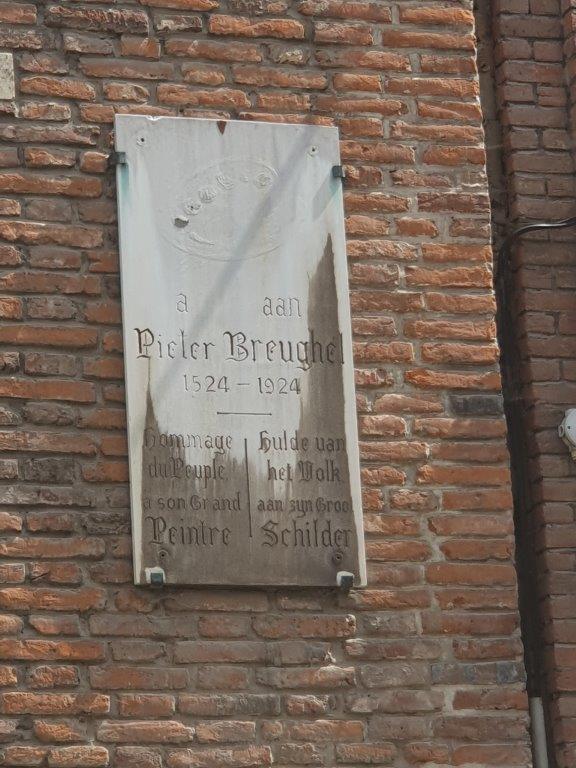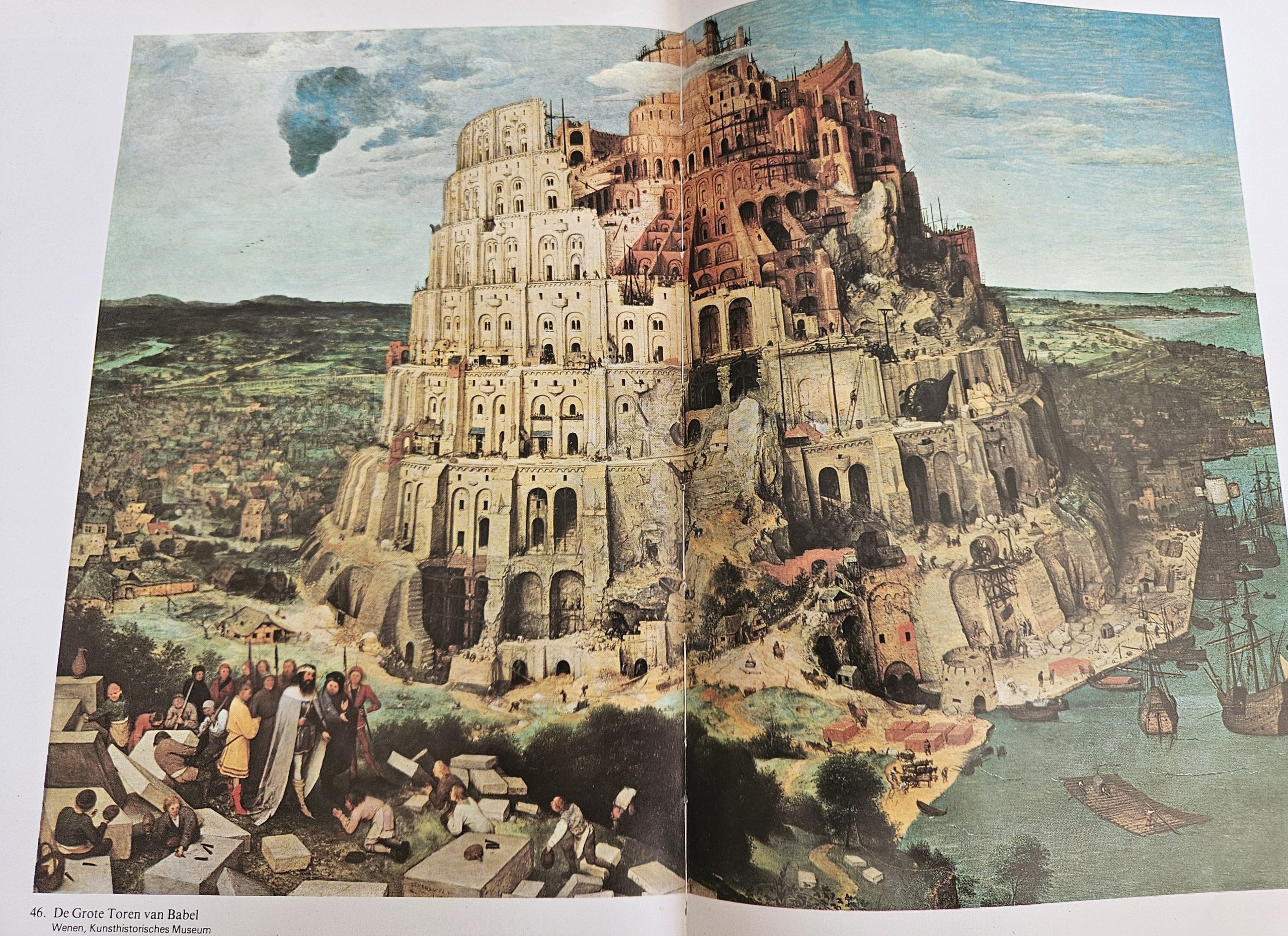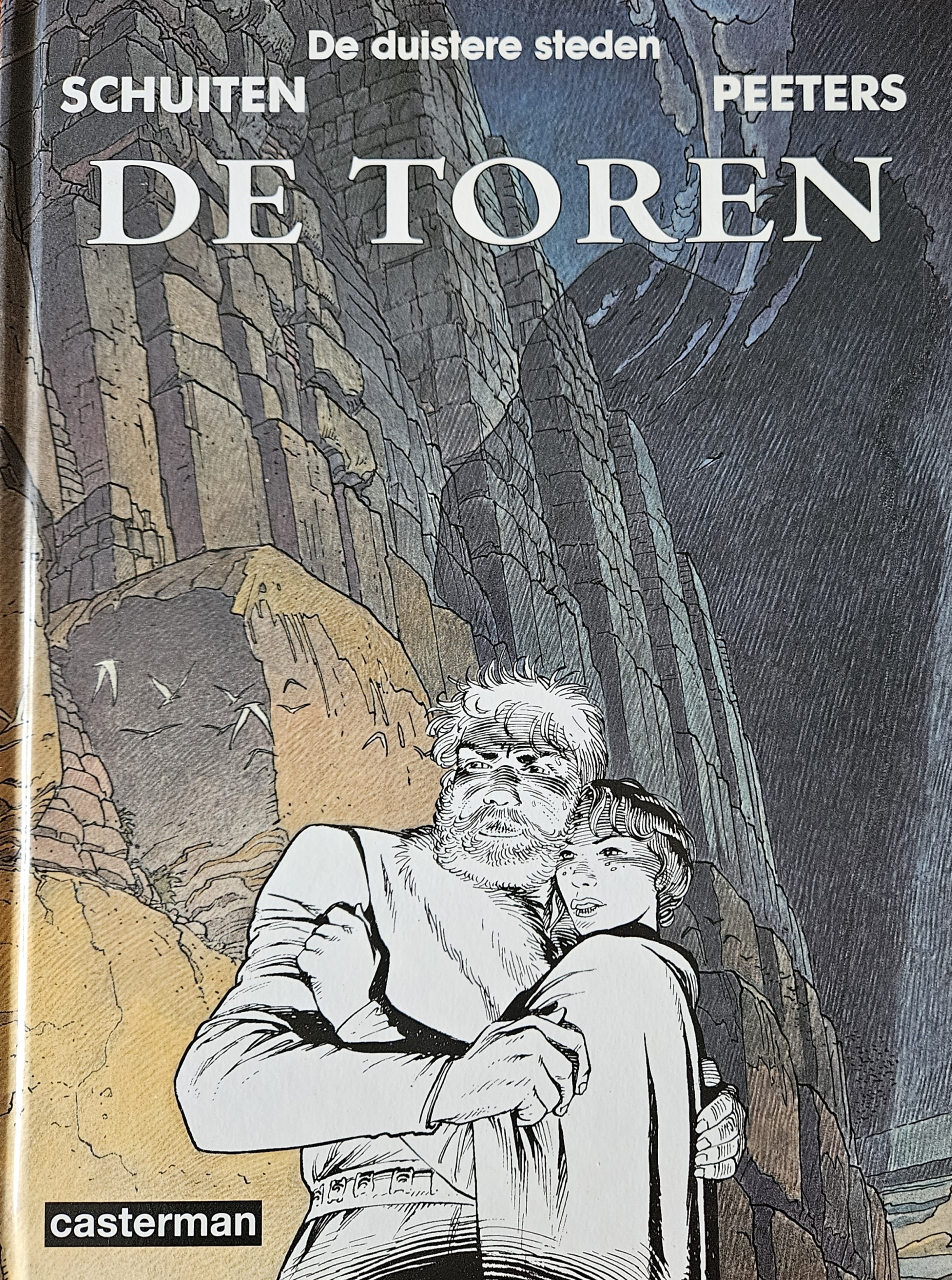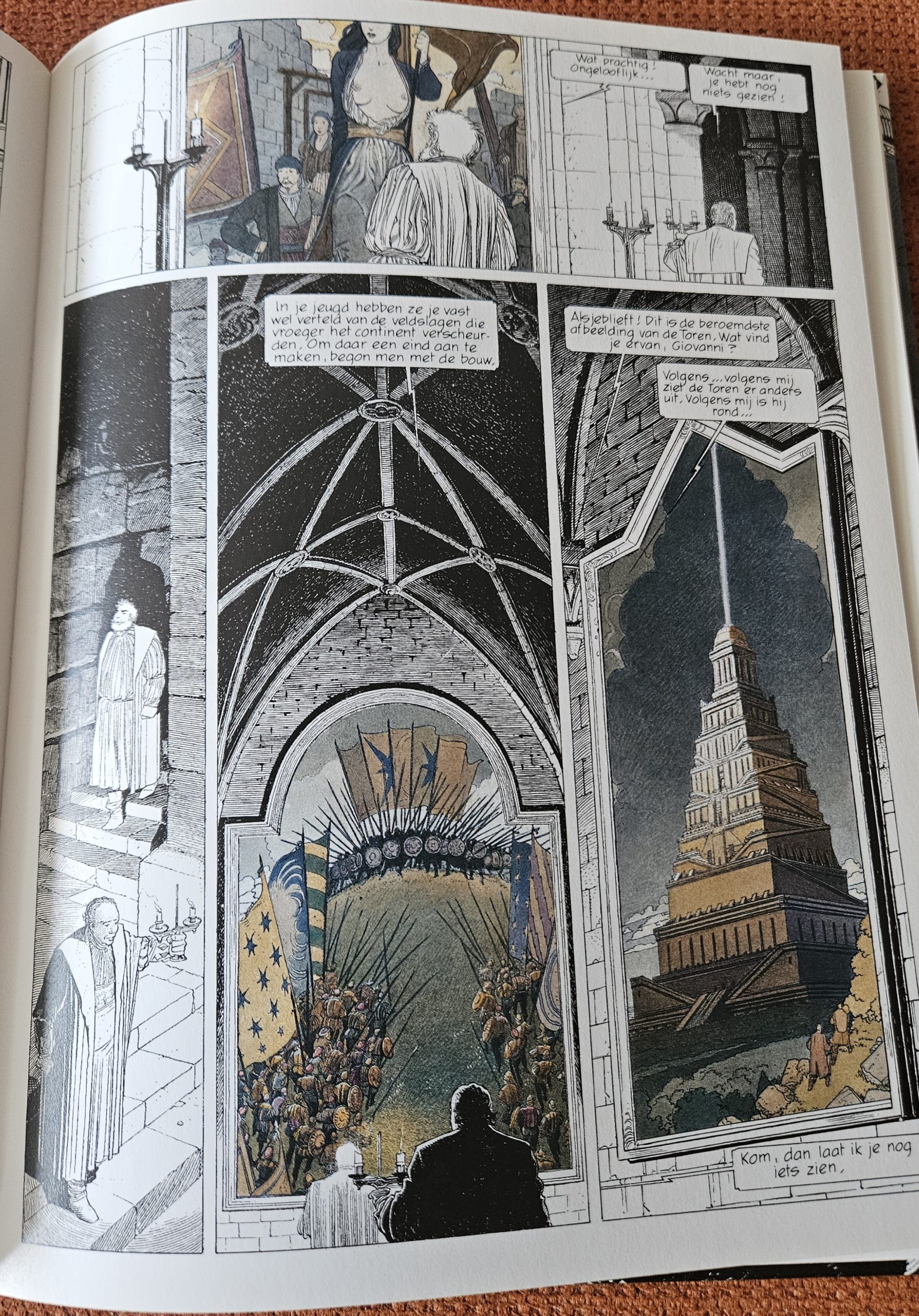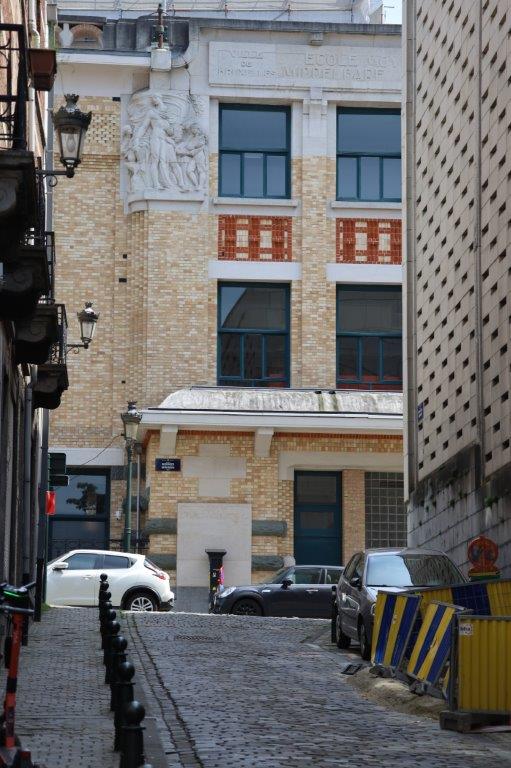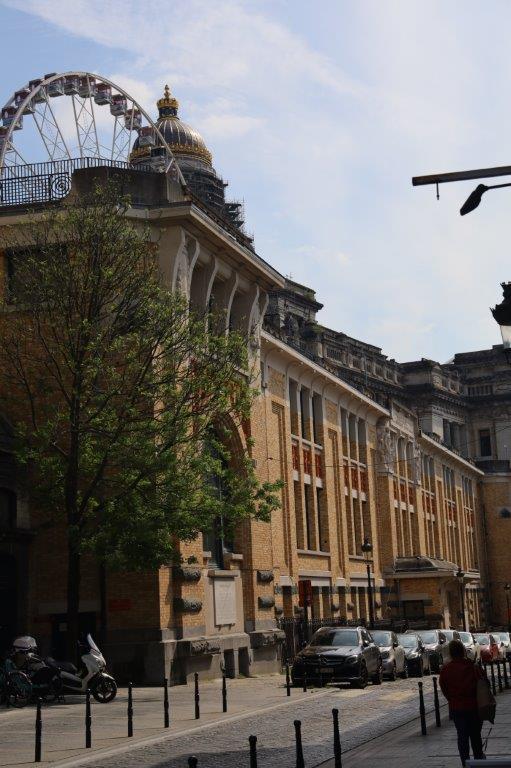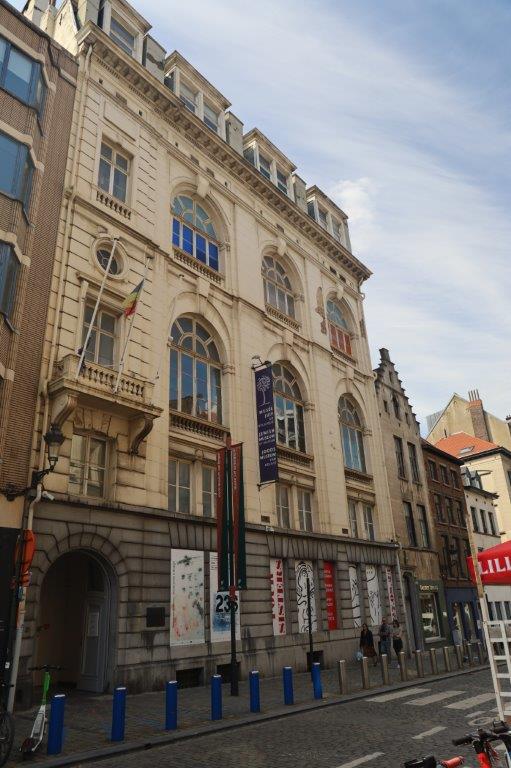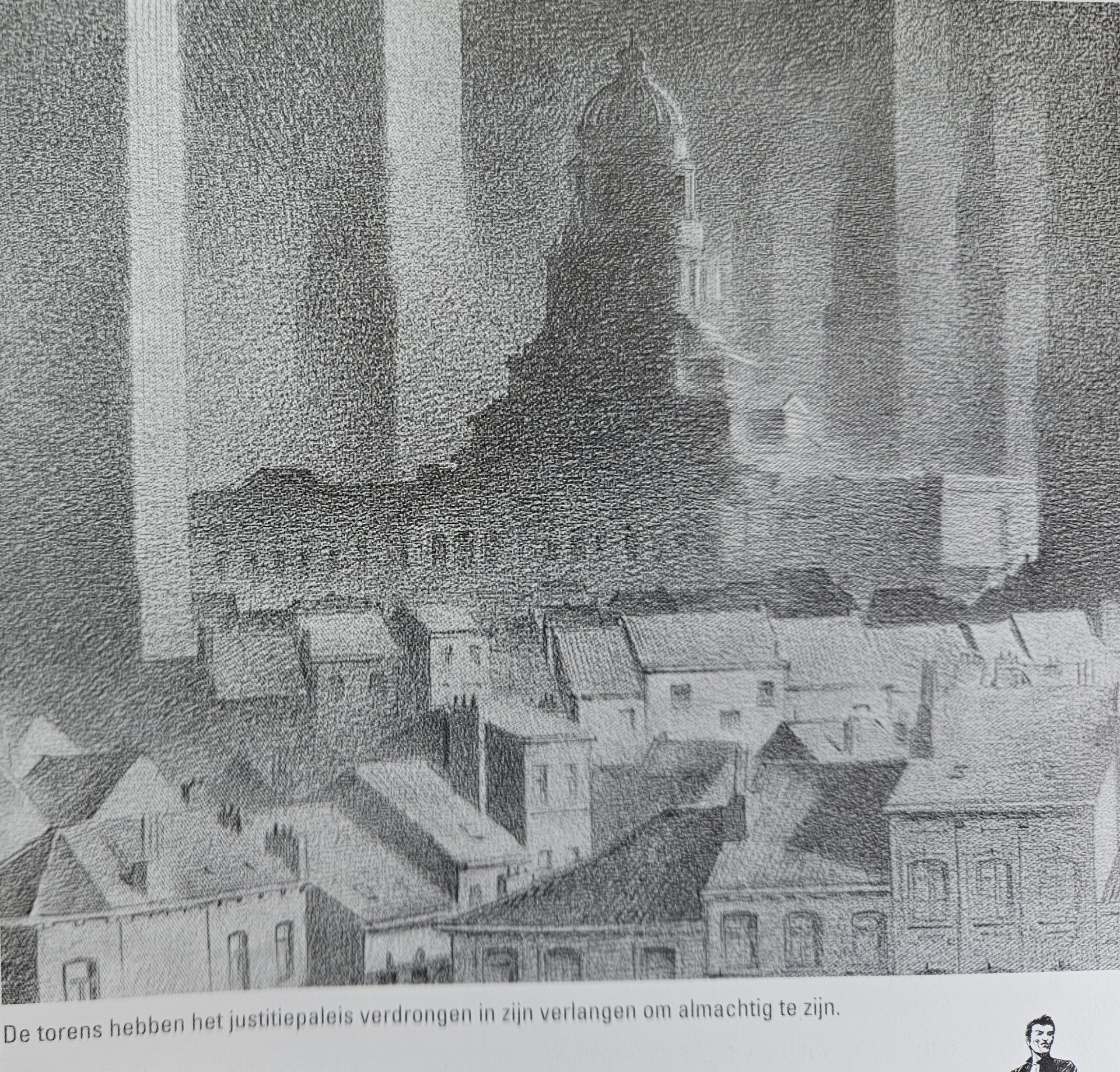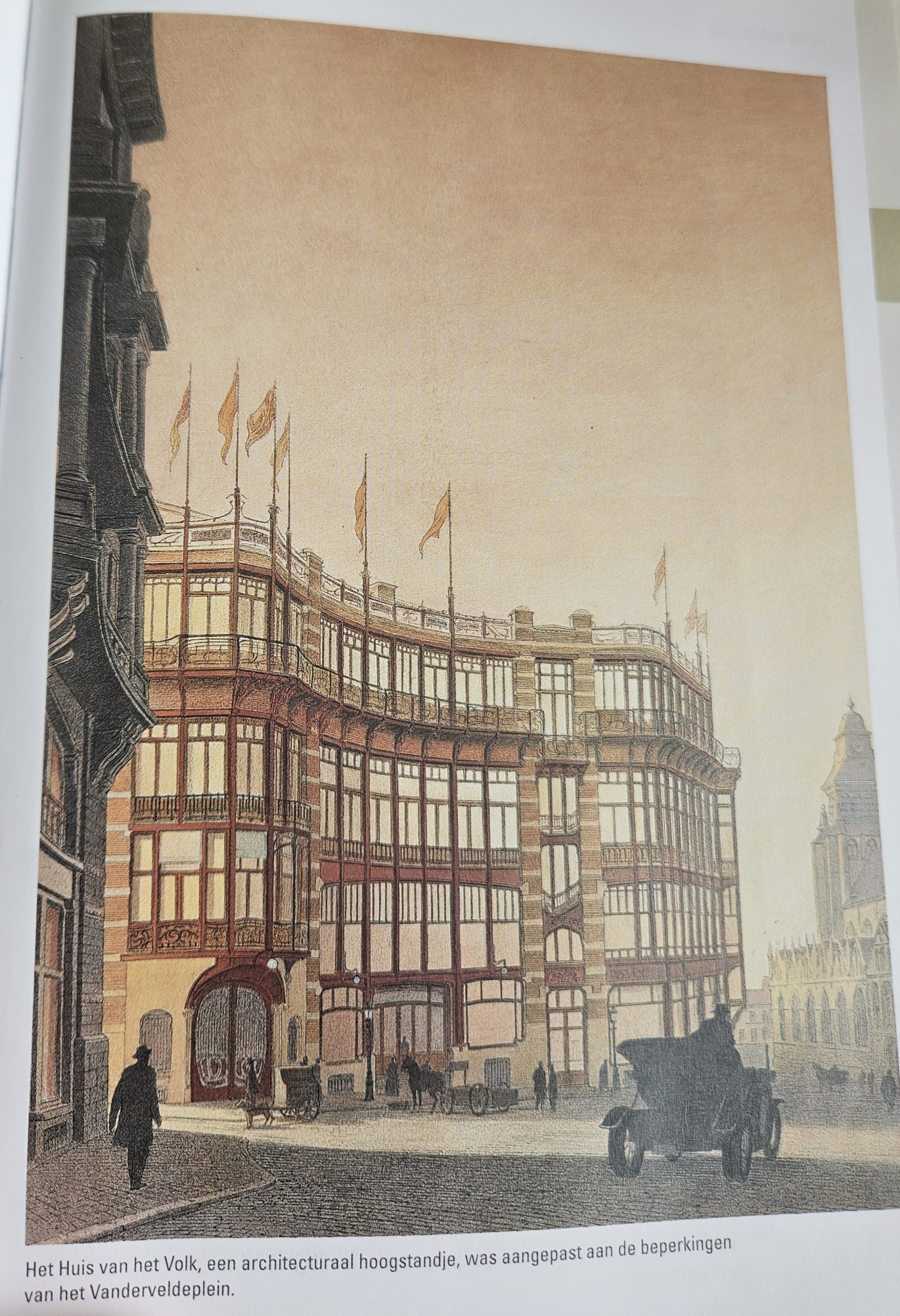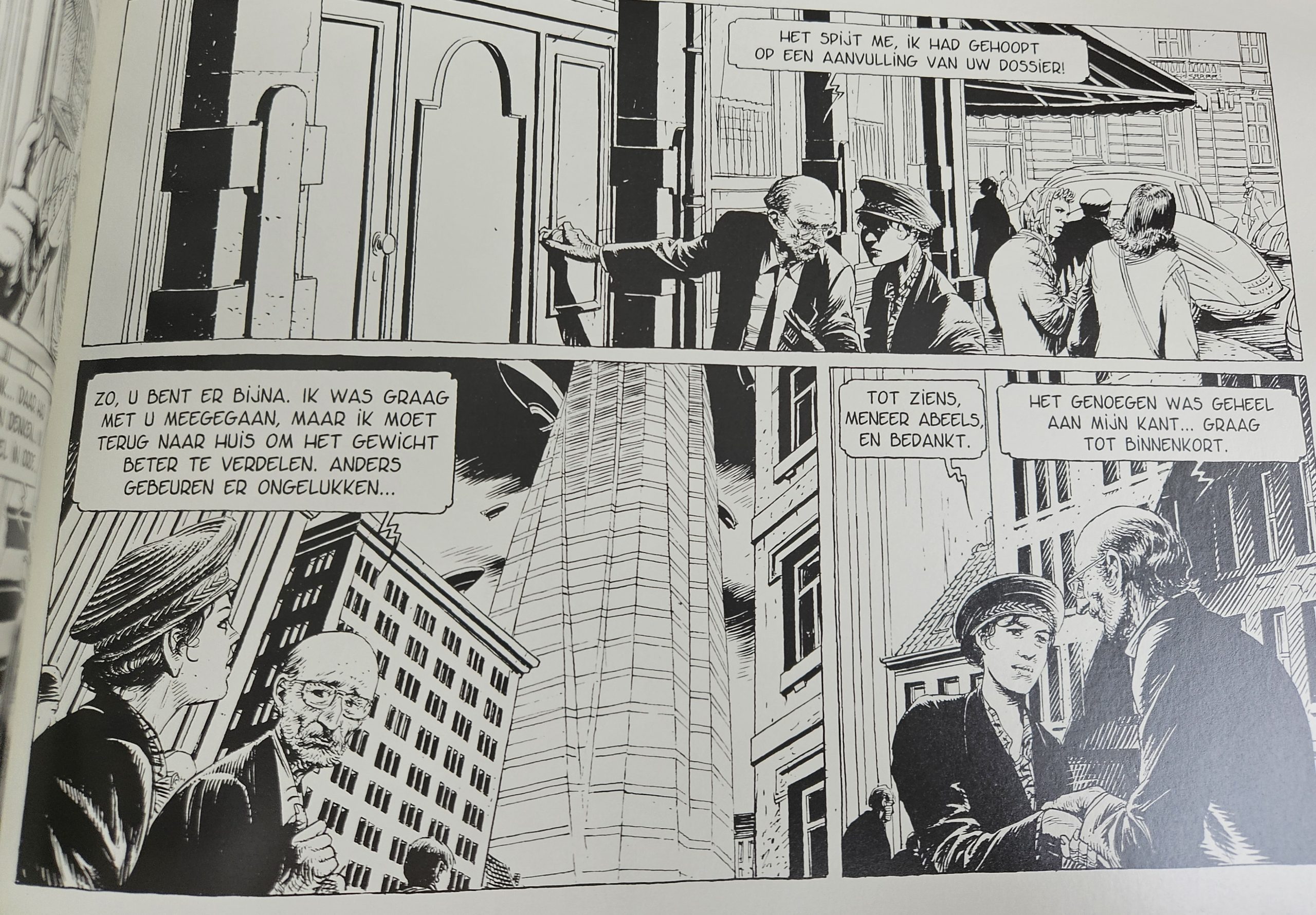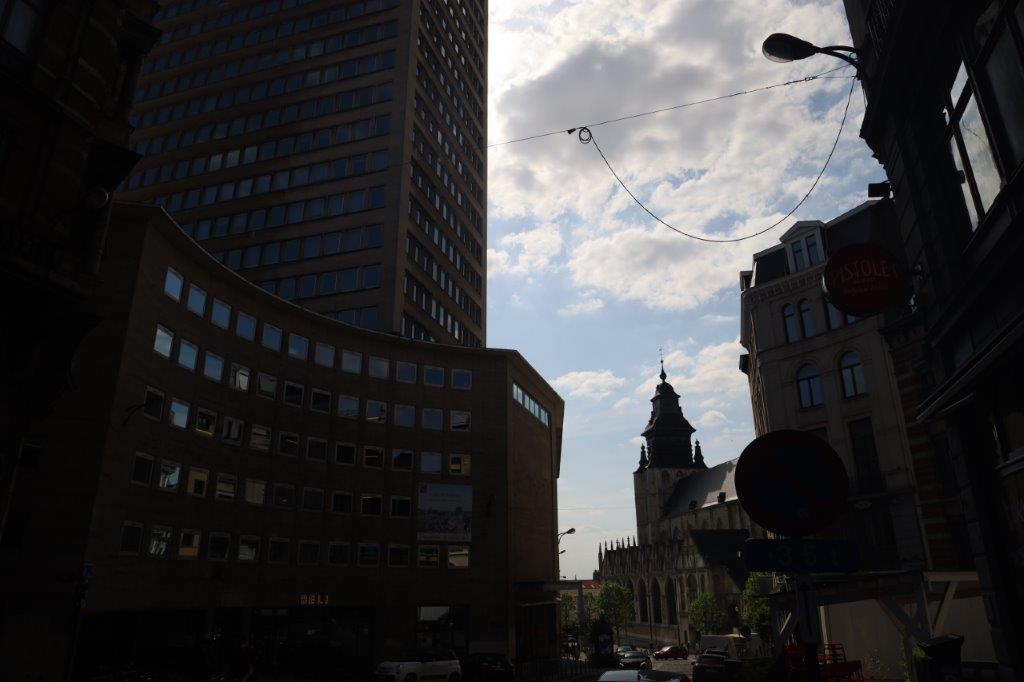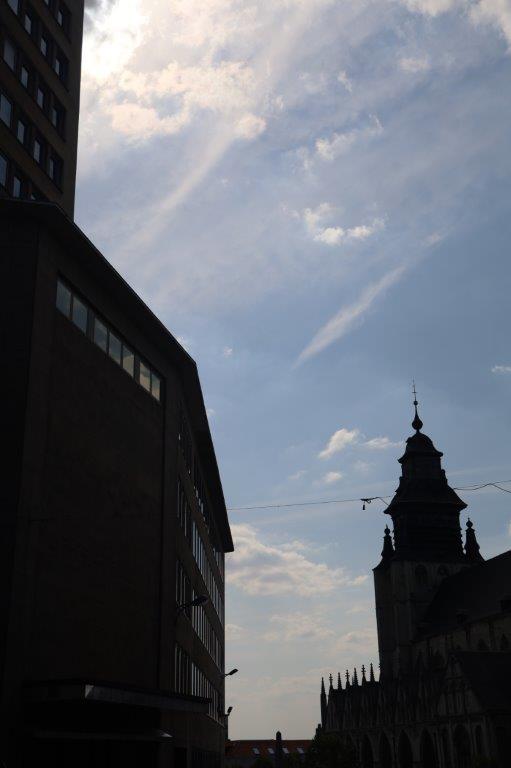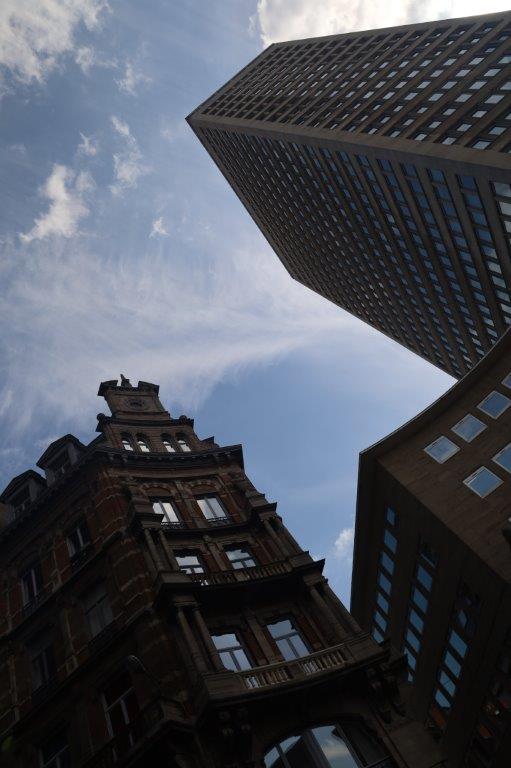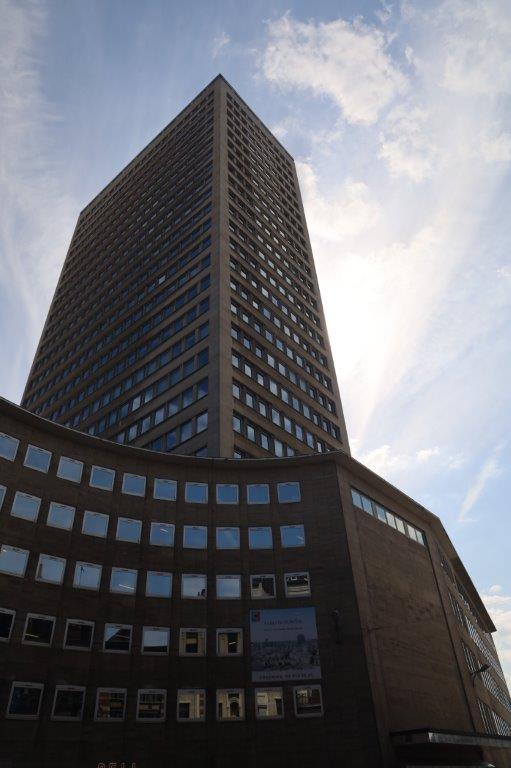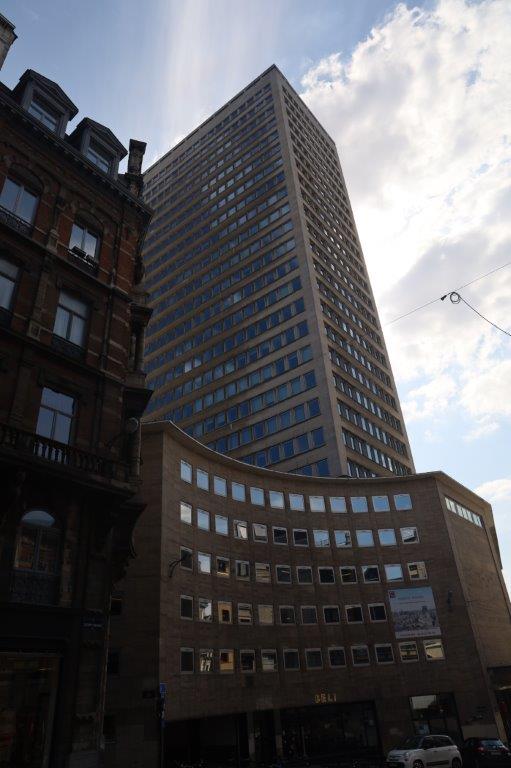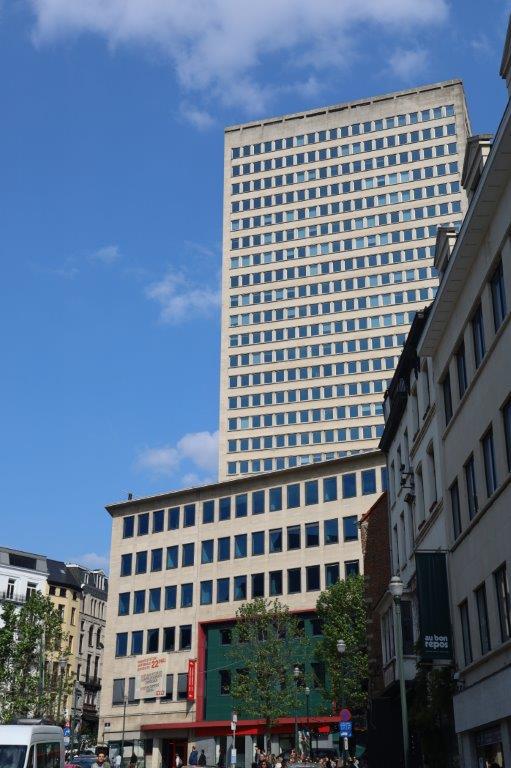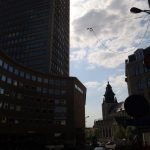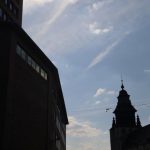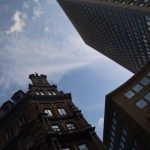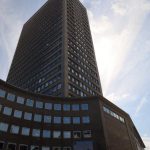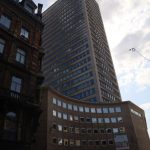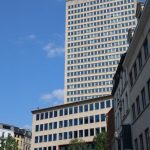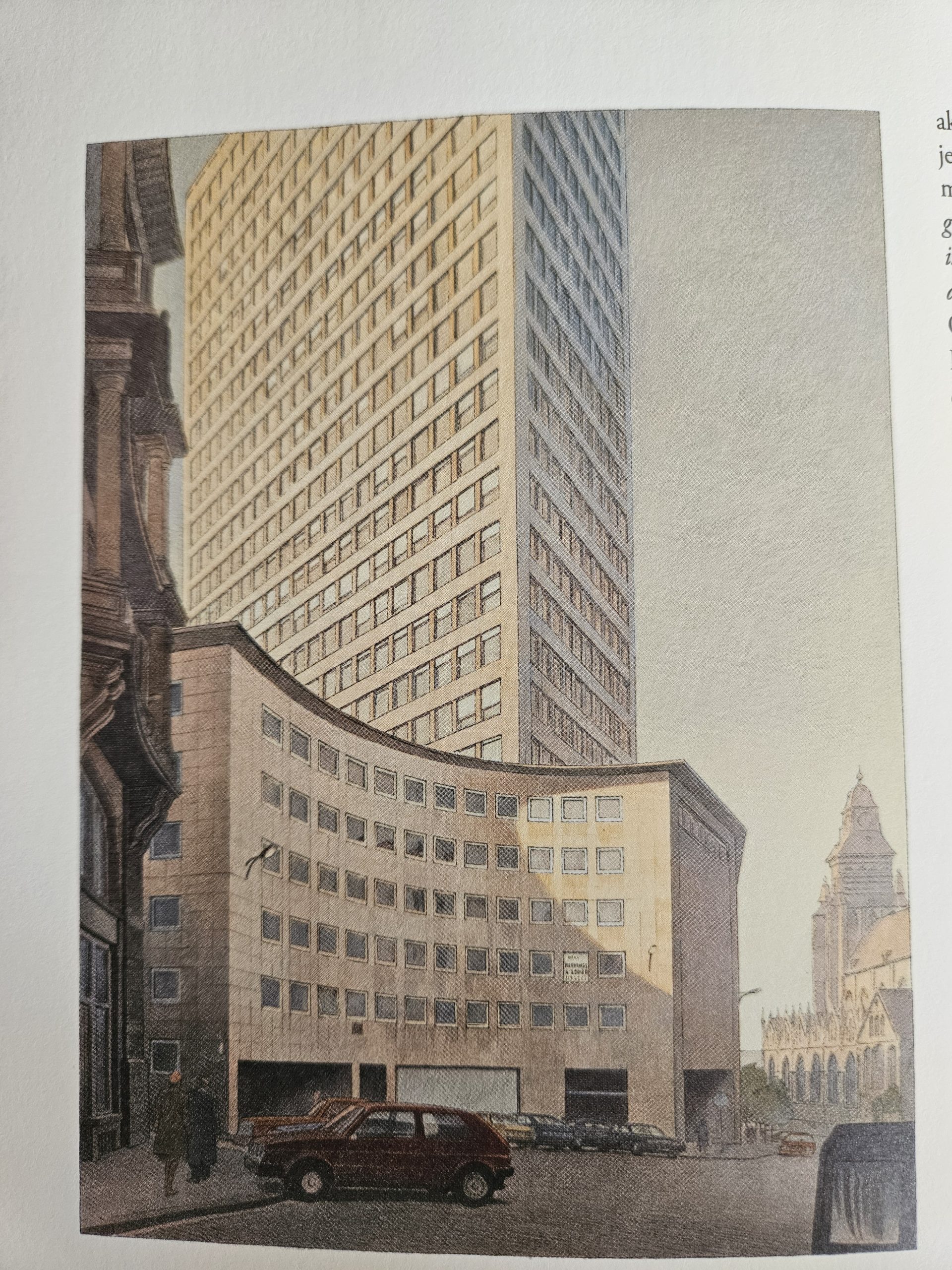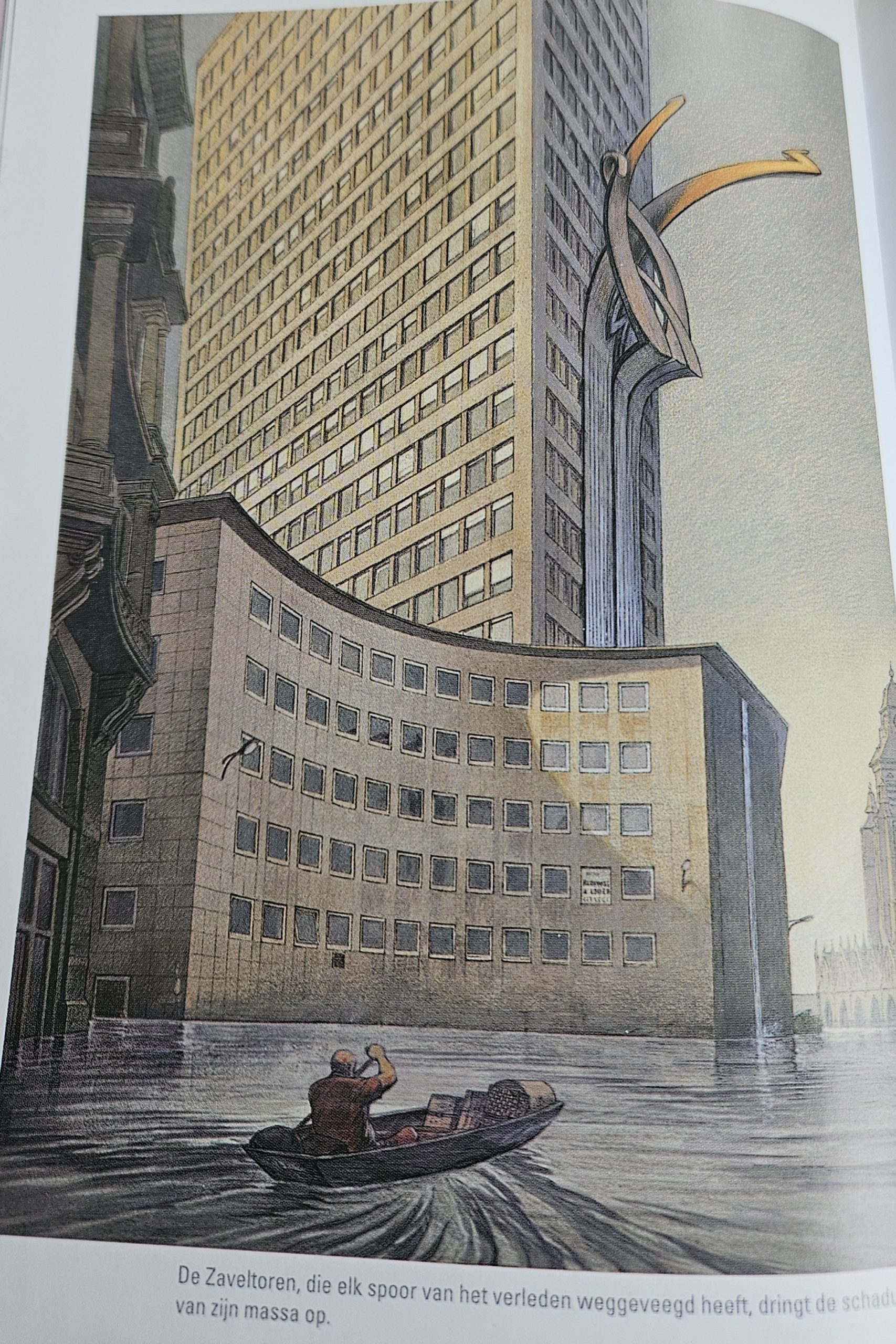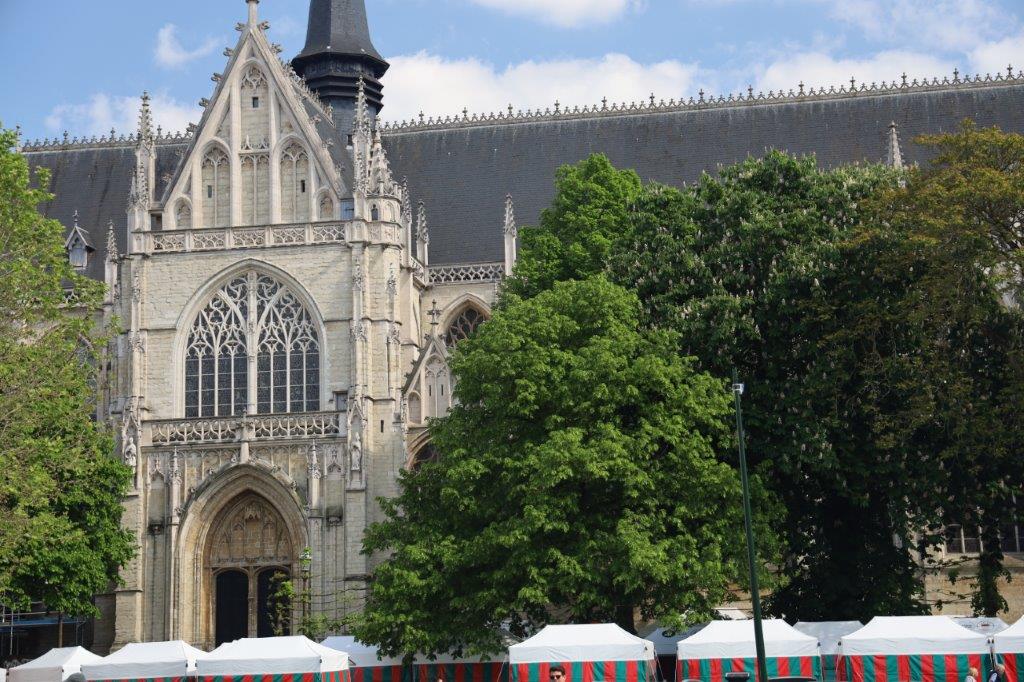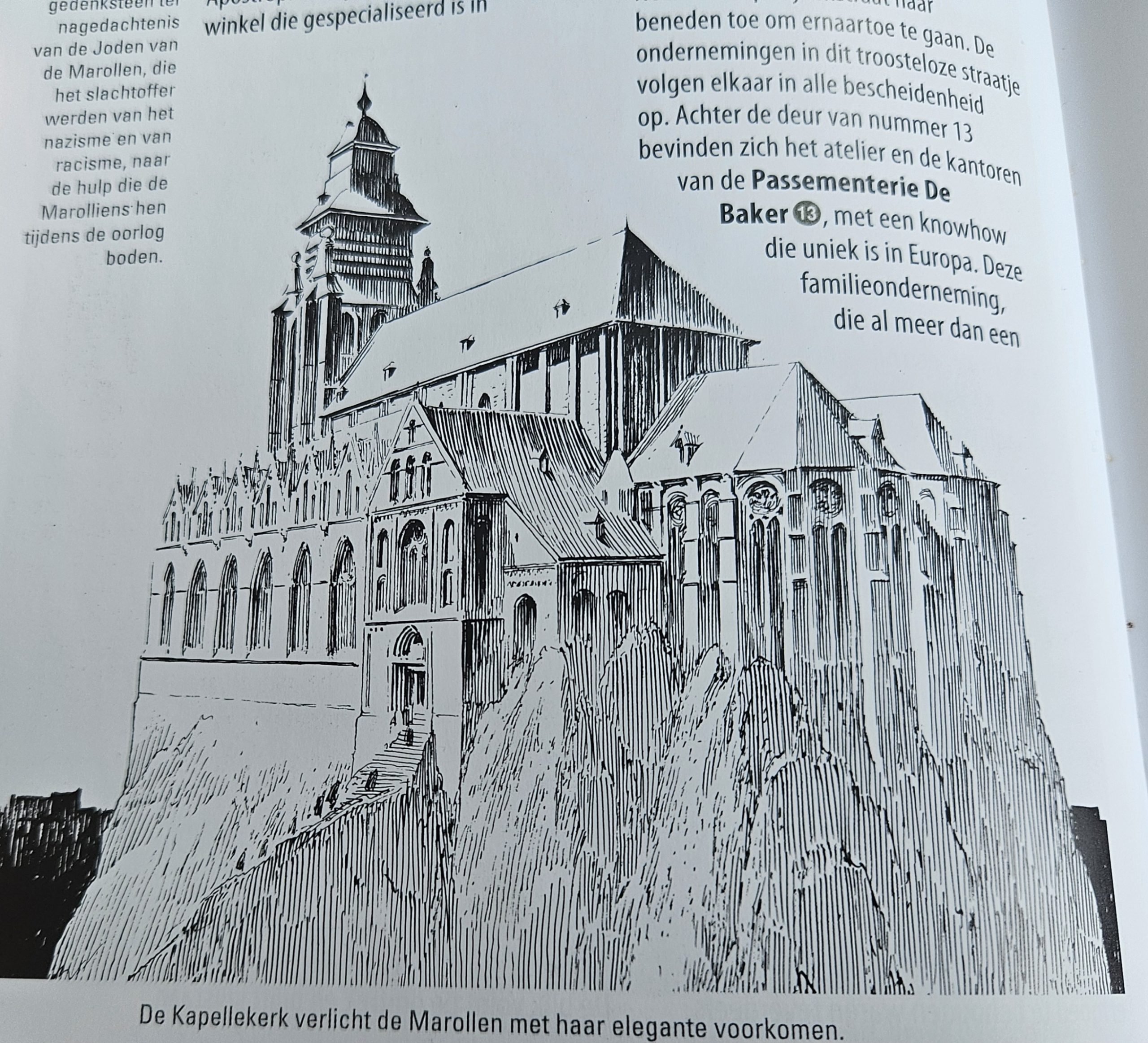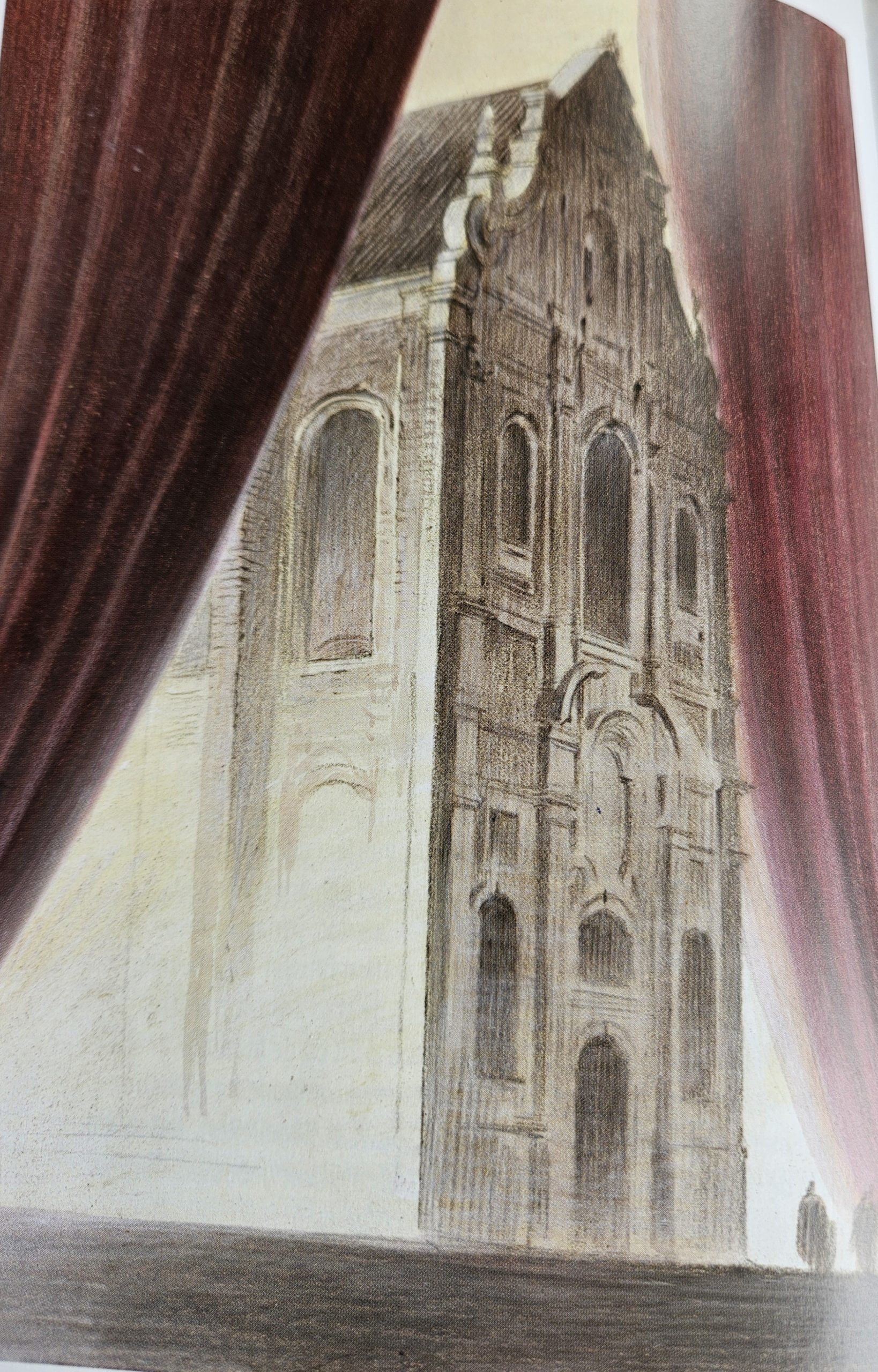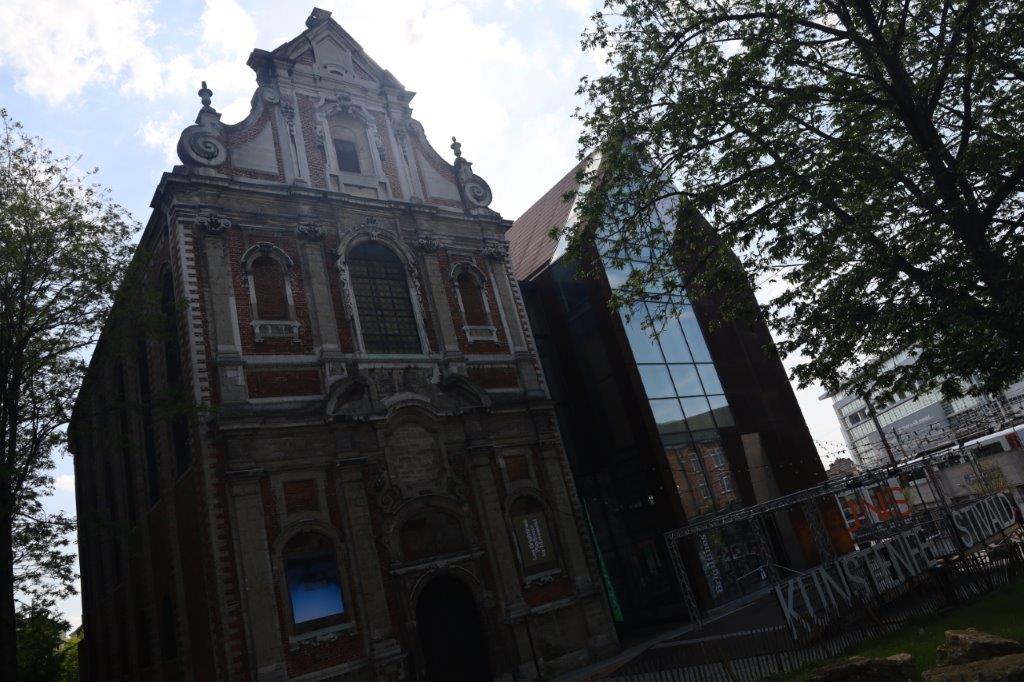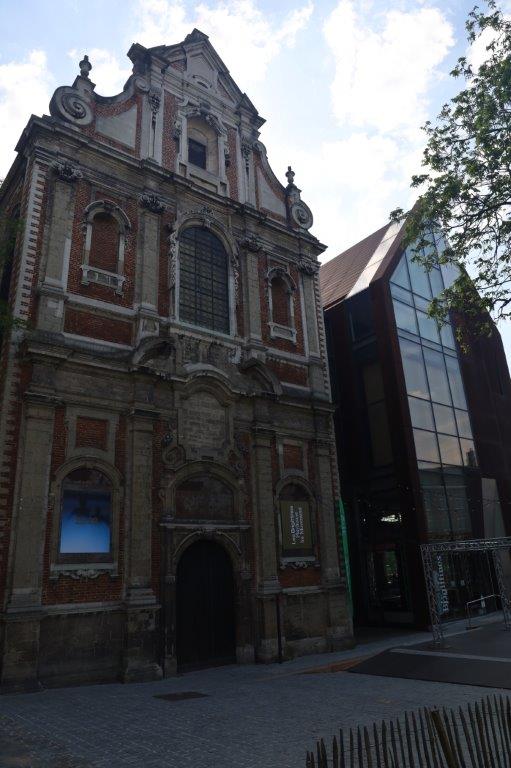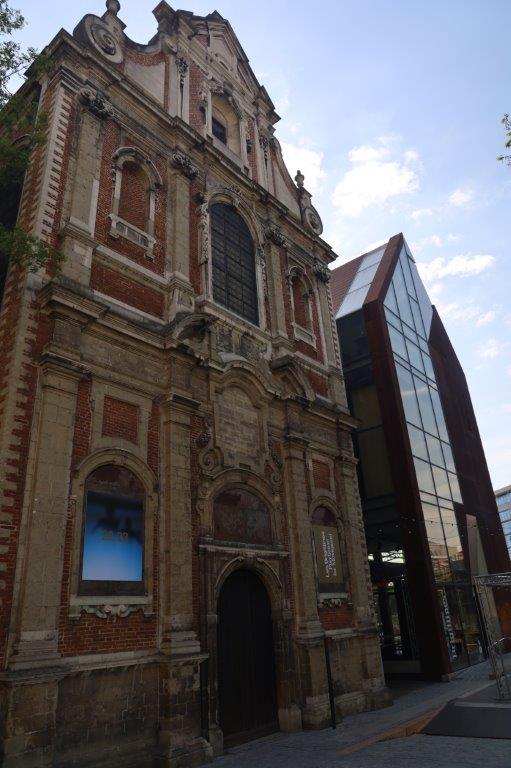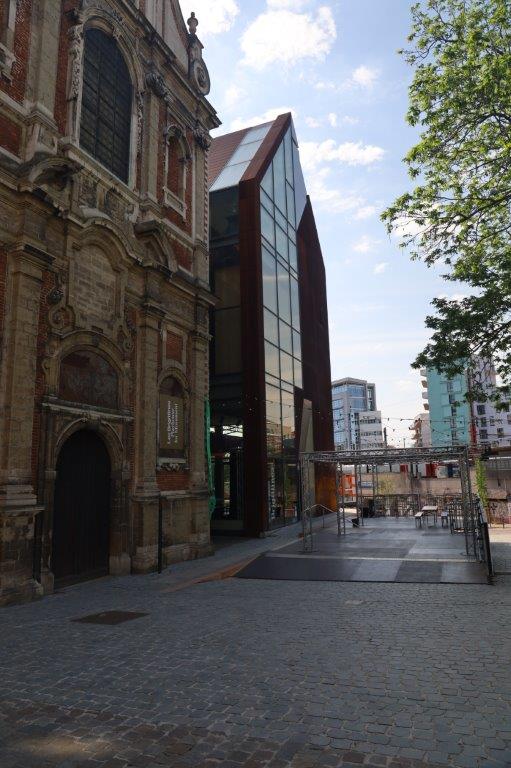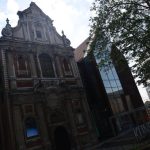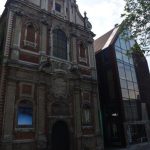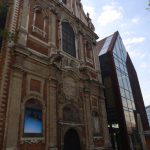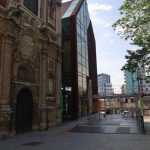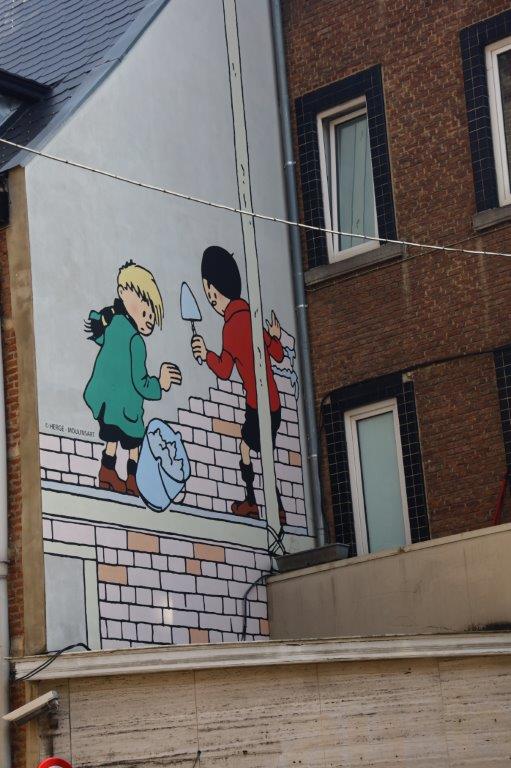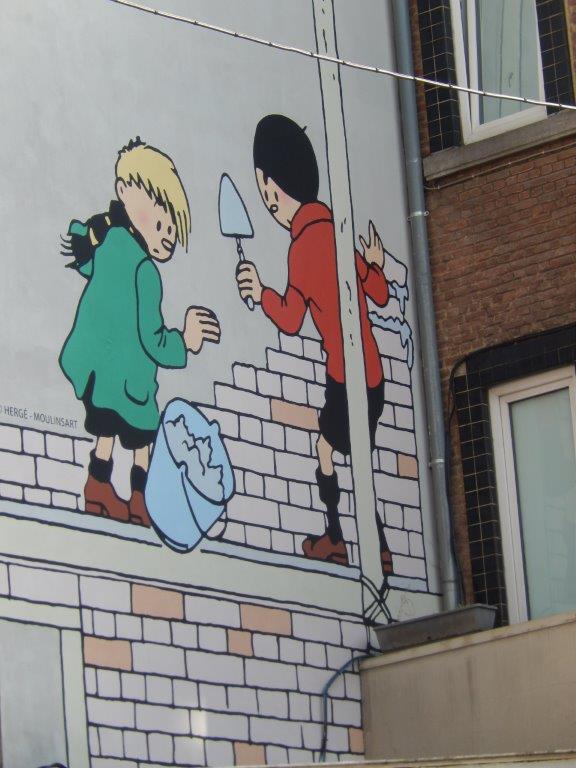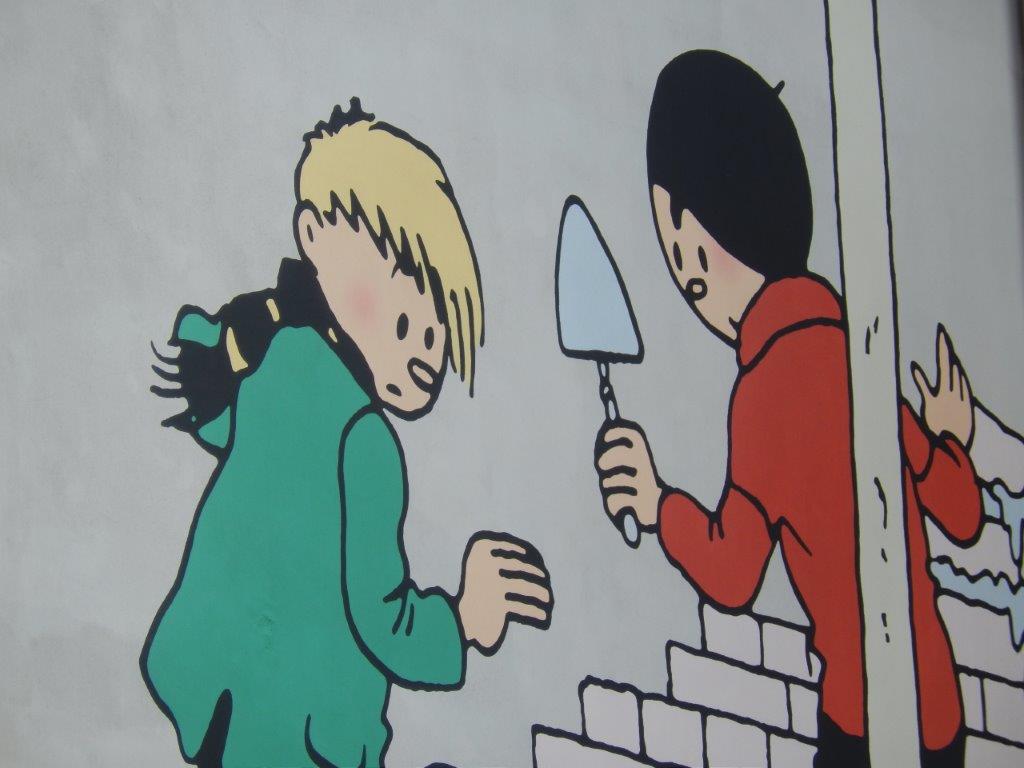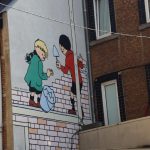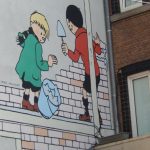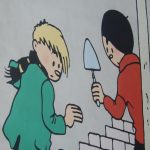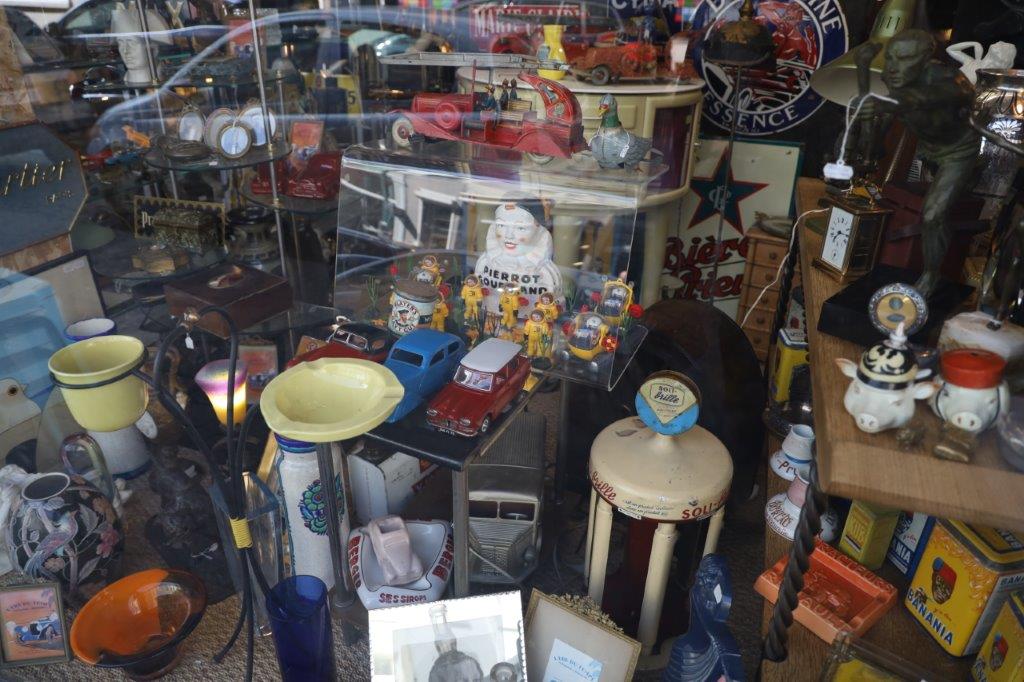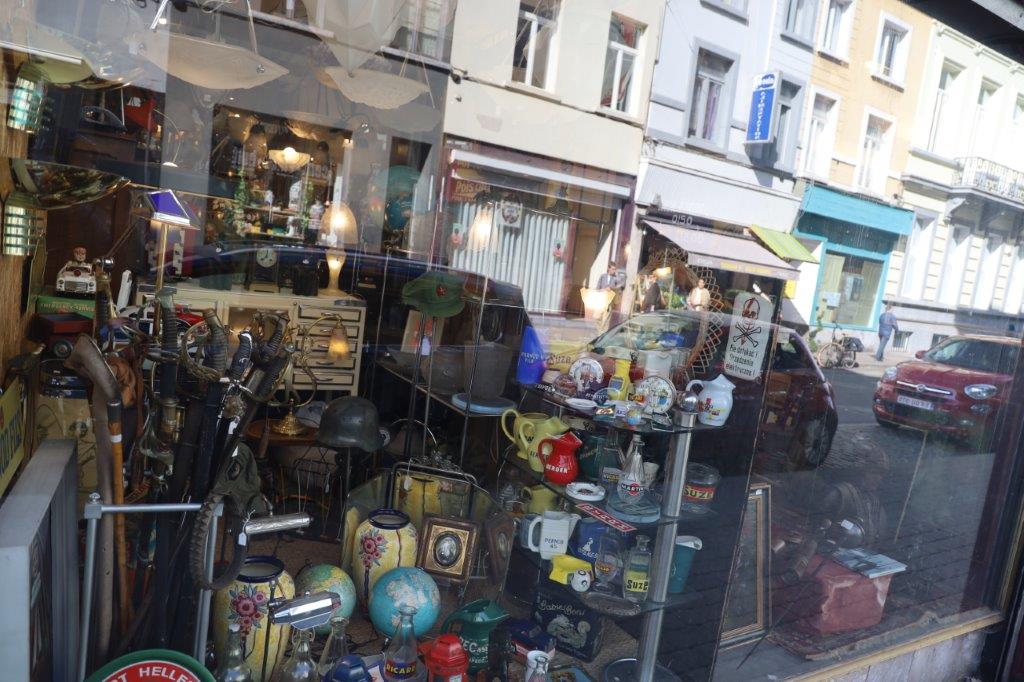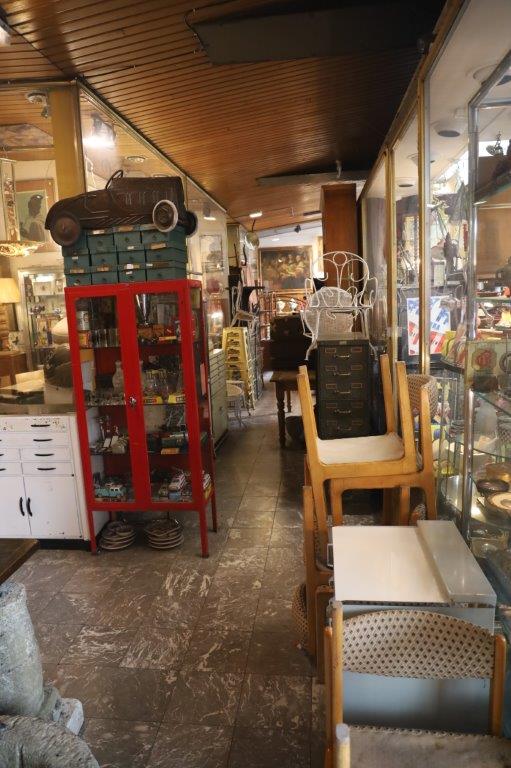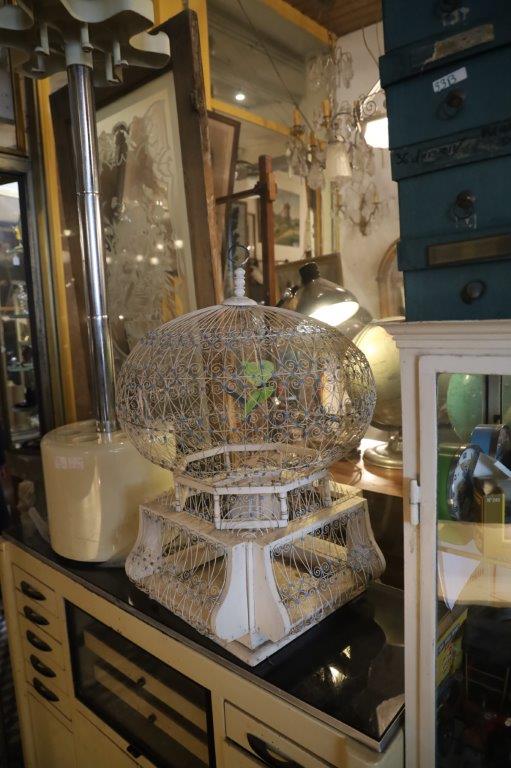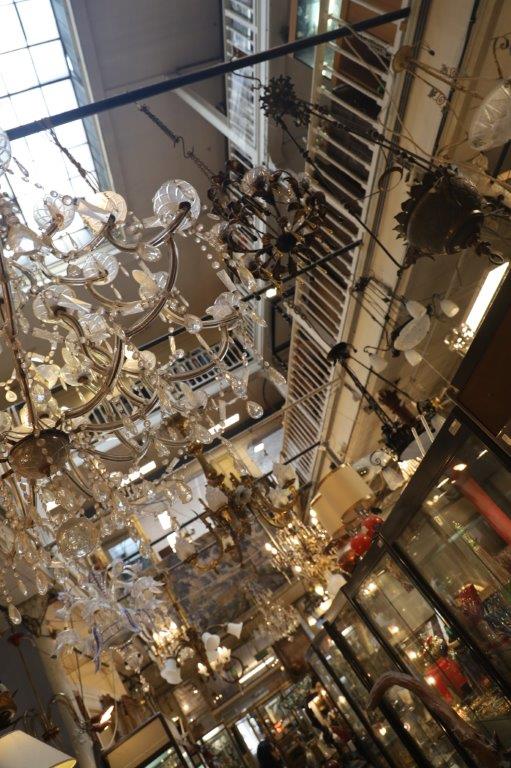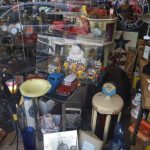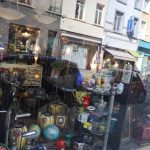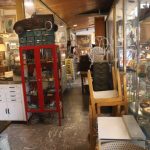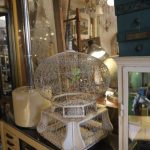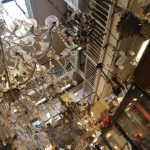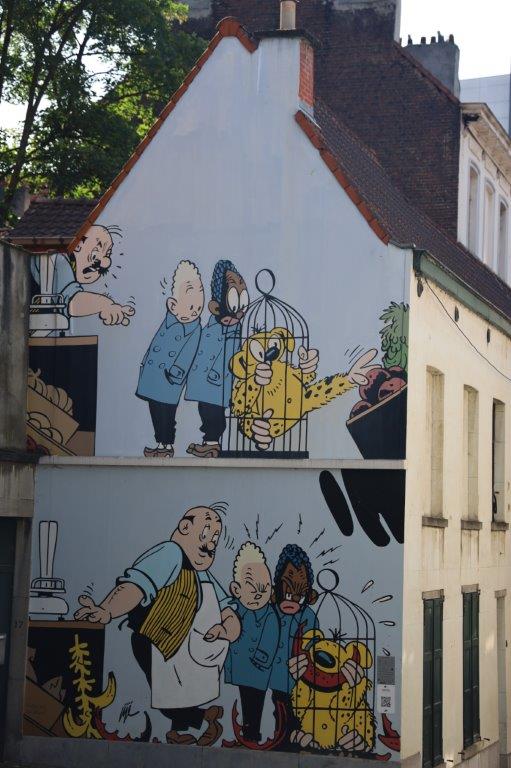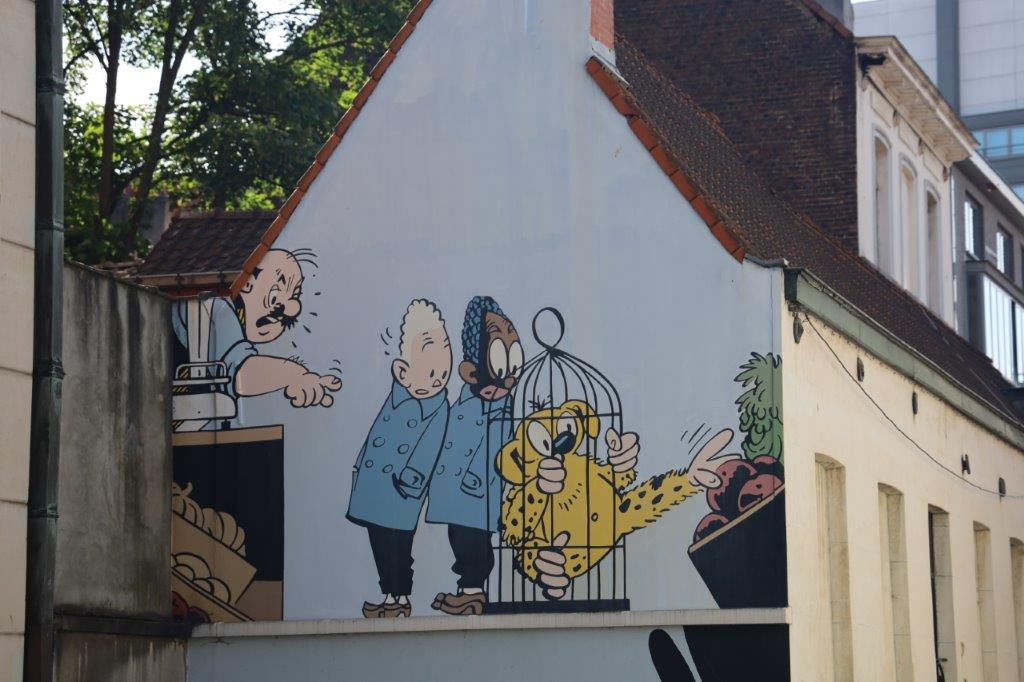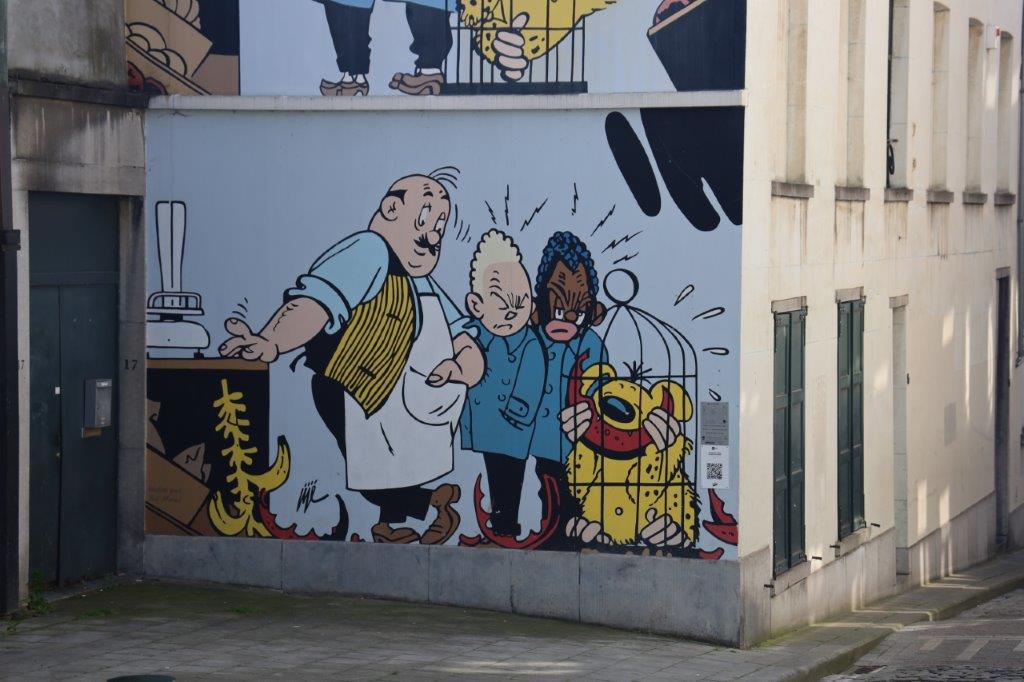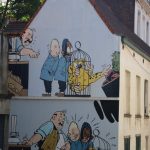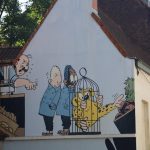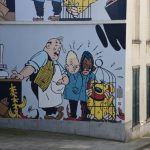Citywalk 2: Brussels according to François Schuiten: Les Marolles (De Marollen)
Les Marolles / De Marollen
The word Marolles, or to be more precise Marollen (=dutch), is a word I was introduced to several times on a very young age through the comic books of Willy VanderSteen and of Herge. Both mentioned the Marolles in respectively Suske and Wiske (Bob and Bobette) and in Kuifje (Tintin). I had no clue of what the Marolles were but I noticed they were like rather old, a bit shabby, a bit lower class, living quarters in Brussels. Well, this 2nd walk was guiding me right through them.
“The Marollen” is a working-class neighborhood in Brussels and the comic book “Het brommende brons” (The Buzzing Bronze) from the Suske en Wiske (Spike and Suzy) series was set in the Marollen district and was published in 1971 and co-written by Willy Vandersteen and Paul Geerts. The album portrays the Marollen as a real neighborhood, including its typical atmosphere.
The Marollen is a working-class neighbourhood in Brussels that was an important source of inspiration for the Belgian cartoonist Hergé, the creator of Tintin. The influence of this neighbourhood can be found in his work, particularly in the use of “Marollen Flemish” (Syldavian, a Brussels dialect, and Arabic) in specific events, such as the finding of the miniature ship at the flea market on Vossenplein in The Secret of the Unicorn.
The Marolles or Marollen is a popular historic neighbourhood of downtown Brussels, Belgium. It is situated between the Palace of Justice to its south-east, the Church of Our Lady of the Chapel to its north and the Halle Gate to its south. Its inhabitants are called Marolliens in French and Marollianen in Dutch.
Lying at the heart of the Marolles are the Place du Jeu de Balle/Vossenplein, home to the Old Market, and the Cité Hellemans collective housing complex. Major arteries of the district include the Rue Haute / Hoogstraat, Rue Blaes / Blaesstraat and the Rue des Tanneurs / Huidevetterstraat. This area is served by Brussels-Chapel railway station and Brussels-South railway station, as well as by the metro and premetro (underground tram) station Porte de Hal/Hallepoort on lines 2, 4, 6 and 10.
The traditional Brabantian dialect of Brussels (known as Brusselian, and also sometimes referred to as Marols or Marollien) was widely spoken in the Marolles until the 20th century. It still survives among a small minority of inhabitants called Brusseleers (or Brusseleirs), many of them quite bi- and multilingual in French and Dutch.
Before going down into Valkstraat (Falcon street), I walked down the Wolstraat (Whool street) and found a bench in the beautiful green oasis of the Jan Jacobs plein (Jan Jacobs square), where locals used to do some workouts or to play tennis. From the park I could see the dome of the Palais de Justice ….
The Valkstraat (Falcon street) descended right into Les Marolles, which proved to be one of the beating hearts of Brussels. A side entrance to the Palais of Justice got the attention of The Wandelgek.
Slowly the Wandelgek descended further and further …
This seems to be a piece of art of a chimneysweep …
Maurice Wolf’s ‘Monument aux vivants‘ In the shadow of the Palace of Justice, in the Valkstraat, is a monument that is typical of the rebellious spirit that haunts the Marolles: the ‘Monument for the Living’. Instead of honoring the dead, this bas-relief honors the living, joie de vivre, and Epicureanism.
The Marolles district is located south of the centre of Brussels, at the lower end of the pentagon. The district covers an area of 52 hectares. Place Poelaert, Avenue du Midi, the North-South Junction, Place de la Chapelle, and Rue des Minimes form the boundaries of the Marolles district. Two almost parallel axes, Rue Haute and Rue Blaes, cross the district.
Historically, the Marollen were situated higher than they are now and were limited to Montserratstraat and a few streets with bad reputations around it (Miniemenstraat, Voorzorgsstraat, Valkstraat, Waaierstraat, Onze-Lieve-Vrouw-van-Gratiestraat). Right next door, the construction of the Palais de Justice has amputated the neighbourhood from densely populated alleys and hundreds of houses.
Proceed by turning left into Hoogstraat …
The construction of the Palace of Justice in Brussels was a monumental event, but it came with a heavy cost for the inhabitants of the Marolles neighborhood. To clear space for the Palace, a sizable section of the district was demolished—over 600 houses were razed, displacing hundreds of residents. While compensation and new homes were offered to some, many were forced into smaller, cramped dwellings far from their original community, disrupting tight-knit local bonds and daily life.
The Baron Steens School on Hoogstraat in Brussels is a primary school located in the Marolles district. The building dates back to 1895 and was inaugurated in 1897, designed by architect A. Samyn. This makes it a historic landmark, characteristic of late 19th-century Brussels school architecture
Its location in the vibrant Marolles and its distinctive architecture make it interesting for visitors who want to discover authentic Brussels. The school is active in the neighborhood and open to all students, with special attention to bilingual education (Dutch-French) and cultural projects that connect with the local community.
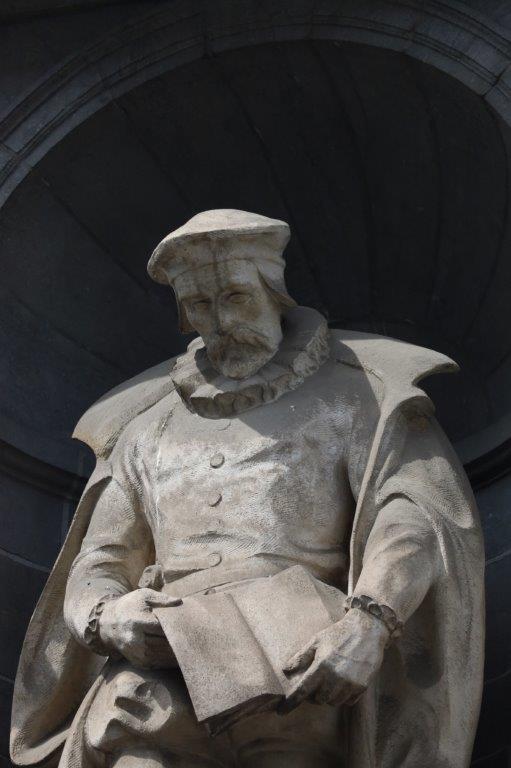
The people of the Marolles have long been known for their rebellious spirit and independence. When the forced relocations began, anger grew quickly. The local dialect even coined a special insult—schieven architect, meaning “shameful architect”—aimed directly at Joseph Poelaert, the architect of the Palace, despite the fact that he himself lived nearby and perhaps did not anticipate the extent of the impact on his neighbors. Marolles citizens openly expressed their resentment through both protest and proud defiance, establishing their reputation as a community unwilling to bow quietly to authority.
This rebellious nature is woven into the very identity of the Marolles, and their response to the Palace of Justice’s construction is often cited as a defining chapter in Brussels’ urban and social history.
The street art in The Marolles is quite spectacular. It is connected to events or people in the neighbourhood, to famous people from the past and to the famous belgian comics as well.
Naturally the freedom for Ukraine is mentioned as well …
This one is a modern version of my favorite painting by belgian painter Pieter Brueghel, named: Hunters in the snow.
The original has been my favorite painting for quite many years now:
Even the vans are decorated …
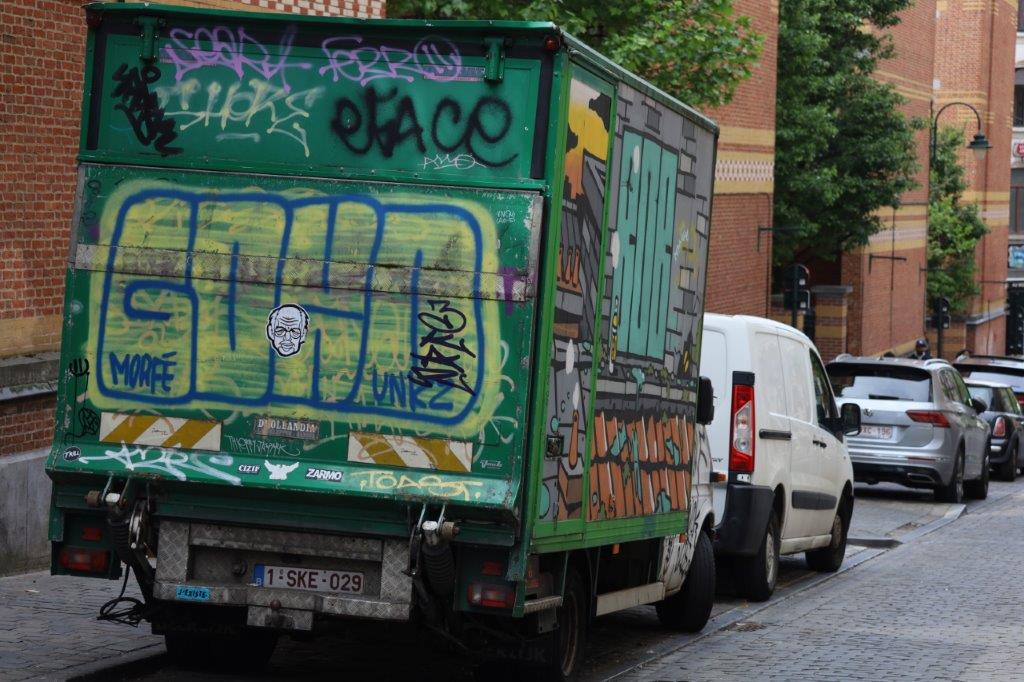
Next turn right into the Sistervatstraat.
This street has a lot of side streets, branching off to the left. The Wandelgek noticed these were all named after very old craftsmen…
From the building of the OCMW (Openbaar Centrum voor Maatschappelijk Welzijn/Public Centre for Social Welfare) up to Blaesstraat and Vossenplein, on the left lies the territory of the Cité Hellemans, which was the first set of social housing built in Brussels at the beginning of the last century. These were dwellings for the truly poorest residents, who until then had been packed together in large blocks and unhealthy, dead-end alleys. This collection of houses, inaugurated in 1915 and named after the architect who designed them, consists of seven identical, parallel apartment buildings constructed from Hoogstraat to Blaesstraat. Their appearance is characterized by multicolored bricks, elements in natural stone, bands of decorative ironwork, and recently restored Art Nouveau decorations, with south-facing terraces and flat roofs. The corridors separating them take their names from the trades once practiced in the Marolles: Timmerliedenstraat, Kuipersstraat, Stoelenmakersstraat, Borduurdersstraat, and Goudsmedenstraat. You will come across them when you walk down Sistervatstraat towards Blaesstraat.
At the end of the Sistervatstreet, is the famous Vossenplein (Fox Square).
Brolmarket in the Marolles
To left, your view is attracted by the Vossenplein (Fox Square) and its brolmarket (fleemarket/vlooienmarkt) …
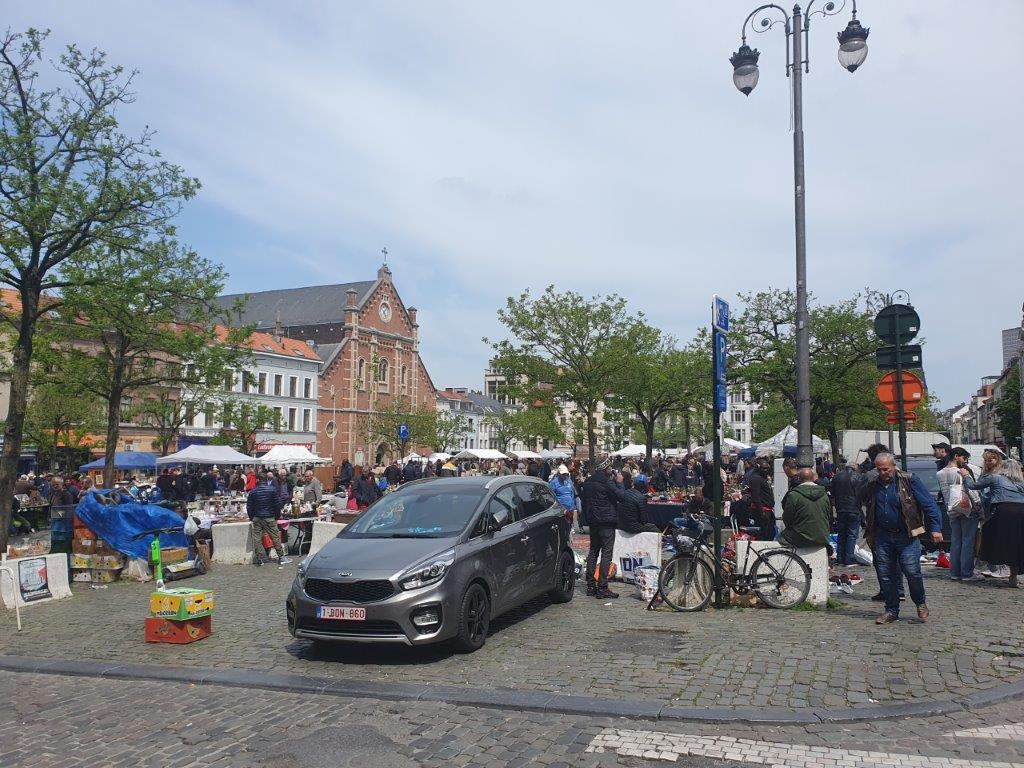
The square is a lively, well visited market square where tourists as well as locals skim the stalls for anything to buy …
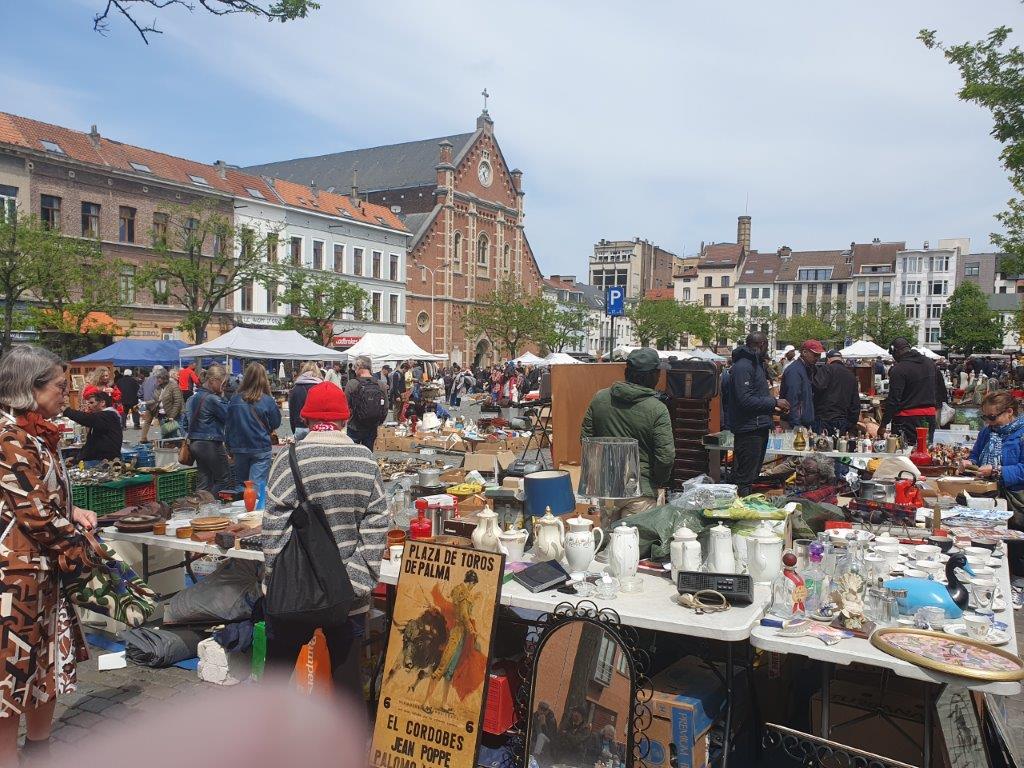
But The Wandelgek was more interested in the stores around, because he was in search for some rare books by François Schuiten. The Netherlands and the Flemish dutch speaking provinces are nice market to sell books, but the French language market of Wallon, Brussels, France and part of Switzerland is quite a lot larger so not everything Schuiten published has been translated into dutch as well. The Wandelgek knew he could find some rare jewels overhere and modern language translation apps would help him overcome the language problems.
In search for rare books by François Schuiten …
A shop named Enigmatic first caught The Wandelgek’s attention …
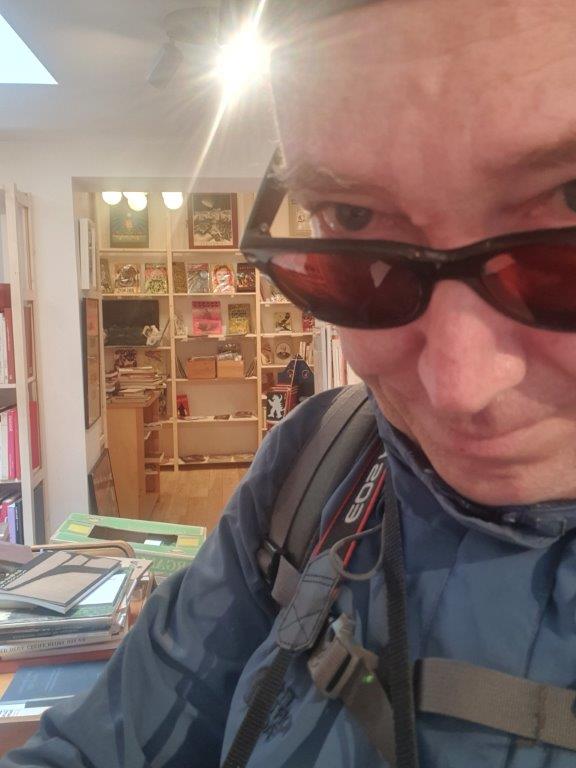
It was filled to the brim with books and its interior was like a maze of bookcases although there were empty spots on the walls left from some more artsy stuff to sell….
After searching for a while, The Wandelgek did find some Schuiten books but not as much as he had hoped for…
Comic book store closed
Next he discovered the comic bookstore at the Vossenplein and it looked rather promising, but also rather closed …
So he decided to return the next day.
The area where the Marollen now lies grew up around the Kapellekerk (Church of the Chapel), so named because a chapel dedicated to Our Lady was built there in 1134. A few artisans’ houses quickly sprang up around it. Another kilometer further, along the old Roman road, a leper colony was established (lepers were then banished from the city). These are the two locations between which the Marollen would grow: the Kapellekerk on one side and the Sint-Pietershospital on the other. Hoogstraat runs between them.
The Church of Our Lady of the Immaculate Conception is a church building in Brussels, located at Vossenplein.
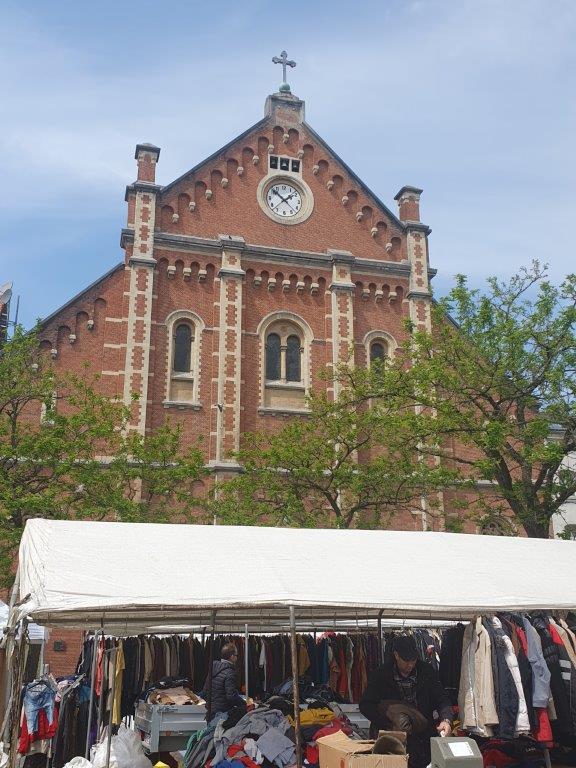
The church, in a Romanesque-Gothic transitional style, was built between the 12th and 13th centuries above an earlier chapel. Following a fire in 1405, its nave was rebuilt in the Brabantine Gothic style and enlarged with side chapels. Its Baroque slate bell tower dates from the 18th century. The complex was designated a historic monument in 1936.
Next The Wandelgek followed his walk into the Vossenstraat, …
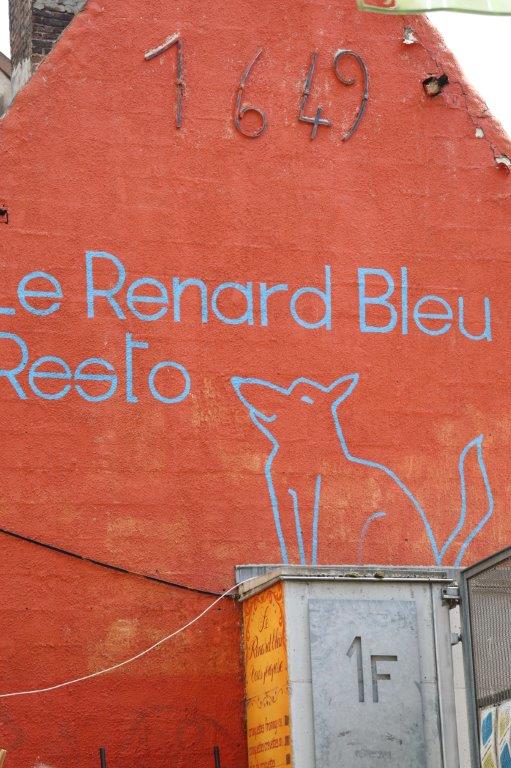
The whole neighbourhood seemed to have been alert in covering every bit of dull empty wall with street art …
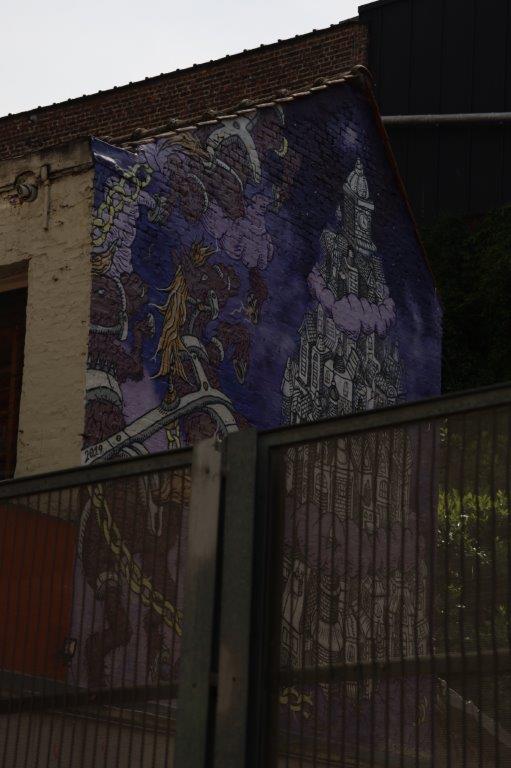
…thus returning to the Hoogstraat.
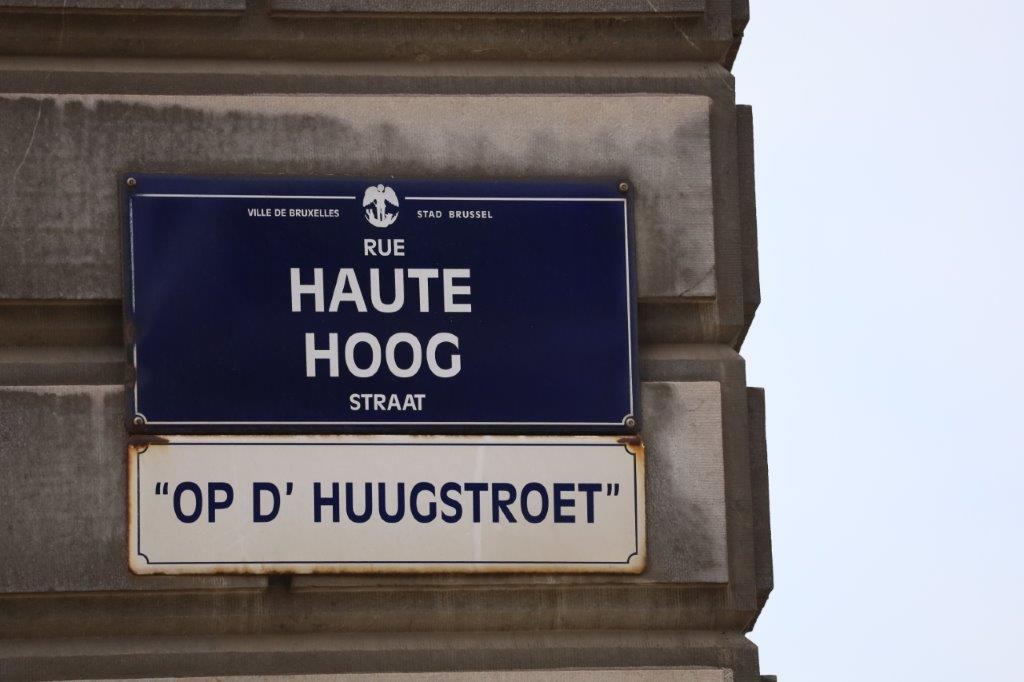
He turned left into the Hoogstraat …
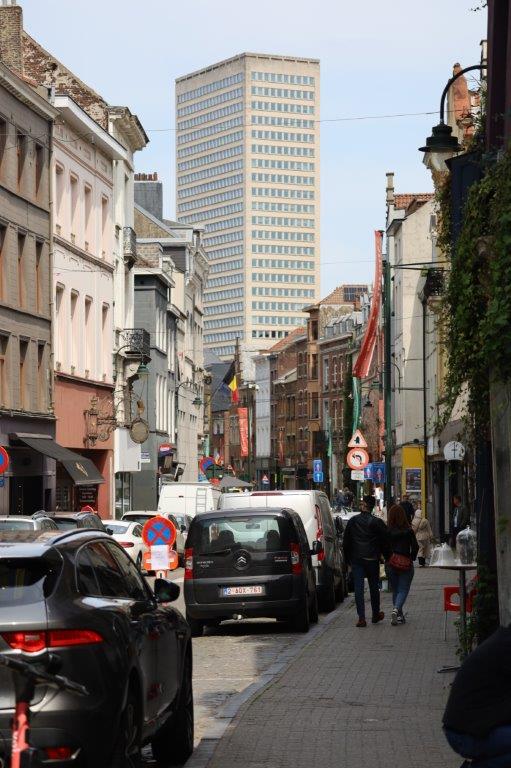
… and then found this street art Robbedoes / Spirou (a famous Belgian comic figure, basically dressed as a liftboy, made famous by André Franquin. André Franquin (Etterbeek, 3 januari 1924 – Saint-Laurent-du-Var, 5 januari 1997) was a Belgian6comic book author, mainly known for his work on the series: Guust (Gaston). Additionally he was co author of the series Marsupilami and Robbedoes en Kwabbernoot. It showed also two foxes, a lot of salesmen waving money and the Church of Our Lady of the Immaculate Conception in the background.
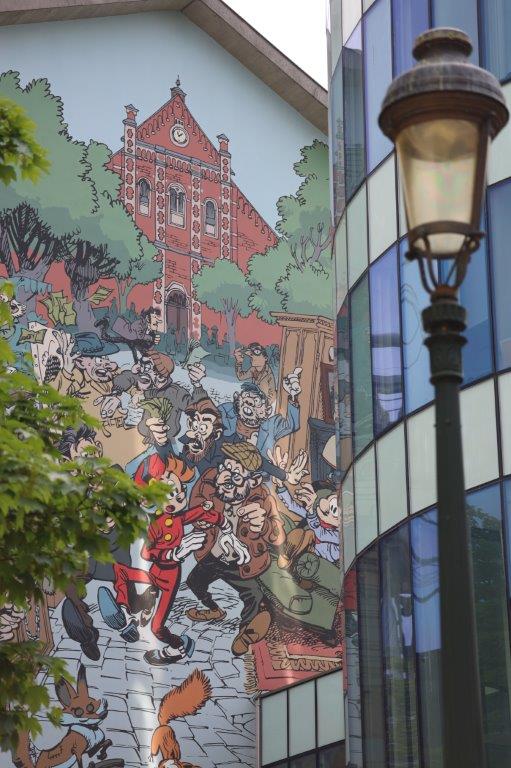 Nothing looked dull in this neighbourhood. I love the painted windows and window blinds which add a lot to the attractiveness of this otherwise empty wall …
Nothing looked dull in this neighbourhood. I love the painted windows and window blinds which add a lot to the attractiveness of this otherwise empty wall …
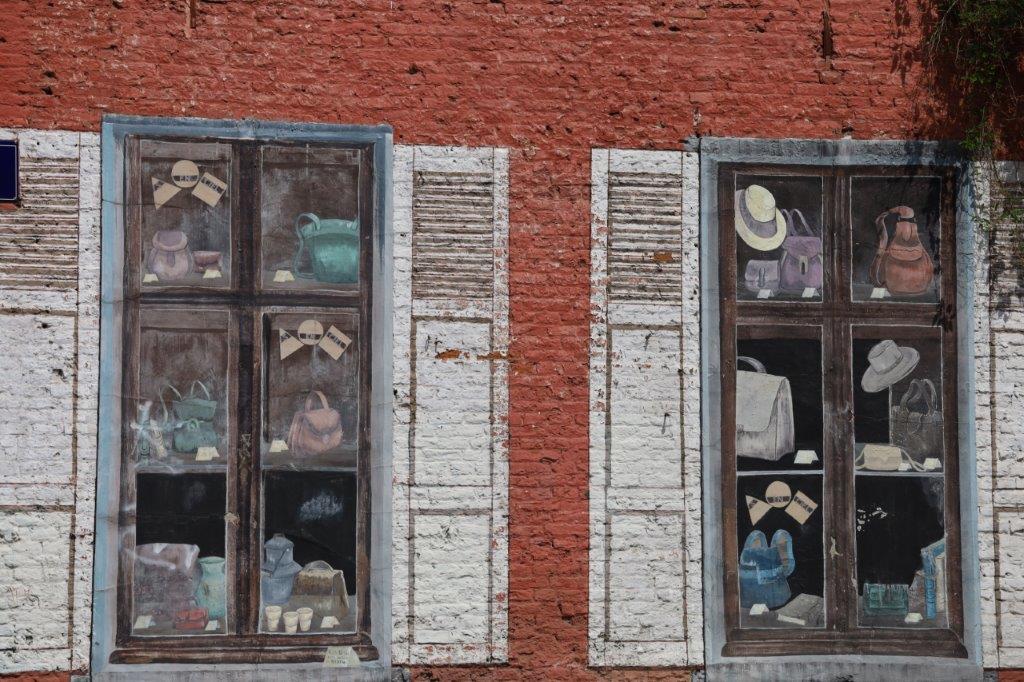
At Hoogstraat 139, the former Jacqmotte coffee roastery, renovated by the architectural firm M. & J.-M. Jaspers – J. Eyers & Partners, now houses apartments for lofts, offices, or galleries. This is a first in this neighborhood, recognized and designated as a successful example of renovation.
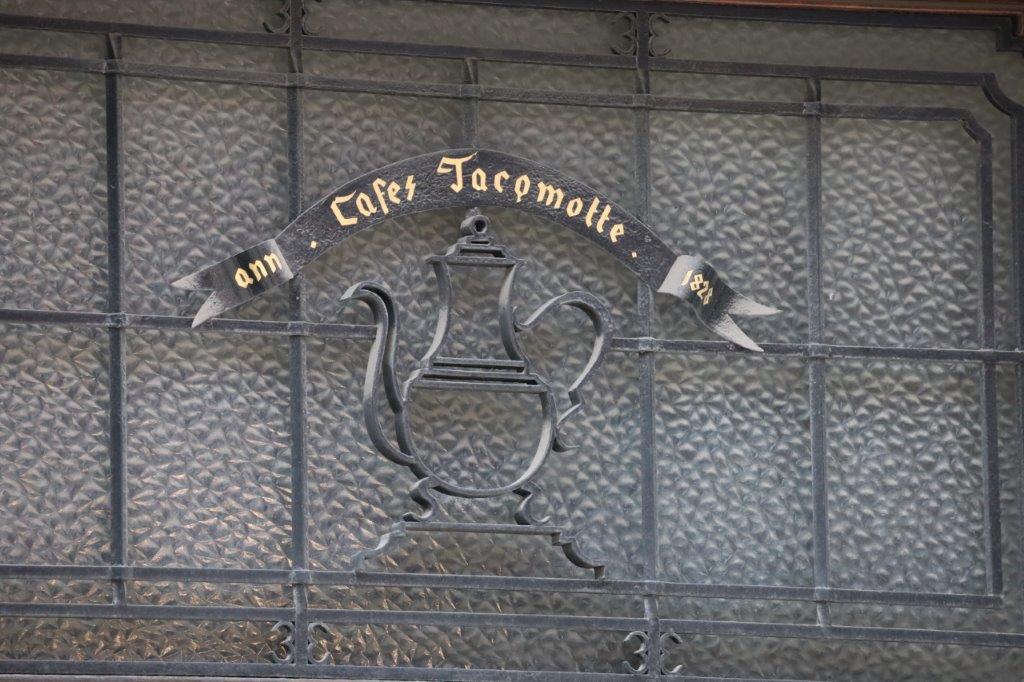
Another streetart painting involving a comic named Steven Sterk, about an abnormally strong boy and his adventures. The artist is Peyo who became world famous after he made another comic named Johan and Pierewiet and in it appeared some very small blue creatures called the Smurfs…
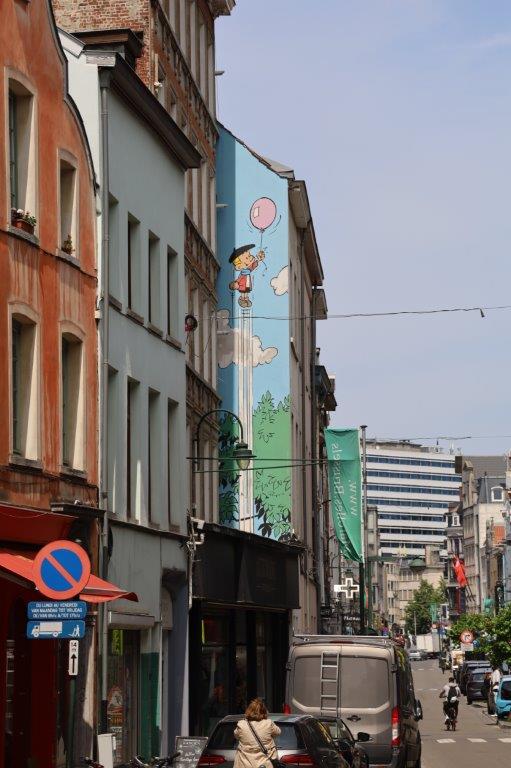
Pierre Culliford (Brussels, 25 June 1928 – ibid., 24 December 1992) was a Belgian cartoonist and screenwriter. He was the creator of the Smurfs, among other things, and was best known by his pseudonym Peyo.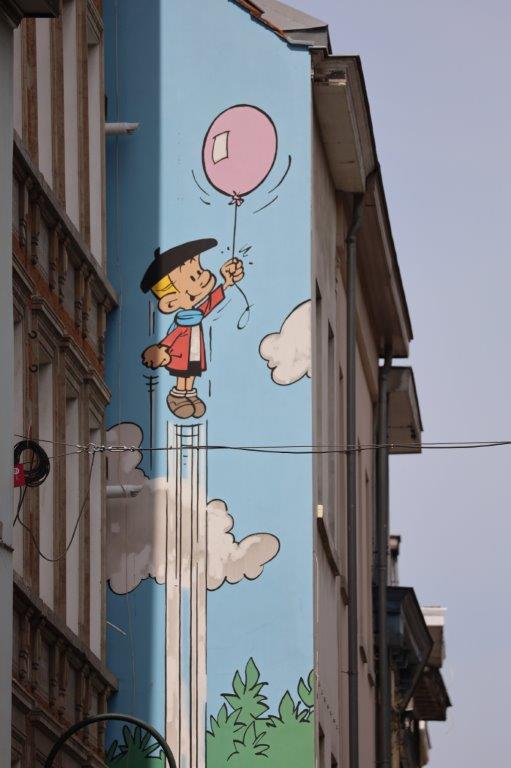 As stated before, the Palace of Justice could be seen from a lot of places in the Marolles, as a constant reminder of what would happen to those falling for crime or more importantly for those resisting the government…
As stated before, the Palace of Justice could be seen from a lot of places in the Marolles, as a constant reminder of what would happen to those falling for crime or more importantly for those resisting the government…
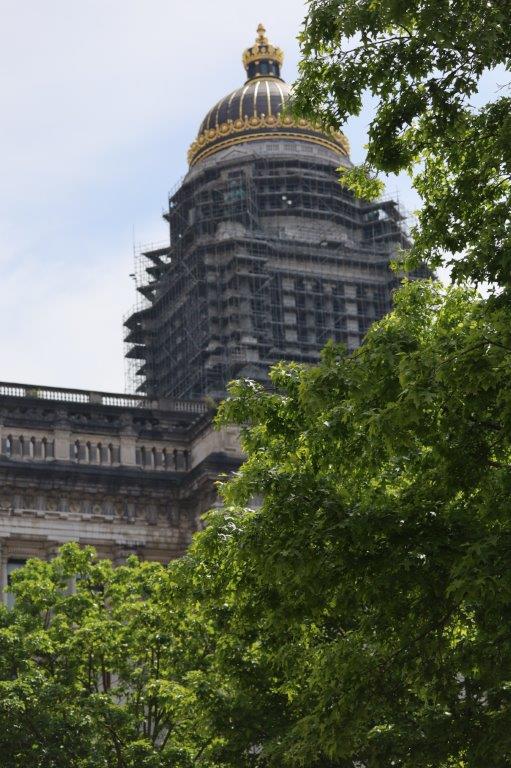
A few steps further, at Hoogstraat number 130, Pieter Bruegel’s house boasts a 16th-century facade, with bricks whose cleanliness reflects the spirit of the entire neighborhood.
Within a few years, this will become a museum.
In the meantime, the painter’s name adorns the green banners hung in these streets…
It is time to mention another work by Pieter Brueghel.
It is called: The large Tower of Babel.
Breughel’s work had a severe impact on François Schuiten’s and Benoit Peeters’ work for the Obscure Cities and they expressed this impact mainly in their very best work named: The Tower.
François Schuiten’s graphic novel The Tower (original French title: La Tour) is set in a fantastical world centered around an immense, ancient stone edifice known as the Tower. The protagonist, Giovanni Battista, is one of the many maintainers charged with repairing the crumbling structure. As Giovanni notices his fellow workers abandoning their posts and the rate of decay increasing, he embarks on a journey through various deserted and mysterious regions of the Tower, seeking answers and meaning amid the deterioration. He encounters characters like Elias and Milena, uncovers prophetic hints about the Tower’s origins and fate, and ultimately faces a surreal transition into a fully colored world, only to be drawn into a battle that echoes scenes he previously encountered in paintings within The Tower. The Tower is directly inspired by Pieter Brueghel the Elder’s iconic paintings of the Tower of Babel.
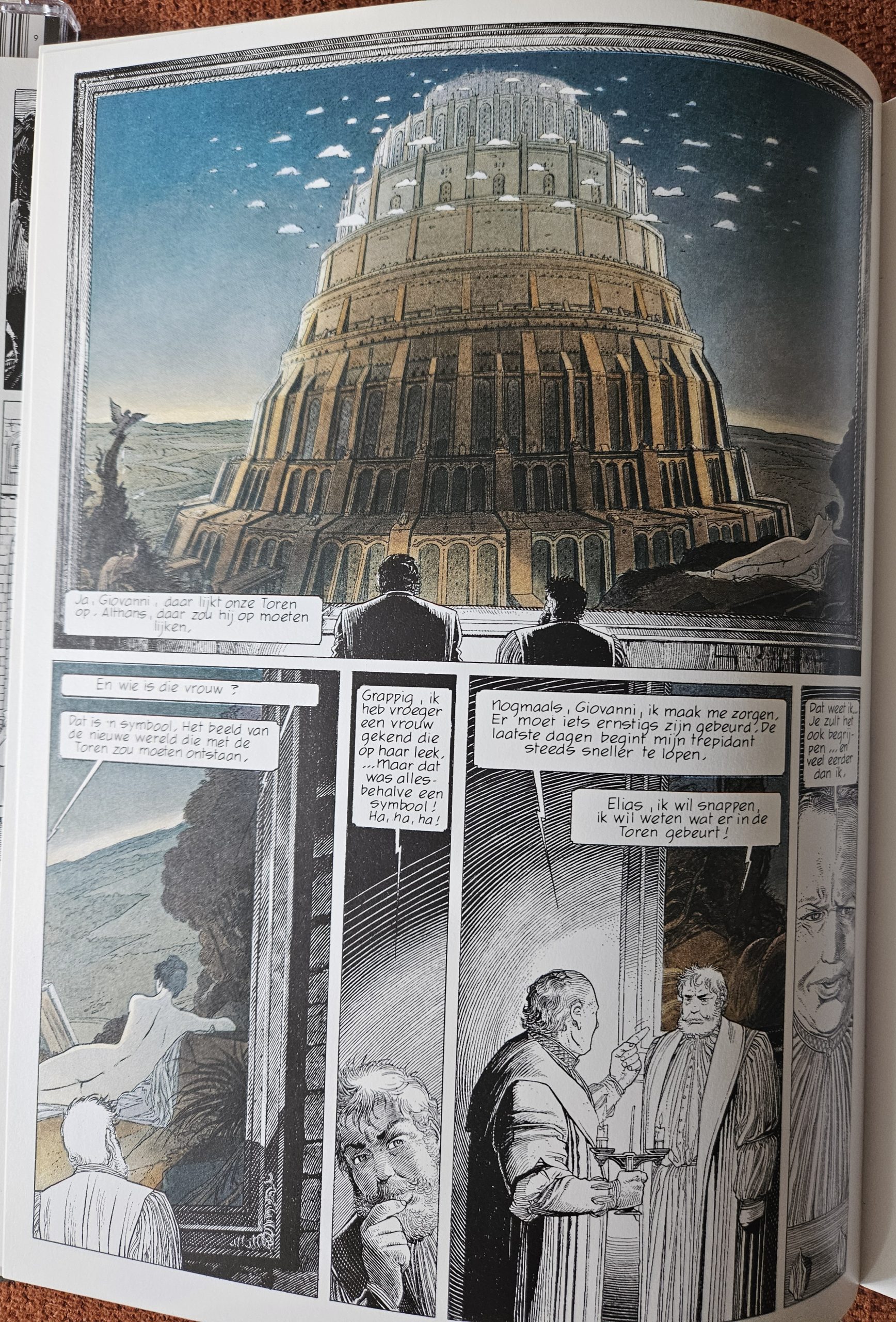 Schuiten and Peeters’ starting point for the graphic novel is Brueghel’s vision of a vast, never-completed tower, which serves as both a literal setting and a metaphorical exploration of the limits of human ambition. The Tower in the graphic novel, much like Brueghel’s depiction, is so immense that its completion seems impossible. Workers inhabit abandoned, decaying corners of the structure, desperately trying to stave off collapse even as construction continues elsewhere. This echoes Brueghel’s symbolic message about the vanity, hubris, and inevitable failure of monumental human projects. It also echoes the neverending building project of the Palace of Justice.
Schuiten and Peeters’ starting point for the graphic novel is Brueghel’s vision of a vast, never-completed tower, which serves as both a literal setting and a metaphorical exploration of the limits of human ambition. The Tower in the graphic novel, much like Brueghel’s depiction, is so immense that its completion seems impossible. Workers inhabit abandoned, decaying corners of the structure, desperately trying to stave off collapse even as construction continues elsewhere. This echoes Brueghel’s symbolic message about the vanity, hubris, and inevitable failure of monumental human projects. It also echoes the neverending building project of the Palace of Justice.
The visual language of Schuiten’s The Tower also references the architectural grandeur and spiraling, endless quality of Brueghel’s paintings. Brueghel’s Tower of Babel, with its unstable arches and perpetual upward spiral, underscores the transience and folly of earthly efforts, a theme that Schuiten expands upon by bringing the viewer on an existential journey through neglect, memory, and the blurred boundaries between reality and art.
In summary, Schuiten’s The Tower is both a homage and a reinterpretation of Brueghel’s Tower of Babel, using graphic storytelling to meditate on the same themes of impermanence, the pursuit of knowledge, human hubris, and the ultimate incompleteness of all grand designs.
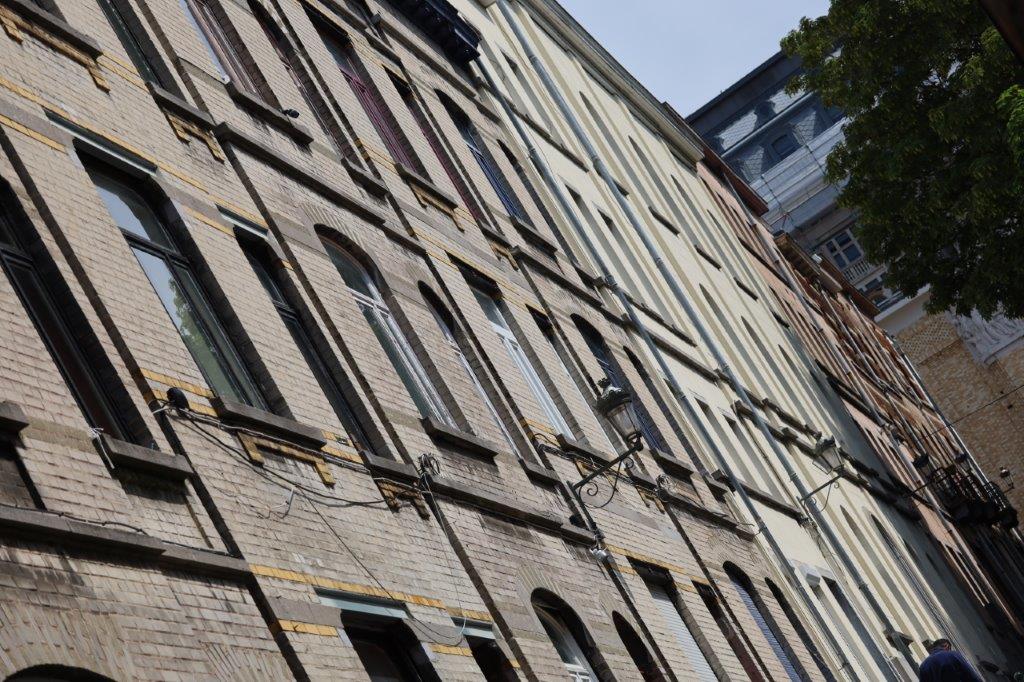
The Wandelgek now began zigzagging between the Hoogstraat and the Miniemenstraat, using the Rodepoort, Kristinastraat and Tempelstraat ending in the Miniemenstraat and following it a while.
It was possible from the Miniemenstraat to quickly take the elevator up to the Palace of Justice and enjoy the view from above over the Marolles. The Wandelgek went up and then down again (it’s free of charge) to continue his walk…
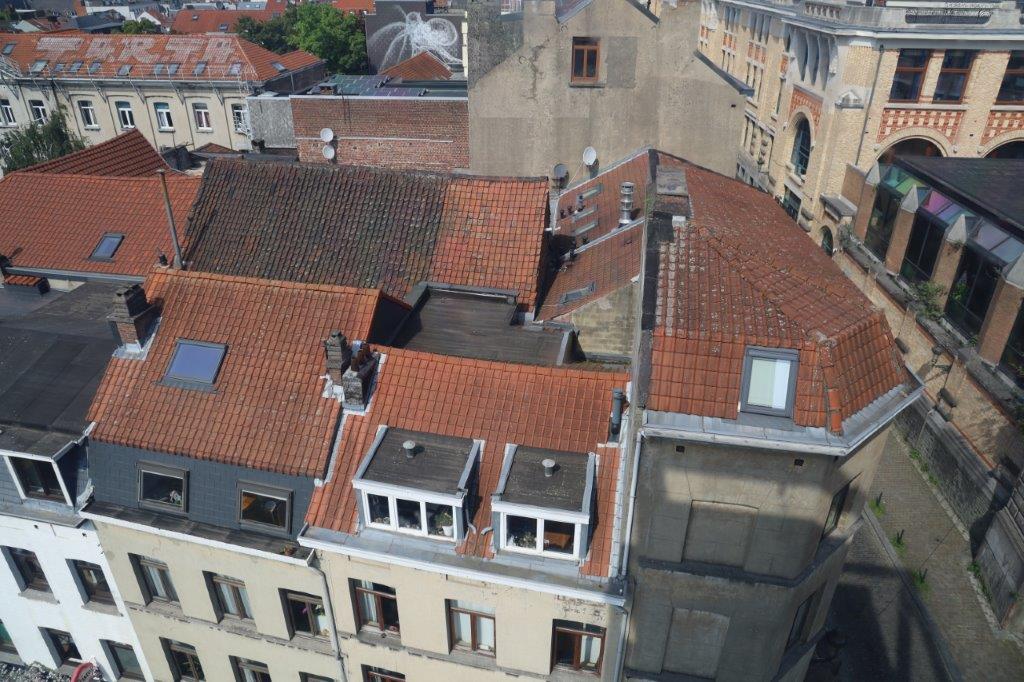
One of the more worthwhile buildings in this area is the Atheneum Robert Catteau, with its high modernized brick walls…
… and the Palace of Justice towering above …
Where the Hoogstraat boasts old medieval buildings, …
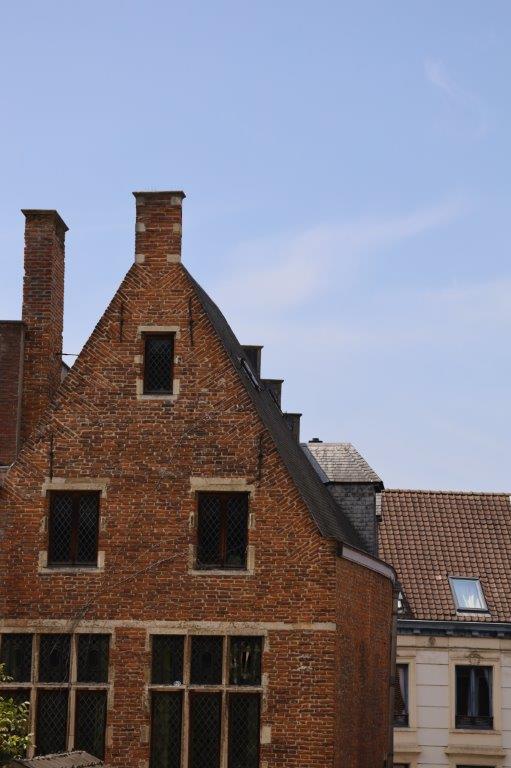 … the Miniemenstraat is a chaotic mix of boring gray flatlike office buildings under the Palace of Justice, towering above and art galleries and antique shops…
… the Miniemenstraat is a chaotic mix of boring gray flatlike office buildings under the Palace of Justice, towering above and art galleries and antique shops…
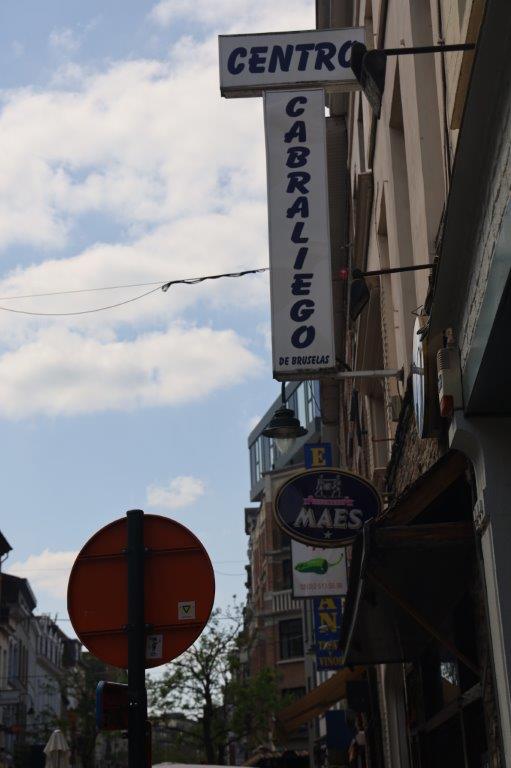 The small streets mentioned before were mainly residential areas…
The small streets mentioned before were mainly residential areas…
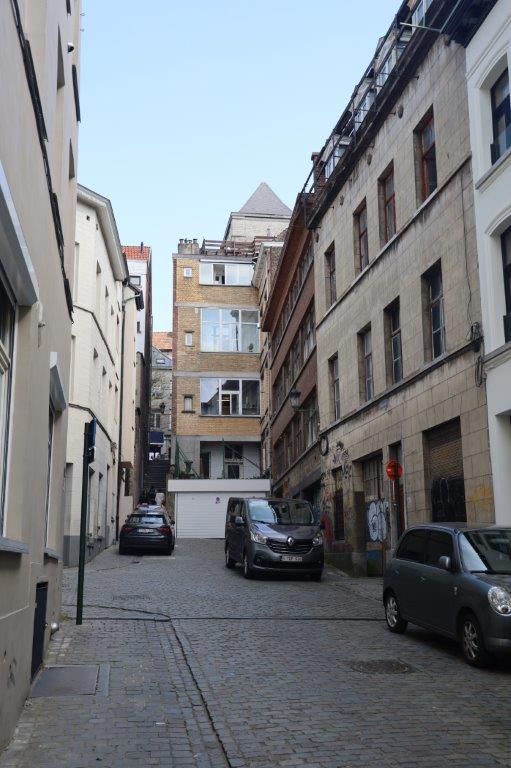 He was now nearing the Zavel Tower area…
He was now nearing the Zavel Tower area…
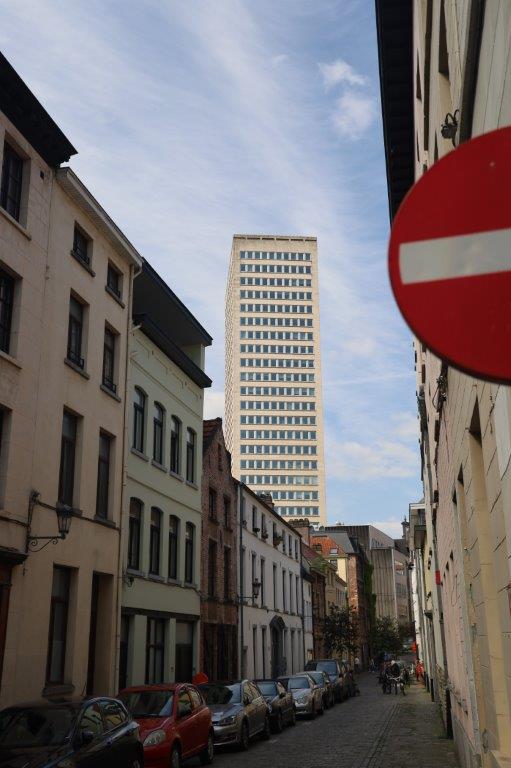 Next
Next
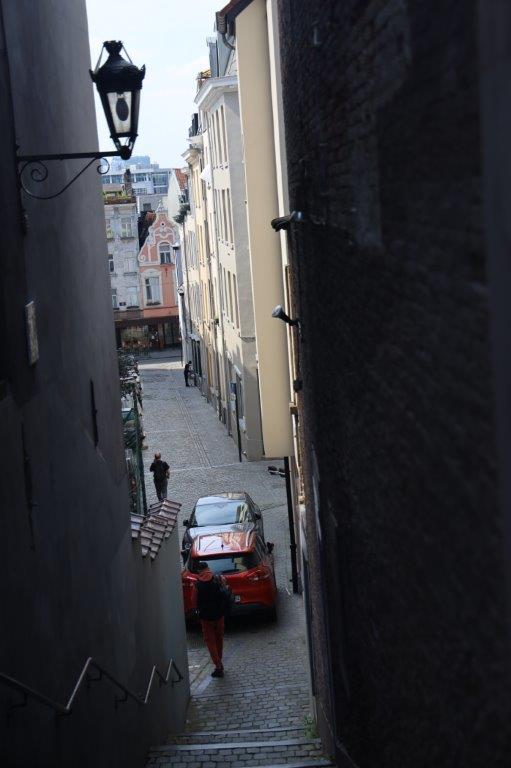 Another really beautiful building was the Sint Jan and Stevenskerk, with the wonderful mix of flemish baroque and classicistic architecture of its façade…
Another really beautiful building was the Sint Jan and Stevenskerk, with the wonderful mix of flemish baroque and classicistic architecture of its façade…
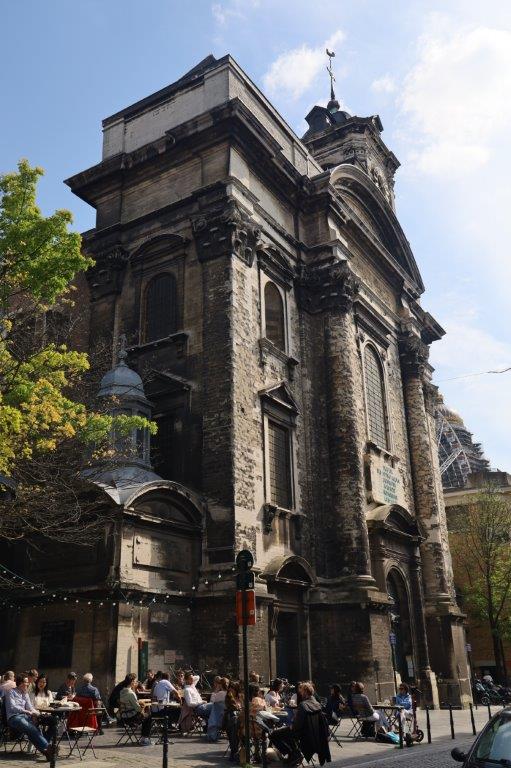 I actually like these buildings at about number 51 of the Miniemenstraat. Just past the Sint Jan en Stevenskerk… …
I actually like these buildings at about number 51 of the Miniemenstraat. Just past the Sint Jan en Stevenskerk… …
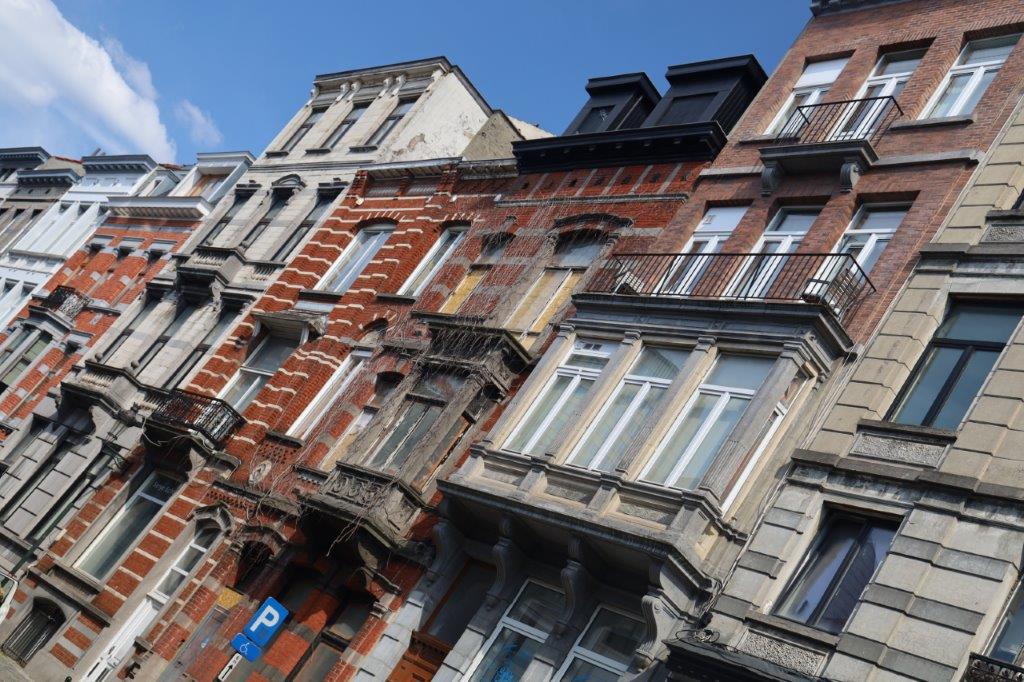 The Jewish Museum of Belgium, in the centre of Brussels, has a permanent collection of objects belonging to Jewish customs, initially from Europe, Asia and Africa, dating back to the 18th century. The best represented are objects from the region east of the Rhine and the countries around the Mediterranean Sea.
The Jewish Museum of Belgium, in the centre of Brussels, has a permanent collection of objects belonging to Jewish customs, initially from Europe, Asia and Africa, dating back to the 18th century. The best represented are objects from the region east of the Rhine and the countries around the Mediterranean Sea.
The Jewish Museum of Belgium is housed in a monumental eclectic-style building from 1900, designed by architect O. Flaneau. This site previously housed the mansion of Brussels lawyer and ULB founder Pierre-Théodore Verhaegen, which made way for the current warehouse at the end of the 19th century. Until the First World War, it was occupied by the Deutsche Schule, a former school for German-language education in Brussels. The building later became the property of the National Archives, and the Jewish Museum finally opened there in 2005.
In November 2020, it was announced that the building would be thoroughly renovated and expanded to six floors. The renovations are scheduled for completion by 2025.
Now turn left at Duivenstraat and walk via the Joseph Stevenstraat to Emile Vanderveldeplein …
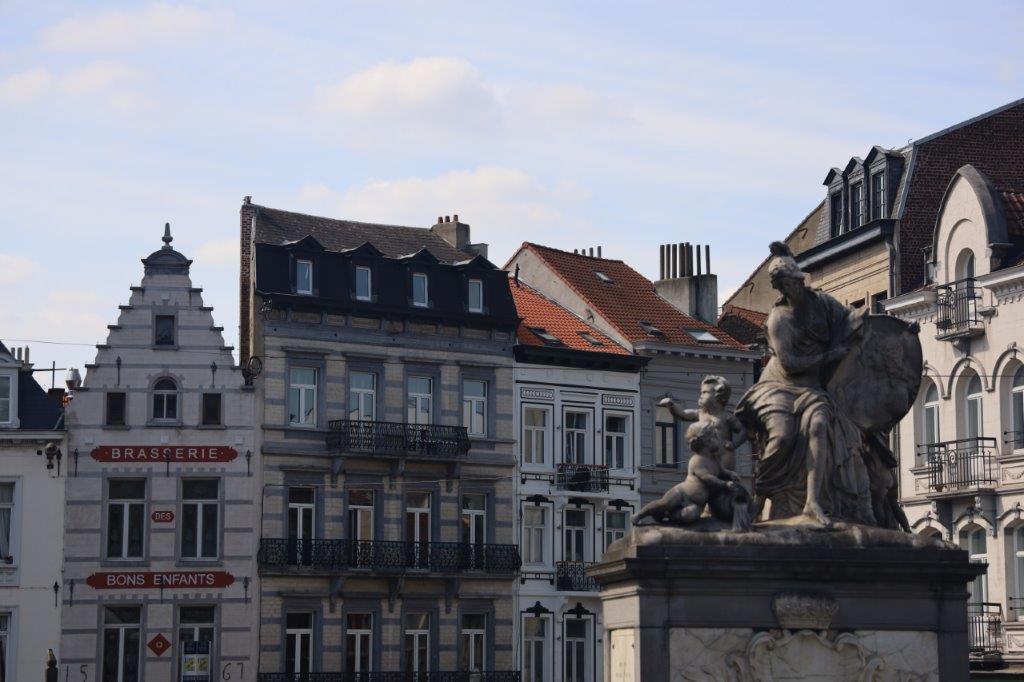 Between the beautiful old medieval and art nouveau style buildings it was strange to see the Zavel tower, a stone and glass building rise high above…
Between the beautiful old medieval and art nouveau style buildings it was strange to see the Zavel tower, a stone and glass building rise high above…
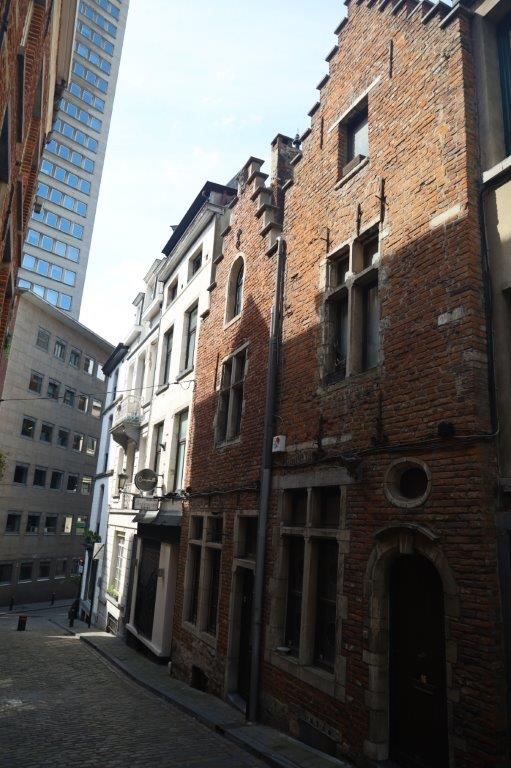 … it seemed a bit like this beautiful old town …
… it seemed a bit like this beautiful old town …
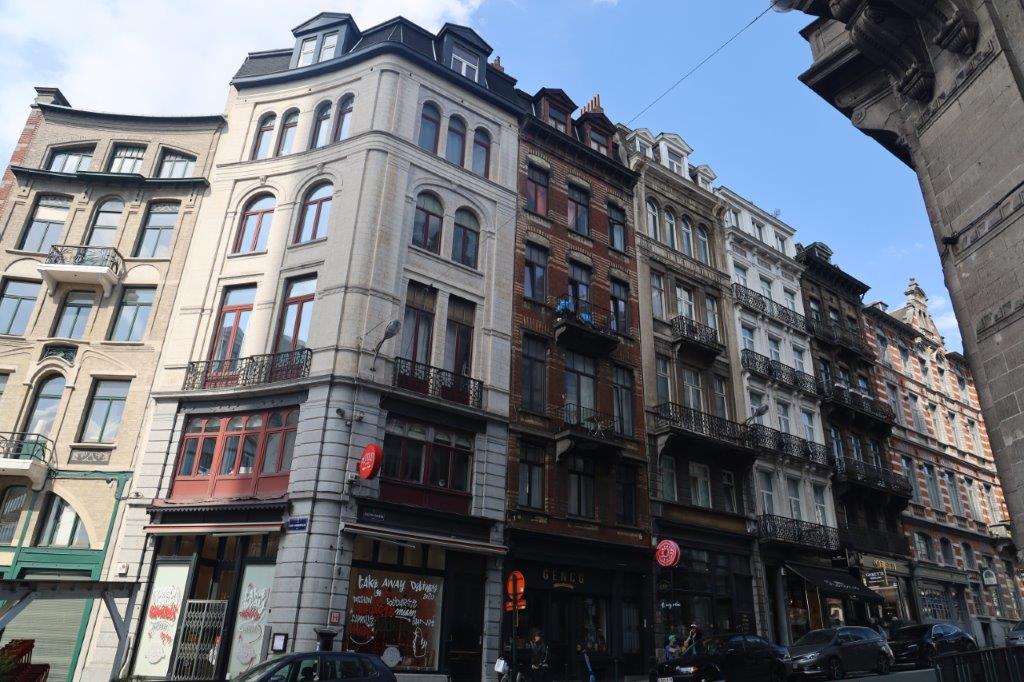 … almost perfect in its charm …
… almost perfect in its charm …
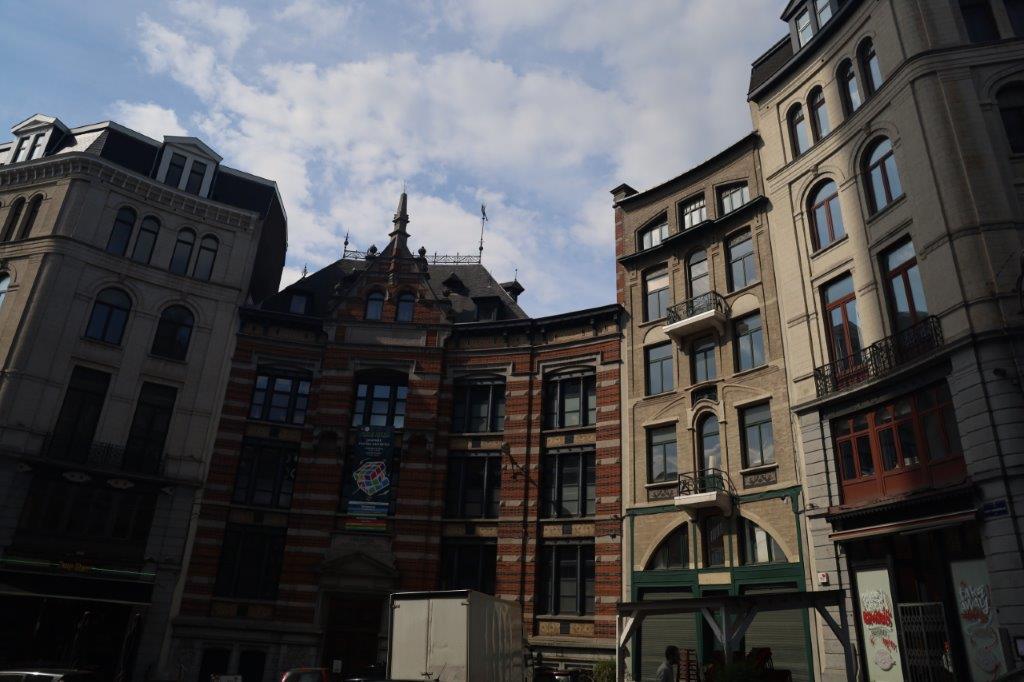 … but then roughly disfigured by large concrete towers that even in height surpass that of the Palace of Justice.
… but then roughly disfigured by large concrete towers that even in height surpass that of the Palace of Justice.
Although in itself, the Zavel Tower can be seen as a wonderful feat of modern architecture, it is a shame that it had replaced the wonderful Volkshuis.
Arriving at the Emile Vanderveldeplein, you could have enjoyed the view over the the beautiful Volkshuis (People’s House) designed by Victor Horta, if you had been visiting this place before 1965 …
The name Volkshuis is the Dutch translation of Maison du Peuple, the name given to one of the largest Art Nouveau buildings in Brussels, designed by architect Victor Horta. The building was located on Joseph Stevensstraat in the Zavel district.
Designed by Victor Horta and completed in 1899, the Volkshuis (Maison du Peuple) was demolished in 1965 despite an international protest movement of more than 700 architects. Schuiten considers the demolition as a huge cultural loss; He calls the building a masterpiece and an example of modern architecture. For Schuiten, the demolition symbolizes the irreplaceable loss of the architectural and social heritage of Brussels. Elements of the People’s House were scattered after the demolition, so that a chance of reconstruction was lost permanently. Such events make the need for the “transfer” and protection of architectural heritage extra clear to Schuiten, a theme he often touches on in his work.
Schuiten’s fascination with towers appears prominently in his graphic novel “The Tower” (La Tour), which, while fictional, draws heavily on real-world architectural inspirations and explores themes of mystery, decay, and the timeless presence of monumental structures. Reviews of “The Tower” emphasize that the architecture itself becomes the central character, with Schuiten investing more attention in the built environment than the people occupying it.
The structure—be it real or imagined—embodies grandeur, enigma, and often, a kind of melancholy due to abandonment or decline. Schuiten’s renderings celebrate both the physical and symbolic significance of such towers, and the interplay of light, shadow, and intricate detail reflects his deep respect for their mystique and historical gravitas.
While no direct statement was found specifically about the Zavel tower, it’s clear Schuiten venerates such iconic, storied buildings as symbols of human aspiration and the passage of time.
The drawing below also shows the added noodle like frivolity of a Horta addition to the Zavel Tower, which in reality is not present. A shame it isn’t.
Next The Wandelgek walked toward the Kapellemarkt (Chapel Square).
The church is located on the Place de la Chapelle / Kapelleplein, between the Rue Haute / Hoogstraat and the Rue de la Chapelle/ Kapellestraat. This site is served by Brussels-Chapel railway station.
Here you will also find the Church of Our Lady of the Chapel.
The Brussels Chapel Church (French: Église de la Chapelle) is the popular name for the Gothic Church of Our Lady of the Chapel, located at the end of Hoogstraat, near the working-class Marollen district. The church and its name refer to a chapel outside the city walls, founded by Duke Godfrey I of Brabant in 1134. It is actually a small miracle that this church has been saved from all the demolishments by the project developers.
Next to the Gothic Church of Our Lady stood the beautiful Volkshuis (People’s House) designed by Victor Horta.
From the Kapellemarkt it is only a short walk to the beginning of the Blaesstraat, but do not enter it yet. First walk to the Brigittinekerk (Brigit Church) for quick look.
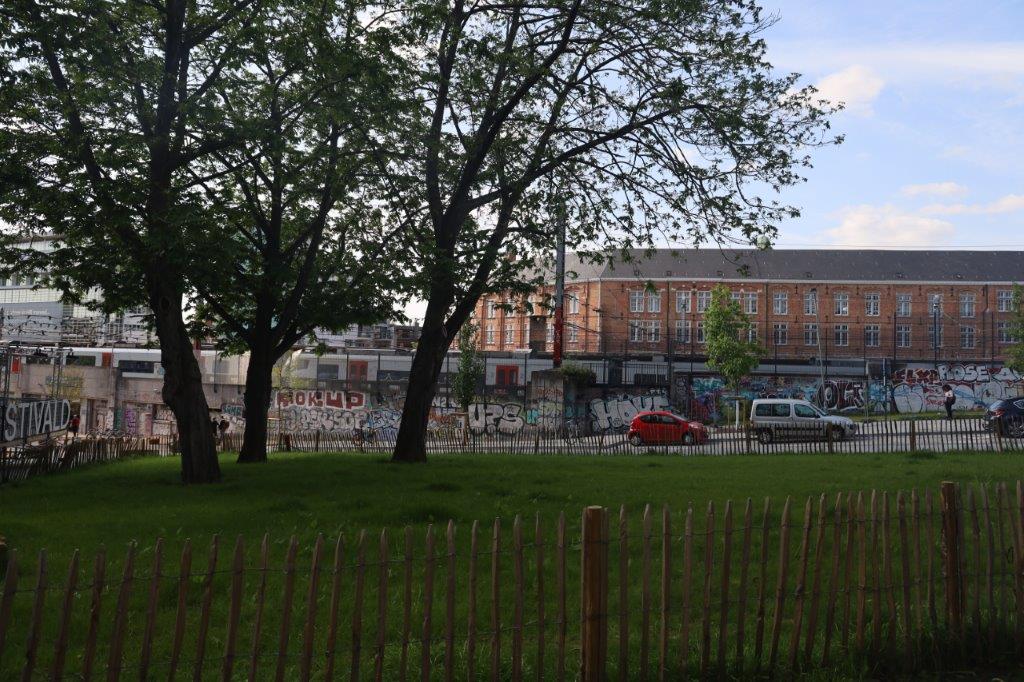
The Brigittinekerk (17th century church) has had several destinations through the years and also escaped from being demolished. Nowadays (since 1997) it is housing the Centrum voor Hedendaagse Bewegings- en Stemkunst van Brussel.
Next to the old church, an expansion has been built…
Next walk back to the beginning of the Blaesstraat en start following it for a long while …
Another Comic Streetart wall can be found to the left at the Ons Heer Straat (Our Lord Street).
George Remi (Remi, George) ER GE or Herge, is called the father of the European Comic (or better: Text balloon comic), because after his first publications of Totor, he started a text balloon driven comic named Tintin (Kuifje). In the beginning he also had time to make some other comics like e.g.: Kwik en Flupke, which was about two rascals living in Les Marolles, who were playing all sorts of pranks, mischief and accidental mishaps like e.g. Max und Moritz…
The Blaesstraat is full of galleries. Brol shops and genuine antiquities stores …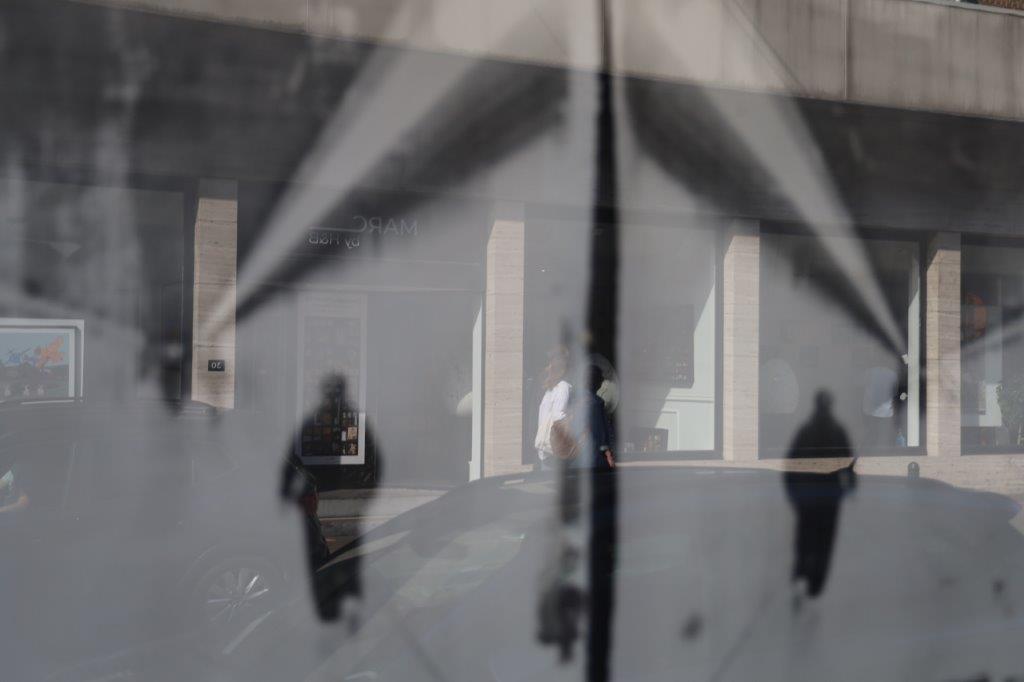 It is really fun just looking and browsing through all the shop windows, exposed goods on the pavements and entering the shops to get completely lost …
It is really fun just looking and browsing through all the shop windows, exposed goods on the pavements and entering the shops to get completely lost …
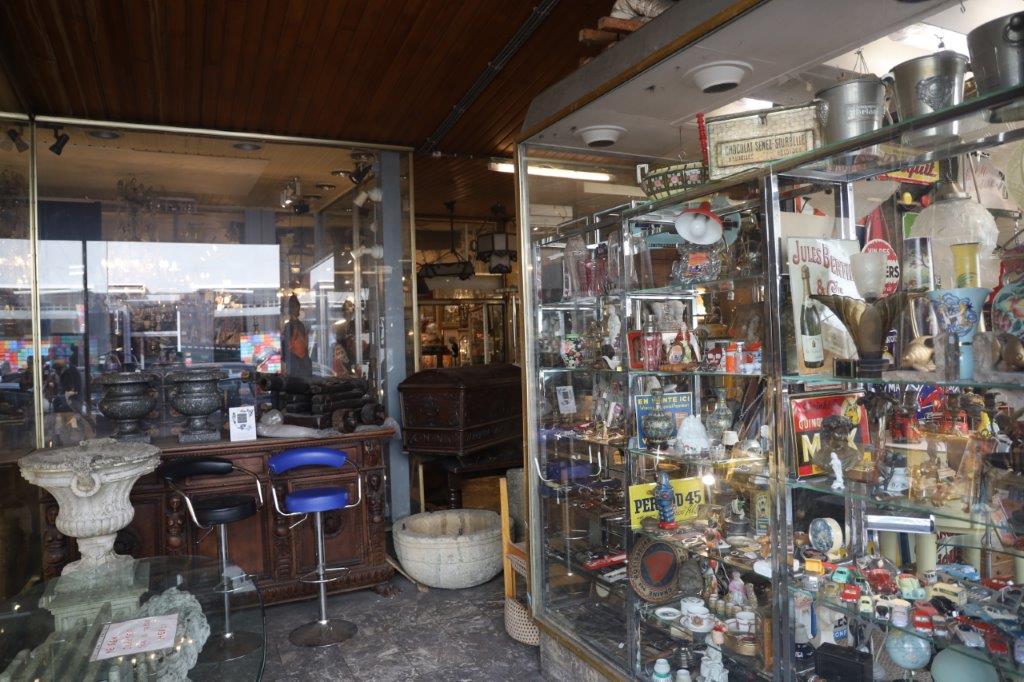 Some shops seem to have everything imaginable…
Some shops seem to have everything imaginable…
… and even more …
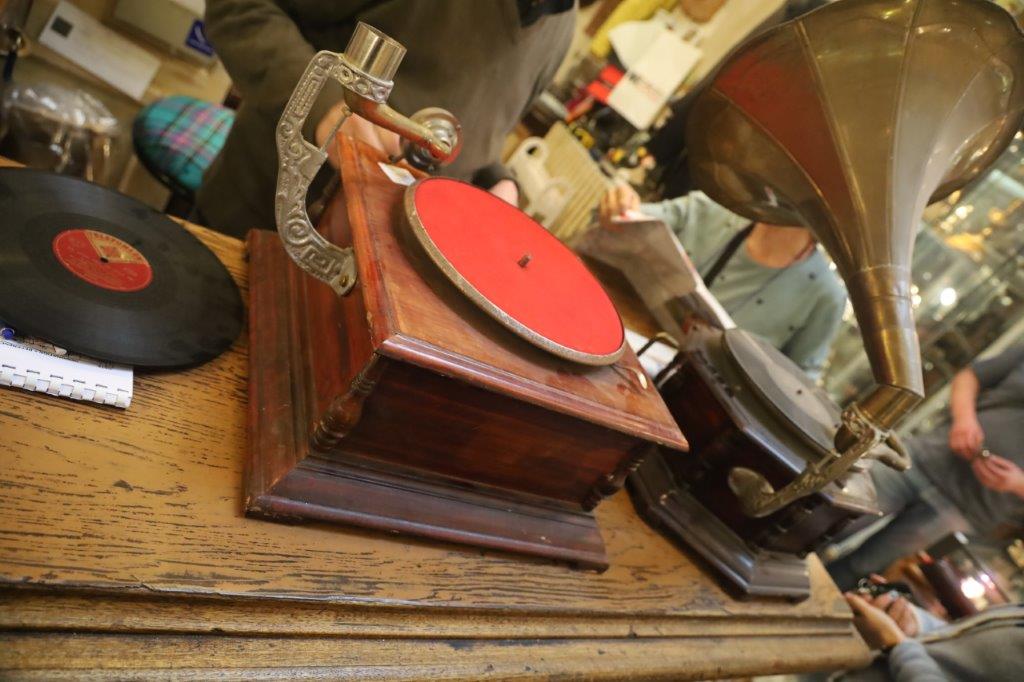 The Wandelgek had been looking for a decorative old 78 rpm record player that was payable too and here he found several types from original oldies to decorative copies. Needless to say he decided to buy one with some records and needles included. It even worked, although it took some experimenting to do so…
The Wandelgek had been looking for a decorative old 78 rpm record player that was payable too and here he found several types from original oldies to decorative copies. Needless to say he decided to buy one with some records and needles included. It even worked, although it took some experimenting to do so…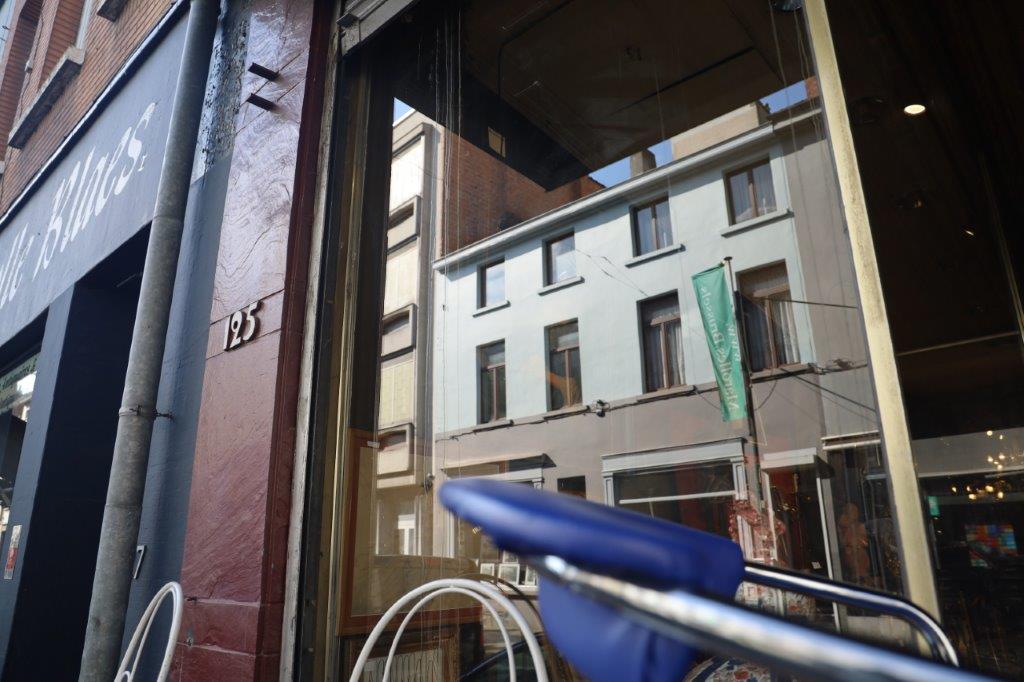
Another comic wall, at the Kapucijnenstraat, is that of Blondi and Blinki, by Jijé. Jijé long ago left together with Morris and Franquin to America to learn more about drawing comics. They met there with Uderzo who was working at Disney studio’s.
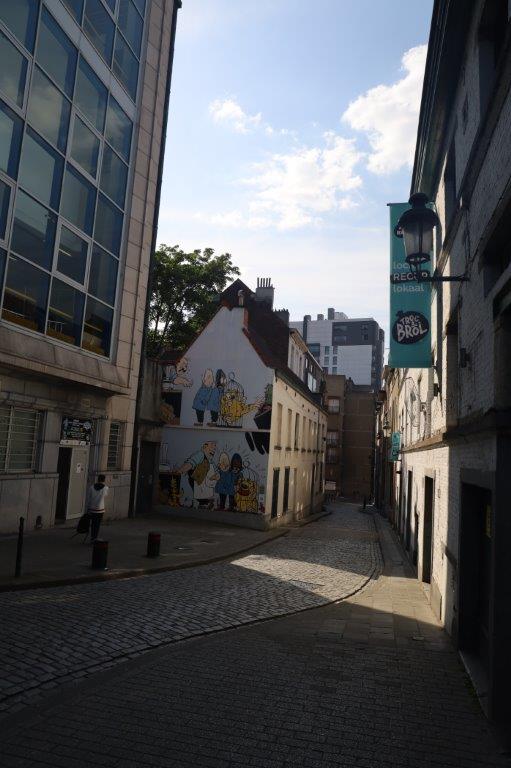
Joseph Gillain (better known by his pen name Jijé; 13 January 1914 – 19 June 1980), was a Belgian comics artist, best known for being a seminal artist on the Spirou et Fantasio strip (and for having introduced the Fantasio character) and the creator of one of the first major European western strips, Jerry Spring.
At the Spiegelstraat, The Wandelgek who was now carrying his grammophone and several scored comic books, decided to stop his walk through the Marolles and turned left toward the elevator…
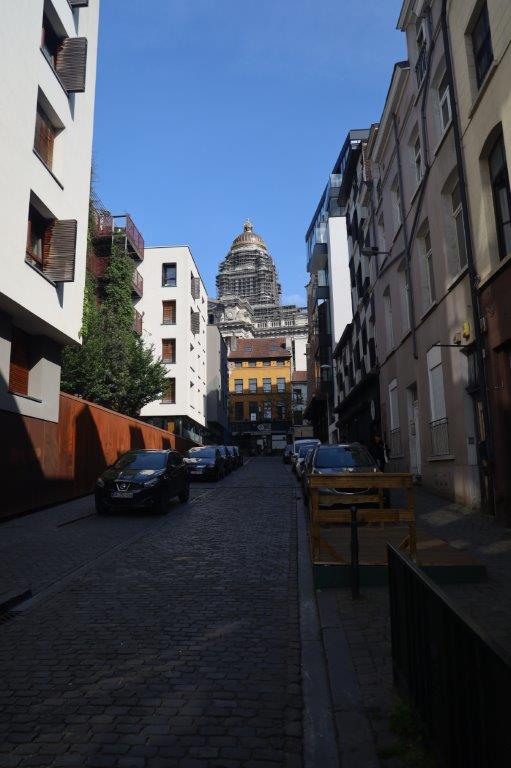 The Palace of Justice was looming above The Marolles, which had changed from one of the bad neighborhoods or poor quarters of Brussels into a lively attractive neighborhood where locals as well as tourists love to roam around.
The Palace of Justice was looming above The Marolles, which had changed from one of the bad neighborhoods or poor quarters of Brussels into a lively attractive neighborhood where locals as well as tourists love to roam around.
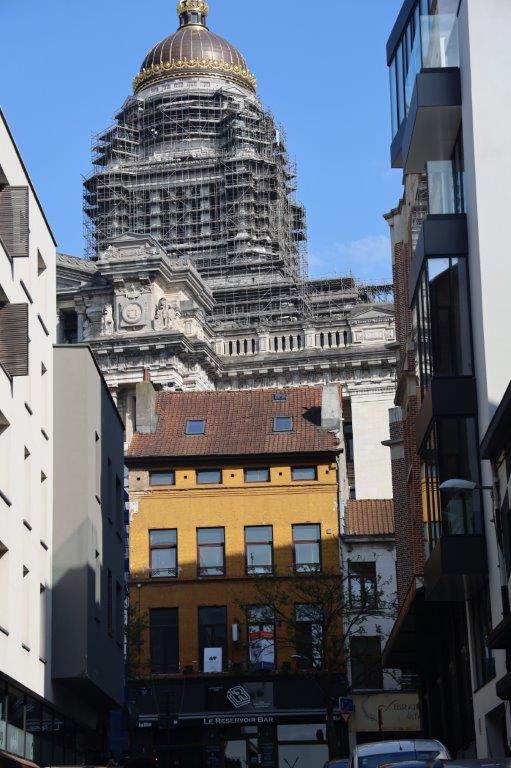
After the ascend to the Poelaertplein, The Wandelgek returned to the Louise/Louiza tube station.
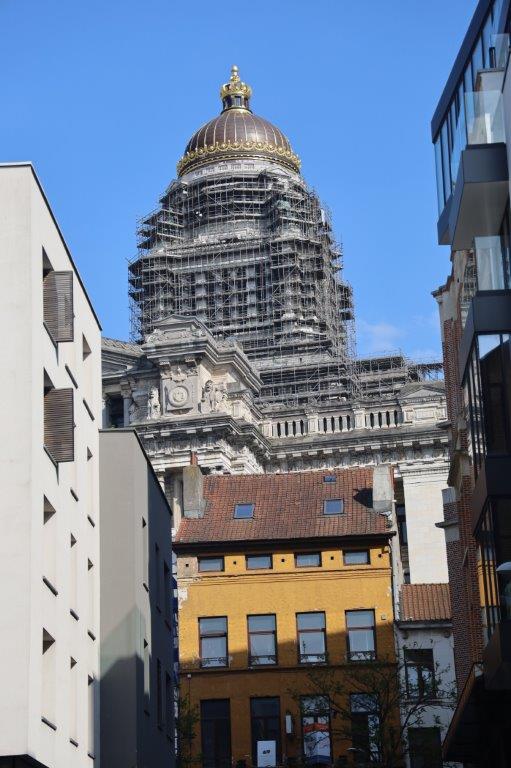 He now took a metro to the Hallepoort tube station.
He now took a metro to the Hallepoort tube station.
See my next blogpost for more Brussels adventures trailing François Schuiten.

